
February 28, 2010
EARTHQUAKE
IN CHILE
Photo
by Sebastian Martinez/Associated Press: A
Friend in Need


Editorial
Notebook
Why Do Sled Dogs Run?
By VERLYN KLINKENBORG
February
14, 2010
At 10 degrees,
the Minnesota air is just cold enough for the dogs with heavier coats,
like the left wheel-dog, who dips his snout in the snow more often
than the dogs ahead of him. I am seated in the basket of the sled,
as stiff as a quartered moose. Behind me, riding the runner, is the
musher, Kelly Murphy. We slow now and then to let the teams behind
us stay close, and when we do, the dogs — seven of them, right
and left of the gangline hooked to their harnesses — look impatiently
at us, haunches quivering, ready to pull and pull again.
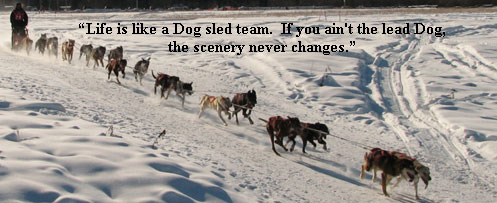
We
have been sledding down an old portage road, along the lip of a beaver
dam, through a tunnel of young white birch with rosy bark, all within
the Boundary Waters Canoe Area Wilderness. Now we break onto the open
ice, wolf tracks looping away to the low, wooded islands in the distance.
I take my turn at the handle bow — riding where the musher rides,
minding the brake — while Murphy jogs ahead of the dog team.
They follow him in a wide curve, cutting a new track that will eventually
lead us back to the place on the portage where, overnight, the wolves
reduced a deer to a few scraps of hide. We are six miles out from
where we started, so this is only a sprint for the team.
I listen to the one-way singsong between Murphy and his dogs, encouragement
and caution and admiration. I watch the driving legs ahead of me —
28 of them — on dogs whose frames are small and light, nothing
like the creatures I’d imagined. And as we cut through the white
ash swamp, hissing across the ice, I find myself wondering, why do
sled dogs run?
It is not a matter of driving them. All the work is in pacing them,
restraining them. When Murphy stands on the brake and sets the snow
hook — a two-pronged anchor — the gangline quivers with
tension. The dogs torque forward again before he can shout, “Let’s
go!” All the one-word answers to my question are too simple:
love, joy, duty, obedience.
The dogs were out yesterday, and they’ll be out again tomorrow.
They don’t run for a reward or toward a goal — the greyhound’s
mechanical rabbit. They get yelled at when they chew on the gangline
and petted when the run is over. They don’t catch or flee anything.
They would keep running if the musher fell off his sled.
The start is a mayhem of yelping and baying and yipping. The finish
is 21 dogs, three teams’ worth, silently lapping the air with
their tongues. And between the two — start and finish —
is a reason the dogs describe in the only way they know how, by running
and running and never letting the line go slack.
Quote:
LEWIS GRIZZARD


Hype,
Money and Cornstarch: What It Takes to Win at Westminster
By DAVID SEGAL
PORTLAND,
Ore.
February
14, 2010
Raymond
Pittman is wearing a jacket and tie and sweating slightly
as he readies his bichon frisé, a white  powder
puff of a dog, for show time. He combs, spritzes and combs
some more. The bichon, officially named PaRay’s Rime
Time but known to friends and fans as Sloan, will soon glow
like a frosted, 60-watt light bulb. powder
puff of a dog, for show time. He combs, spritzes and combs
some more. The bichon, officially named PaRay’s Rime
Time but known to friends and fans as Sloan, will soon glow
like a frosted, 60-watt light bulb.
It’s two minutes before a best-in-breed competition
at the Rose City Classic , a four-day series of dog shows
held here in January, and Sloan has a glint in her eyes that
says, “We both know I’m adorable.” Despite
the perspiration, Mr. Pittman, a professional dog handler,
looks just as confident. “She’s the No. 1 bichon
frisé in the country,” he says, daubing corn
starch on the fur around Sloan’s snout with a paintbrush.
“I’m not sure there’s a lot of competition
here today.”
Ten feet away, the competition is lying down and getting some
rest. This is Apollo, a bichon owned by Jerry Pound and Gay
Culpepper, a married couple from Spanaway, Wash. They know
that letting Apollo recline could curl his underbelly fur,
and that won’t win points with the judge in what is,
essentially, a beauty pageant. But they aren’t about
to force the animal to stand up if he’s tired. “Our
dog’s a pet first and a show dog second,” says
Mr. Pound, a retired Air Force engineer who is well over 6-foot-3.
“They don’t even own the dog,” he says,
gesturing toward Mr. Pittman and his assistant, who is holding
Sloan’s hindquarters in an attention-getting grip that
makes it impossible for her to sit. “I do it for the
fun. They do it for the bucks.”
The bucks. They are the not-so-secret key to success at this
and other top dog shows held every year. On Monday, when Madison
Square Garden in Manhattan hosts the 2010 Westminster Dog
Show , the most prestigious event on the thoroughbred canine
calendar, money will quietly play a role in determining the
winner, just as money quietly shaped the field of contenders
— and just as money shapes almost every nook and cranny
of the dog show business.
Among breeders, owners and handlers, it’s understood:
you can’t just turn up with the paradigm of the breed,
if such an animal exists, and expect a best-in-show ribbon.
To seriously vie for victory, a dog needs what is known as
a campaign: an exhausting, time-consuming and very expensive
gantlet of dog show wins, buttressed by ads in publications
like Dog News and The Canine Chronicle .
Seriously, ads. Lots and lots of them. They usually hype recent
victories at local shows, with the hope of influencing judges
at future competitions. “A top 10 toy dog!” reads
a recent full-pager for Bon Bon the Pomeranian, listing an
assortment of triumphs under a picture of the animal panting
atop some logs.
The cost of a campaign can add up fast. You need a professional
handler and cash for plane tickets and road trips to roughly
150 dog shows a year. (Yes, about three shows a week.) And
you need to spend as much as $100,000 annually on ads. Altogether,
a top-notch campaign can easily cost more than $300,000 a
year, and because it takes time to build momentum and a reputation,
a typical campaign lasts for two or three years. Kathy Kirk,
who handled Rufus, a colored bull terrier who won best in
show at Westminster in 2006, estimates that the dog’s
three-year campaign cost about $700,000.
“Money is important in everything,” says Ms. Kirk.
“The Olympics, auto racing, everything. The big bucks
wins.”
Most A-list dogs are owned by well-off patrons — groups
of them, in many cases — who often leave pets with handlers
for years at a time. Sloan, for instance, is in Year 2 of
her campaign and lives with Mr. Pittman at PaRay Kennel in
Orangevale, Calif.
Sloan’s owners are a married couple, Laura Rosio and
Martin Winston. Ms. Rosio, who describes herself as a groupie
for her dog, sits ringside at the Portland shows and happily
explains what owning a marquee dog is all about. “She’s
incorporated,” says Ms. Rosio, nodding toward Sloan
and beaming. Then she reaches into her purse and hands over
the dog’s business card.
AMERICANS spend about $330 million each year traveling to
and competing at dog shows, according to the American Kennel
Club . The shows support a huge network of kennel clubs and
exhibitors, and many are sponsored by pet food manufacturers
like Eukanuba and Pedigree. To those companies, the shows
are a way to connect with elite handlers, an important demographic
known in the industry as “pet influentials.”
Westminster is the Olympics of this sport — or hobby,
or whatever — attracting an audience of three million
viewers on the Animal Planet channel. It is the culmination
of some 1,500 dog shows in the previous year, a race that
begins in January with shows like the Rose City Classic, held
in the immense Portland Metropolitan Exposition Center. Here,
recreational vehicles and trailers pack the parking lot. Exhibitors
include fine-art dog portrait painters and the International
Canine Semen Bank.
Most of the dogs here are handled by weekend hobbyists, known
as owner-handlers, and among them you detect a certain fatalism
about their chances. “It’s political” is
the euphemism you hear time and again. That can sometimes
mean that a certain judge is known to have specific prejudices
for or against a certain dog, usually based on aesthetics
but occasionally based on considerations that seem —
sorry about this — more catty.
One handler said that an owner had refused to send him and
his much-garlanded charge to Westminster this year because
the owner was feuding with the judge who would appraise the
breed.
Most of the time, though, “it’s political”
refers to a widely perceived bias in favor of professional
handlers and campaigning dogs, known to insiders as “specials.”
Nobody thinks the outcomes are rigged. But it’s assumed
that the playing field is far from even, especially at major
events. Suffice it to say, nobody can remember an uncampaigned
dog prevailing at Westminster. About the closest thing to
a surprise was last year’s winner, Stump, a Sussex spaniel
who had been retired for four years. But Stump was far from
unknown. Before his retirement, his handler showed him at
more than 100 shows in one year.
“We didn’t come here expecting to win,”
says Chris Jones, who is standing beside his wife, Glenda,
and a Newfoundland, preparing for the Portland competition.
Like all owner-handlers, the couple think their dog is stunning,
but she’s young and her rivals include some specials.
“It’s because the professional is in front of
judges all the time and they’ll say, ‘Oh, if Andy
is showing that dog, the dog must be really good.’ ”
That sentiment highlights how tricky it is to pinpoint the
influence of money at this dog show and others. Only promising
dogs are campaigned, so it’s hard to know whether their
success is a cause or an effect of the cash spent promoting
them onto winners’ stands. And because prominent handlers
have their pick of dogs and wouldn’t want to risk their
reputations with a stinker, it would make sense for a judge
to assume that these handlers have brought standouts. In addition,
the pros are generally better at presenting a dog.
“You hear from owner-handlers often that there is a
supposed advantage for professionals at shows,” says
Mr. Pittman, whose lifelong passion for dogs began with his
first word, puppy. “But I think that’s an excuse.
The professionals know what they’re doing. They groom
well, present well, manage the ring well. There’s a
reason that they became professionals.”
Judges deny any kind of favoritism, though they acknowledge
just how subjective their choices are. This show, like Westminster,
is a conformation competition, which means the winner is the
dog that most closely embodies the breed standard as defined
by the American Kennel Club.
The standards are highly specific. The one for the basset
hound, for instance, is more than 900 words long and includes
guidance on size, coat, gait and head. (“The lips are
darkly pigmented and are pendulous, falling squarely in front
and, toward the back, in loose hanging flews. The dewlap is
very pronounced.”) Still, deciding which basset hound
is the basset houndiest isn’t easy because every judge
brings his or her own priorities and preferences to the task.
To the lay person at a dog show, distinctions seem impossible
because a group of, say, golden retrievers all 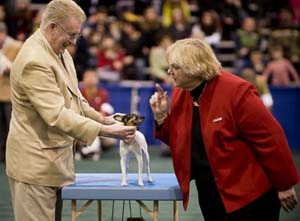 look
alike. But judges and professional handlers say that once
you know the breed, the problem is that all the dogs look
different. The hard part isn’t telling them apart. It’s
figuring out which version of excellence to favor. look
alike. But judges and professional handlers say that once
you know the breed, the problem is that all the dogs look
different. The hard part isn’t telling them apart. It’s
figuring out which version of excellence to favor.
“There’s 95 golden retrievers here today,”
says Tracy Tuff, a professional breeder and handler from Canada,
who was preparing several dogs for Rose City . “They
all have different colors, different size, different bone
structures. With 95 of them, that’s three hours’
worth of judging just golden retrievers. A judge can get a
little lost in that. They start to go golden blind.”
The presence of a pro, she says, offers a cue that many judges
find invaluable.
“By
showing up, judges seem to say, ‘Thank God you’re
here because I don’t know what to pick,’ ”
says Ms. Tuff. The owner-handlers, of course, are less excited
to see her. “I hear a lot of four-letter words. A lot
of ‘oh, you’re here,’ ” she says,
imitating a crestfallen rival. “Yeah. Sorry.”
IN the lead-up to the bichon frisé competition, the
owner-handlers Jerry Pound and Gay Culpepper are standing
in one of two hanger-size rooms where all handlers prep. Their
operation is little more than two small tables and a blow
dryer, plus their dogs, Apollo and Dreamer. At moments, they
sound mildly irked about the perceived advantage that professionals
take into the ring. Mr. Pound has measured his dogs and found
they fit the standard almost to the letter, whereas he and
his wife find the PaRay Kennel dogs — Sloan included
— a little on the square side.
“These guys are supposed to be more rectangular,”
Ms. Culpepper says, pointing to Apollo. “But a standard
is very subjective.” Then again, the couple marvel at
the skills of the PaRay professionals, particularly when it
comes to presentation.
Mr. Pound calls Paul Flores, who grooms Sloan, an artist,
saying “he’d be a sculptor” if he wasn’t
working with dogs. You have to wonder: Why do the thousands
of owner-handlers compete if they believe that the fight isn’t
totally fair? “It’s gets us out of the house on
the weekends,” says Ms. Culpepper. “We don’t
sit in front of the TV. We travel and we get to socialize
with people who care about the same things we do.” “And
we win just enough to keep our interest,” adds Mr. Pound.
“We have beaten PaRay in the past.”
The more time you spend at the Rose City Classic, the more
unpredictable the results seem. The universe of winners is
dominated by specials, but it is one random universe. Dogs
have just as many quirks as judges. On some days, they’re
engaged and alert. On others, they cower from judges, a major
no-no.
So somehow, elite dog shows seem both overdetermined and surprisingly
arbitrary. And it’s the sense that anything can happen
that explains the otherwise perplexing tradition of doggy
advertising. The ads are a bit like those “for your
consideration” campaigns for Oscar nominees, and they’re
bought for essentially the same reason: to sway decision makers
in a realm in which there is debate about what is “the
best.”
Lobbying
for a St. Bernard, for instance, wouldn’t work if everyone
agreed about what constitutes a great St. Bernard . And if
St. Bernard greatness were the sort of thing that could be
measured with a ruler and calipers, you wouldn’t need
judges. A computer would suffice. But there is no unanimity
about St. Bernards or any other breed, and judges are human.
So
at magazines like Dog News, the ads keep pouring in. Often
called the bible of the dog show world, Dog News is a weekly
published by Harris Publications out of an office on Broadway
in Manhattan. Other titles in Harris’s eclectic stable
include Guns and Weapons, the hip-hop title XXL and the comic
book Vampirella. Most magazines are struggling with a downturn
in ads. Not Dog News. It’s about 75 percent ads and
runs as long as 600 pages in issues coinciding with big shows.
Prices vary from $250 for a full-page black-and-white ad to
$4,000 for the cover.
Yes, the cover is an ad.
“I don’t have a single staffer to solicit ads,”
says Matthew Stander, publisher of Dog News. “They come
to us unsolicited.”
Judges are the main target — they are sent the magazine
gratis — and they star along with the dogs in most of
the ads. There’s a tradition at shows of taking a photograph
of winning dogs along with the judges who selected them, and
most of the ads are little more than that photo and a cutesy
tag line. “Don’t hate me because I’m beautiful,”
reads a recent ad for Prissy the dachshund, “Love me
because I’m a weinner!” The judge usually gets
a shout-out, too. (“Thank you Judge Mrs. Bonnie Threlfall.”)
Not surprisingly, it’s hard to find a judge who says
the ads work. One said she browses out of vanity, to see if
her outfit looks good enough to wear again. One Portland judge,
Betty-Anne Stenmark, is slightly more generous. “Do
the magazines influence some judges? I’m sure they do,”
she says. “Do they influence everybody? No. Do I see
a dog who looks great in the magazines and think I’d
love to judge that dog? Yes.”
Professional handlers and owners say they wouldn’t write
the checks if the ads didn’t get results. There are
thousands of specials in any given year, and in a realm this
competitive, the ads elevate you above the pack, they say.
Just by buying them, you announce that you’re playing
to win.
WHAT do owners get back for their rather substantial investments
in these dogs? Not money, and woe unto the foolish reporter
who suggests that money might be a perfectly reasonable reward.
(Only indie rockers and physicians are more sensitive to questions
about profits.) By every account, a show dog is a sinkhole.
Even for a Westminster champ, the stud fee is a few grand.
Rufus will die before he makes a dent in the sum spent on
him.
Pet food companies like to brag about the number of Westminster
group winners who eat their product. But Nike they are not.
The best handlers are courted, but with nothing more valuable
than the occasional hat, tote bag and coupons for discounted
chow. When Uno the beagle won best in show at Westminster
two years ago, his owners weren’t paid even when Purina
featured him in a full-page USA Today ad.
No, the strange and inescapable truth is that people drop
hundreds of thousands of dollars in this realm for one reason:
they love dogs. Or, rather, they love a specific breed or
dog and they are willing to part with a small fortune proving
that their breed or dog is better than yours.
“In this building alone, I can name you three millionaires
who don’t breed dogs; they’ve never bred a litter
in their life,” says Tracy Tuff, the handler from Canada.
“They just like to throw money at people like us to
show good dogs.”
The owners come from so many different backgrounds and professions
that they are hard to categorize. Mr. Winston, Sloan’s
co-owner, is in nuclear medicine, his wife, Ms. Rosio, said.
This is their first campaign, and their reasons for competing
are very personal. “It’s like having a child in
middle school and you realize that kid can play baseball,”
says Ms. Rosio, “and for the next two or three years
you do everything you can for the kid to play ball. It’s
the same thing. We have four kids and they’re grown
now. This is our new baby.”
The role of money doesn’t seem to bother anyone other
than the owner-handlers, perhaps because campaigns have been
extremely pricey since the ’70s.
David
Frei, the public face of the Westminster Dog Show , sounds
mostly unbothered by the sums. Well, 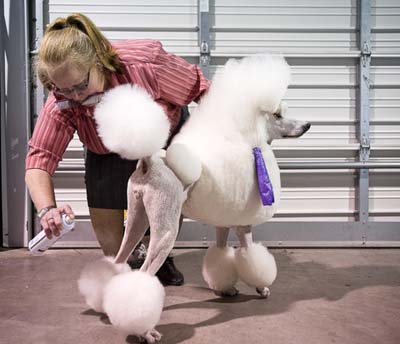 he
is disturbed by rare reports of people mortgaging their homes
to show their dogs. And now that so many dogs have multiple
owners, he is done trying to read all of their names during
the telecast. “People say to me, ‘Why didn’t
you read off the names of all the owners?’ ”
he says. “Well, if the dog has six different owners,
that’s the only thing I’d get to say about the
dog.” he
is disturbed by rare reports of people mortgaging their homes
to show their dogs. And now that so many dogs have multiple
owners, he is done trying to read all of their names during
the telecast. “People say to me, ‘Why didn’t
you read off the names of all the owners?’ ”
he says. “Well, if the dog has six different owners,
that’s the only thing I’d get to say about the
dog.”
With luck and a stellar performance, Sloan might be a name
that Mr. Frei utters when it’s time to announce the
winners. She trotted to a rather quick victory over Apollo
in Portland, padding around the ring with a champion’s
poise, a tiny snowbank on paws. When the show begins in Madison
Square Garden, she’ll have everything she needs to take
home top honors: wealthy patrons, an esteemed handler and
an expensively won reputation — to put it in dog-fancier
terms — as a terrific little bitch.
Photos:
Leah Nash for The New York Times
Sloan and her handler, Raymond Pittman / Barbara Wood judges
Dana Plonkey's toy fox terrier /
Summer, a standard poodle, with her groomer, Penny Dugan
|


Is your pooch worthy of Westminster?
A judge sniffs out the talent on NYC streets
By BRIAN NIEMIETZ
February 13, 2010
It’s
February in New York, and across the city, the finer hotels are booked
to capacity. Glamorous parties abound, and behind the scenes, skinny
bitches are having their hair and nails done, getting ready to strut
for a discerning audience. No, we’re not talking about Fashion
Week — but rather the Westminster Kennel Club’s 134th
annual dog show, which takes place Monday and Tuesday.
Unlike
the fashionistas at Bryant Park, these models won’t hesitate
to devour a 4-pound steak, relieve  themselves
on the nearest fire hydrant and forgo the after-party at Avenue. As
Madison Square Garden prepares to evaluate the canine crème
de la crème, The Post took David Frei, the show’s host
of 21 years and a licensed judge, to Tompkins Square Park to check
out the local talent.
themselves
on the nearest fire hydrant and forgo the after-party at Avenue. As
Madison Square Garden prepares to evaluate the canine crème
de la crème, The Post took David Frei, the show’s host
of 21 years and a licensed judge, to Tompkins Square Park to check
out the local talent.
While not all these pups are purebreds — a Westminster requirement
— he says a lot of them still have the right stuff. “Your
own dog is best in show. There’s no question,” says Frei,
who owns a cavalier King Charles spaniel and a Brittany. “If
you’re sitting at home and you have a boxer sitting on the couch
next to you, you’re going to be rooting for the boxer in the
show. You’re going to say, ‘Hey, you and I could be out
there, too, if I just fed you a few less cookies and maybe gave you
a bath every month rather than every six months.’ ”
Frei agreed to ignore the rigid technical principles applied to the
2,500 dogs competing at the Garden —  and
instead concentrate on what makes the canines at the local dog park
unique.
and
instead concentrate on what makes the canines at the local dog park
unique.
Right out of the gate we found our Best Hair winner: a handsome Australian
shepherd named Ash whose owner, Jack Barley, could’ve won the
award as well. “I brush him once a day,” says Barley of
the 11⁄2-year-old pooch, claiming Ash recently did a photo shoot
with the indie band Vampire Weekend. In addition to Ash’s handsome
locks, Frei noted that our blue ribbon winner also has two blue eyes,
which is rare for this breed.
Moving on, there were no bones about our award for Biggest Dog. At
110-pounds, a 11⁄2-year-old Bernese mountain dog named Esse
took the prize. When Augustus, a 41⁄2-month-old Neapolitan mastiff,
grows up to be 150 pounds, that title will likely be his. Right now,
he’ll have to settle for our Cutest Puppy honors. “There’s
no such thing as an ugly puppy,” Frei adds. Augustus was still
bigger than Ivan, a Yorkshire terrier who — at about 5 pounds
— won our Smallest Dog award.
Our next prize went to another pint-size pooch — our Best Dressed
winner Zula, a French bulldog sporting a black-and-white skull-and-crossbones
sweater. “It isn’t even her best outfit,” claims
Zula’s walker, Chelsea Gavin, noting  her
client “has a Chihuahua sister — they have matching outfits.”
her
client “has a Chihuahua sister — they have matching outfits.”
One breed is so popular that Frei gave it its own category. Scotties
are “the No. 1 dog in the country right now,” he says,
and they’re expected to fare well at Westminster this year.
(Scottish terrier Sadie is the paws-down favorite to win next week.)
Among the canines present, however, Frei’s Best Scottie choice
was Memphis, a 12-year-old born in France.

There’s no mongrel category at Westminster, but if there were,
our Best Mix winner, Leela, would be a strong candidate. “She
has a great look to her,” says Frei of the bulldog-beagle mix.
But when it came down to it, a purebred pooch took the biscuit. Frei
awarded the grand-prize Best in Park to Niko, a 9-month-old beagle
who he said had the best shot of competing at MSG. Not that his owner
Renata Rzepko would have much say in the matter. “Sure, why
not?” Rzepko said. “But he does his own thing.”
Photo
top right: David Frei
Dog photos by Michael Sofronski, top to bottom: Esse, Memphis, LeelaPhotos:
Michael Sofronski


3
new breeds to be showcased at Westminster show
By VERENA DOBNIK
NEW YORK
Feb. 12,
2010
His name
is Alchemy — a sleek Irish Red and White Setter, high-energy
but gentle. Next week, he'll represent one of three new breeds making
their debut at the Westminster Kennel Club 's world-class dog show
alongside the perennial Labrador retriever — just named America's
top dog for the 19th consecutive year.
Alchemy, a silky-coated canine from New Jersey, will also step outside
Madison Square Garden on Tuesday to ring the closing bell at the Nasdaq
stock exchange. That moment will be beamed live to a Times Square
giant screen.
The two other breeds entering the annual show for the first time are
herding dogs — the Pyrenean Shepherd and the Norwegian Buhund.
 Pyrenean
Shepherd Pyrenean
Shepherd |
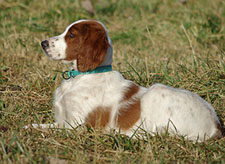 Irish
Red and White Setter Irish
Red and White Setter |
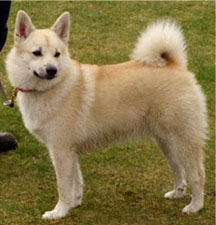 Norwegian
Buhund Norwegian
Buhund |
"It's
exciting for me to see beautiful dogs that finally get recognized
in this country after being around hundreds of years in their home
countries ," said David Frei, a spokesman for the club who co-hosts
the show's live television broadcast.
The so-called Pyr shep, native to the mountains of southern France,
has guarded sheep since medieval times. Its expressive, intelligent
eyes guide a fuzzy, sturdy body in action. The breed comes in two
varieties — rough- and smooth-coated. Hundreds of them lost
their lives in World War I, searching for wounded men or as couriers
or guard dogs.
And the loyal and fun-loving buhund — either black or cream-colored,
with a curly tail — also has existed for centuries, sailing
on Viking ships and working in the Norwegian countryside. "It's
a dog with pointed ears and a thick coat who looks like it's ready
to go to work on a farm, herding," said Frei. "They have
a great work ethic."
Represented by 29 individual dogs in the show, the three breeds made
it into the 134th annual event after being officially recognized last
year by the American Kennel Club , the governing body of the purebed
dog sport in the United States. The show starts Monday.
Several factors are required for AKC recognition: a solid parent club
that oversees the registry, a precise standard for the breed's ideal
dog, and a sufficient population and distribution in the United States.
"They can't all be on some farm in Georgia," joked Frei.
Worldwide, more than 400 breeds of dogs are recognized. Although the
three new breeds in this year's show have long been accepted abroad,
"it took this long for them to receive AKC recognition in this
country," Frei said.
The Labrador retriever was named the top dog in the United States
on Wednesday by the American Kennel Club, followed by the German shepherd
, the Yorkshire terrier and the golden retriever. The ranking is based
on the number of registrations for the breed with the AKC in 2009;
the lab is most popular in Los Angeles.
Westminster's 2010 rookie breeds were to be formally introduced at
a Friday morning news conference at Hotel Pennsylvania, across the
street from the Garden, where they're staying with their owners in
rooms normally used by humans. The occasion was to be broadcast to
local TV stations across the country.
The newcomers bring this year's show total to 173 breeds and varieties,
up from about 150 two decades ago, Frei said. "This is the world's
greatest dog show, with a different cast of characters every year,"
he said.
Anna Jones is bringing 9-year-old Alchemy along with another Irish
red and white setter , 2-year-old Toffy, after a string of other shows
this past year that won the dogs enough points to be declared AKC
champions, a requirement to step on Westminster's green carpet. The
red and white setter — an older breed than the well-known mahogany-coated
Irish setter — is a lean, elegant hunting dog with a mouth soft
enough to retrieve game without damaging it. The breed became almost
extinct in the early 20th century, but was saved by its "fanciers,"
said Frei.
Tuesday afternoon, Jones' two setters and a group of Pyr sheps and
buhunds will be whisked away from Madison Square Garden in a van to
ring Nasdaq's closing bell . Exactly how a dog rings the bell will
remain a mystery until then.
Amid this week's snowstorm, Lisa Donnelly's 18-month-old buhund, Lola,
was oblivious to the excitement leading up to the show. All the pooch
knew was that she'd gotten a bath and wasn't allowed outside her Connecticut
home to play. "She's usually happy, outgoing and low-maintenance,"
said Donnelly. "But now, she's having a hissy fit in the basement,
whining and crying to go out."
The Westminster is the nation's second longest continually held sporting
event, after the Kentucky Derby, according to Frei. The Pyrenean shepherd
and the Norwegian buhund will compete Monday as part of the herding
group. The setters will compete the next day in the sporting group
.
How
about the BULLSHIT (Bulldog-Shih Tzu)?




The Consumption of Dog Meat
Letters to the International Herald
Tribune
February
12, 2010
Roger Cohen
(“Dog days,” Globalist, Feb. 5) is right to call for moral
consistency in the rush to judge  other
cultures. Unfortunately, he takes the wrong lesson from his multicultural
experience. Mr. Cohen’s moral revulsion at eating dog was well-founded.
What he should have learned from his moment of clarity, however, is
that it is equally immoral to consume the pigs, cows, chickens, and
other sentient creatures on whom we inflict unspeakable suffering
and death. When we refuse to consume animal products, we reject the
injustice of treating any sentient creature as a thing for us to use.
Moral consistency does not require us to endorse the consumption of
dogs.
other
cultures. Unfortunately, he takes the wrong lesson from his multicultural
experience. Mr. Cohen’s moral revulsion at eating dog was well-founded.
What he should have learned from his moment of clarity, however, is
that it is equally immoral to consume the pigs, cows, chickens, and
other sentient creatures on whom we inflict unspeakable suffering
and death. When we refuse to consume animal products, we reject the
injustice of treating any sentient creature as a thing for us to use.
Moral consistency does not require us to endorse the consumption of
dogs.
Sherry F.
Colb
Ithaca, New York
The killing of dogs for human consumption repugnant. Dogs once played
a vital role in the security of human life and deserve some credit
for man’s eventual civilization. Furthermore, a friend once
described to me how dogs are killed to ensure that the meat is infused
with the proper flavor. It’s ugly.
Eric Anderson
Teaneck, New Jersey
ORIGINAL
ARTICLE

Dog Days in China
By ROGER COHEN
NEW YORK
February
4, 2010
I see the
Beckhams, David and Victoria (Posh), have acquired a couple of “micro
pigs” as pets and that said pigs (65 pounds when fully grown)
are now a fashionable item in Britain, at least among those who can
afford a $1,000-plus price tag.
Perhaps Beckham is heeding Churchill, who had a penchant for pigs.
The great man’s verdict: “Dogs look up to you, cats look
down on you. Give me a pig. He just looks you in the eye and treats
you as an equal.”
Churchill’s view has some scientific basis. Pigs are smart and
sociable. They’ve had a pretty bad rap, however. Two of the
world’s great monotheistic religions — Judaism and Islam
— prohibit their consumption. Generally, the notion of pigs
as pets seems bizarre or repellent.
Why? There’s nothing rational about the view that taking a pig
for a walk on a leash is weird, while eating a pork chop, if you so
choose, is reasonable. But then, after a visit to China, it seems
to me that reason has little or nothing to do with the way we view
animals and food.
The Chinese, for example, eat dog (as well as cats, but I’m
going to focus on dogs here). They ascribe to dog meat a formidable
“warming” quality — the Chinese divide nutrition
into “hot” and “cold” elements and seek balance
between them — which makes it prized in many regions during
winter.
Now, we are appalled in the West at the notion of eating dog while
considering it natural to have a dog as a pet — I own a Beagle
myself (“Ned”) and I’m very fond of him. This is
the inverse of the preponderant Western view of pigs: fine to eat
(religious objections aside) but not to pet.
But do pigs have any more or less of a soul than dogs? Are they any
more or less sentient? Do they suffer any more or less in death? Are
they any more or less part of the mysterious unity of life? I think
not.
There is a rational, and for some people a spiritual, case for being
a vegetarian: Killing animals is wrong. However I cannot see a rational
argument for saying eating dogs or cats is barbaric while eating pork
or beef is fine. If you eat meat you cannot logically find it morally
or ethically repugnant to eat a particular meat (I’m setting
cannibalism aside here.)
That’s the theory at least. Yet I must confess I’ve been
having a hard time. My bout of anguish began a few weeks back on a
wintry night in central China, in the restless megalopolis of Chongqing.
I was cold, wet and seeking refuge.
“What’s that?” I asked my resourceful interpreter,
Xiyun Yang, pointing to a steamy, crowded establishment with a big
red neon sign (the Chinese approach is, when in doubt, make it gaudy).
“You don’t want to know.”
“I think I do.”
“It’s a dog restaurant.” It was then that I noticed
the image of a puppy with floppy ears beside the Chinese characters.
I gave Xiyun a long, hard look. “Dog’s really good,”
she said. “I love it.”
Images of Ned (and his floppy ears) popped into my head, as well as
thoughts of what I’d tell my daughter, but I’d come to
admire Xiyun’s gastronomic antennae (particularly for Sichuan
noodles) and I tend to adhere to the I’ll-try-anything-once
school. In we went.
The menu was predictably dog-dominated: dog paws, dog tail, dog brain,
dog intestine, even dog penis. We went for a dog broth, simmered for
four hours, with Sichuan pepper and ginger. It was warming, with a
pepper-tingle. The meat was tender, unctuous, blander than pork, but
stronger than chicken. Later, the owner, Chen Zemin, explained how
the best dogs for eating had yellow coats, weighed 30 pounds, and
did miracles for arthritis.
I’ll take Chen’s word for it. Dog was not easy for me.
The memory has proved hard to digest.
As it happened, our meal came shortly before the eruption of a furious
online debate in China over a proposed “anti-animal maltreatment”
law that would outlaw the eating and selling of dog and cat meat,
making it punishable by fines of more than $700 and 15 days of detention.
The legislation, now under review, immediately came under heavy fire.
One restaurant owner in the Chaozhou region declared: “This
is ridiculous! You make dog and cat meat illegal, but aren’t
chickens, duck, goose, pig, cow, lamb also animals?” Another
noted a local saying: “When the dog meat is being simmered,
even the gods become dizzy with hunger.”
I’m with these indignant protesters. I’m not happy that
I ate dog. But I’m happy China eats dog. It so proclaims both
a particularity to be prized in a homogenizing world and its rationality.
Anyone who doesn’t want China to eat dog must logically embrace
pigs as pets.
But, as I’ve learned, logic has its limits. It’s the heart
not the head that governs this world under the sway of the dizzy gods.


Kansas shelter dog gets new home in St. Charles
Georgia Garvey
February
11, 2010
Ranger,
a shelter dog from Emporia, Kansas, enjoyed an unusual trip Thursday
to his new home in St. 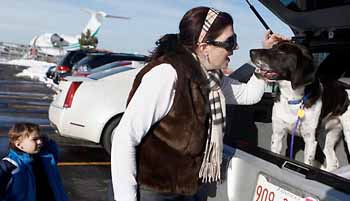 Charles.
Covering almost 650 miles, the trek required the cooperation of several
pilots, a Kansas shelter, rescue organizations and one dedicated family.
Charles.
Covering almost 650 miles, the trek required the cooperation of several
pilots, a Kansas shelter, rescue organizations and one dedicated family.
"This whole thing has been unbelievable," said Kelli Cameron
of St. Charles, Ranger's new owner. "It really is a miracle he's
still alive.
Ranger's tale began in Emporia, Kansas, where animal control workers
found him last summer wandering the street as a stray. Employees
fell in love with the black, grey and white pointer mix, but couldn't
place him in a home and didn't want to put him down.
"We had such a horrible time finding a place for him to
go," said Peggy Derrick, director of the shelter. "We've
been trying desperately to get him adopted out."
In St. Charles, Kelli Cameron eventually stumbled across a Facebook
post labeled "urgent" describing Ranger and warning that
he was about to be put down. Something about the dog's smiling face
sent Cameron into action. She initially tried to place him with a
friend but that didn't pan out. After weeks of delivering daily "Ranger
updates" to her husband, Chris, he surprised her with a plan
of his own. "'We'll take him,'" Kelli Cameron remembered
her husband saying, "'Call the shelter. I know it's crazy.'"
After that, Cameron said a Cape Cod, Mass., rescue organization hooked
up with the shelter and another rescue group in Kansas. The ad hoc
committee then coordinated volunteer pilots to fly Ranger from Kansas
to his new home in Illinois, with two stopovers, one in Missouri and
a second in Iowa.
To find the pilots, Liz Bondarek, who volunteers with an animal rescue
group in Massachusetts, reached out to Pilots N Paws, which transports
rescue animals. Three pilots volunteered to fly a leg of the trip,
with one winding up driving her part after ice in Kansas grounded
the plane.
Bondarek said she realizes some people won't be able to understand
the herculean efforts undertaken on behalf of one shelter mutt.
"Every time (rescue groups) lose a dog, a piece of us dies with
that dog," she said. "These are little, precious souls to
us. They don't deserve to die like surplus."
The dedication displayed by the pilots, the rescue groups and the
Kansas shelter inspired Cameron, a stay-at-home mom of two boys, to
volunteer for animal welfare agencies in her area. "This has
just opened my eyes up to there (being) so many dogs in need,"
Cameron said. "These animals, they need advocates."
Photo:
Lane Christiansen /Tribune



Pooch-poop prosecutor
By STEVEN HIRSCH
February
11, 2010
A Manhattan
prosecutor broke out in laughter yesterday while reading a suspected
animal abuser's 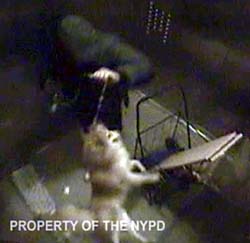 incriminating
statements to the ASPCA.
incriminating
statements to the ASPCA.
Assistant District Attorney Steven Constantiner began laughing while
reading Tiara Davis' statements trying to explain the brutal kicking
she allegedly unleashed on her 4-year-old Pomeranian, Sparky. Davis'
statements contained repeated complaints about the dog's "pissing
and s - - ting."
"He was laughing and had to turn away because he couldn't control
the laughter," said Davis' lawyer, Stacy Schneider. "I couldn't
find the humor."
Erin Duggan, a spokeswoman for the Manhattan DA's Office, said the
prosecutor had "laughed briefly and unexpectedly while reading
to the court the vulgarities the defendant used in her statement."


They
Bark, They Rule
By PENELOPE GREEN
February
11, 2010
There was
a brief confrontation on the coat-check line — some growling,
a bit of pushing — but otherwise the guests at an event held
Tuesday night in the basement of the Muse Hotel on West 46th Street
were extremely well behaved. Part book party, to celebrate the publication
of “It’s a Dog’s World: The Savvy Guide to Four-Legged
Living,” by Wendy Diamond, chief pet officer of Animal Fair,
the pet lifestyle magazine, and part benefit, for the Humane Society
of New York, the “Yappy Hour” welcomed dogs and their
humans from 6 to 8 p.m.
Ms.
Diamond, who has enormous blue eyes and the energy level of a Jack
Russell terrier, greeted guests of all species with a hug. To keep
her hands free, she and her assistant, Kathryn Del Re, passed Lucky,
Ms. Diamond’s Maltese terrier, back and forth all evening. In
her book, Ms. Diamond — who had decorated herself on Tuesday
with a red jersey Marilyn-style halter dress — exhorts dog owners
to decorate defensively, by choosing fabrics, for example, that don’t
contrast with the color of your pet’s fur, and compassionately,
by painting walls with clay paint or lime wash (made without V.O.C.’s),
because, as she writes, “the only force stronger than a child’s
desire to write on the walls is a dog’s desire to lick them.”
What tips would she add to those in the book?
“The most important thing is, Are you sleeping with your dog?”
she said.
Is Ms. Diamond?
“Every night, but I’m not sure it’s the best feng
shui ,” she added, noting that relationships of the human variety
have suffered.
Tuffy, a Chihuahua-poodle mix sporting a red mohawk and satin tuxedo,
arrived with Lourdes LeBron, who shared her own dog-decorating secret:
“Bully sticks — to keep them from chewing on everything
else.”
Israel Cronk came with Dozer, a Boston terrier; he left his bull mastiff
puppy at home in Montclair. Mr. Cronk admitted that Dozer was a “marker,”
which is why he bought a plastic fire hydrant as a living room sculpture.
Really, for inside?
“It’s meant for dogs, and there’s a trough in the
bottom,” Mr. Cronk said. He also swears by his Swiffer and purple
Dyson vacuum cleaner.
One room held a groaning board of cheeses and prepared meats: A banquet
table was covered in banana leaves and slices of mortadella, prosciutto
and soppressata. It looked like a prop from a Peter Greenaway film,
or maybe it was designed to honor some vivid canine fantasy. The air
was thick with the tang of cured meat, and the sound of tiny panting
dogs. Some got lucky.
Grace Forster, who was holding a silky Yorkie like a jeweled baguette
bag, introduced Portia, the Yorkie, as a model. “She’s
on the cover of Yorkshire Terriers magazine,” Ms. Forster said
proudly, offering her card (Portia’s, not Ms. Forster’s).
“She does runway and print.”
Can Portia support herself?
“She doesn’t even pay for her wardrobe,” Ms. Forster
said, describing a closet that included a white lace wedding dress.
“She was married on WE TV,” she said, though to a Shih
Tzu “she didn’t care for. It was not a marriage made in
heaven.”
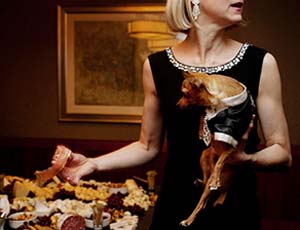 As
it happened, many of the dogs had business cards. Ginger, a teacup
Pomeranian, had one that proclaimed her director of pet relations
at the Muse. Eli’s noted that he was “The Celebrity Chihuahua.”
“Eli was on the Milk Bone box in 2005,” said Karen Biehl
(left), whose black satin and crystal-embellished shift matched her
dog’s black satin tuxedo and “bling” necktie. “I
had to get him an agent.” She offered perhaps the best decorating
advice for would-be dog owners: adopt a Chihuahua. “Eli’s
legs are so short, he can’t jump on the furniture.”
As
it happened, many of the dogs had business cards. Ginger, a teacup
Pomeranian, had one that proclaimed her director of pet relations
at the Muse. Eli’s noted that he was “The Celebrity Chihuahua.”
“Eli was on the Milk Bone box in 2005,” said Karen Biehl
(left), whose black satin and crystal-embellished shift matched her
dog’s black satin tuxedo and “bling” necktie. “I
had to get him an agent.” She offered perhaps the best decorating
advice for would-be dog owners: adopt a Chihuahua. “Eli’s
legs are so short, he can’t jump on the furniture.”
David Hochberg, an artists’ agent, staked out a corner outside
the room of meat. He was notably dog free. “I met Wendy 10 years
ago,” he said. “I was at a benefit performance for something
or other, when I felt someone staring at me. I turned in my seat to
see Lucky’s face right there.”
Mr. Hochberg is allergic to dogs, he admitted, but a big fan of Ms.
Diamond’s. He brought his inhaler to the party.
Photo:
Julie
Glassberg/The New York Times


Cute puppies in Valentine e-mail carry nasty
surprise
BY SANDRA GUY Sun-Times Columnist
February 11, 2010
Fewer people
are sending old-fashioned Valentine's Day cards, and experts warn
that the e-cards that  are
replacing them might include fakes that will infect your computer
with malware.
are
replacing them might include fakes that will infect your computer
with malware.
Last year, 41 percent of consumers bought Valentine's Day cards, compared
with 50 percent in 2007, the latest comparison year, according to
Unity Marketing, a marketing consulting firm in Stevens, Pa. The trend
toward consumers buying fewer greeting cards is expected to continue
this Valentine's Day, said Pam Danzinger, the company's president.Meanwhile,
software-virus maker McAfee warns consumers to beware of malware-ridden
Valentine e-cards containing love notes such as "Deeply in love
with you" and "Only you in my heart."
One
dangerous e-card shows Shih Tzu puppies and contains links to malware.
To keep your computer safe, don't click on e-mail from anyone you
don't know, McAfee advises.



Howling good time in Gotham
Coyotes roaming Manhattan
By ANDY SOLTIS
February 9, 2010
Wile E.
Coyote and friends are invading Manhattan. Three coyotes turned up
on the Columbia  University
campus on Sunday morning, prompting an e-mail alert to students and
faculty. A few hours later, a coyote was spotted darting around bushes
and across a frozen lake in Central Park.
University
campus on Sunday morning, prompting an e-mail alert to students and
faculty. A few hours later, a coyote was spotted darting around bushes
and across a frozen lake in Central Park.
Urban coyote authorities say the dogs will likely be seen more and
more in big cities as they fight one another for living space. "It's
not uncommon at all, and it's going to increase in frequency,"
Dr. Stanley Gehrt of Ohio State University said of coyote sightings
in cities.
Columbia's public-safety officials said the coyotes were spotted in
front of a campus building near 119th Street and Broadway. Someone
called 911, and police saw one of the coyotes before it left the campus,
apparently near 120th Street.
Later, in Central Park, photographer Neill Engler was walking along
the 72nd Street transverse when he spotted a coyote running back and
forth near The Lake and a gazebo.
"I was very shocked but pleasantly surprised that wildlife has
returned to Central Park," said Engler, who recognized the animal
based on his experience with them on California trails. Gehrt and
fellow coyote expert Dr. Paul Curtis of Cornell University said coyotes
are coming to cities because they are being forced to seek out new
territory.
"The peak of breeding is right around this time of year,"
Curtis said. "The young animals get kicked out of the home because
their parents are preparing to breed." As a result, young coyotes
migrate south along train tracks, cemeteries and other green patches
from Westchester County and other points north.
Green spaces, like parks and college campuses, provide a food source,
like small rabbits, Curtis said.
"They're pushing themselves into the city, and what they found
in the city is that life isn't so bad," Gehrt said.
Columbia warned its students and faculty "not to approach these
animals."
That's the right policy, experts say, even though coyotes are not
as ferocious they are sometimes depicted. "I've been up close
to them a number of times," Engler said. "They're far more
scared of us than we are of them."
PHOTOS:
COYOTES IN MANHATTAN
by Veryl Witmer
Click √on
image above for more photos


Neuroscientist
Studies the Structure of Dog Brains
A Conversation
With Samuel Wang
By CLAUDIA DREIFUS
February
9, 2010
At his Princeton
laboratory, Samuel Wang is searching for basic information on how
the brains of humans and dogs work. Dr. Wang, 42, an associate professor
at the university, also spends time popularizing breakthroughs in
his specialty — neuroscience. His book, “Welcome to Your
Brain,” was named 2009 Young Adult Science Book of the Year
by the American Association for the Advancement of Science. Next semester,
he will offer a first for Princeton: an undergraduate course called
“Neuroscience and Everyday Life.” Here is an edited version
of a four-hour conversation.
Q. YOU’RE ALMOST EVANGELICAL ABOUT YOUR WORK. WHY DID YOU BECOME
A  NEUROSCIENTIST?
NEUROSCIENTIST?
A. I was at Caltech in 1985, and I took a class in classical mechanics
and another in introductory cell biology. And I remember asking this
physics instructor about second order corrections in Lagrangian dynamics.
He said, “Oh yes, that’s been thought of,” while
spewing out a bunch of equations on the blackboard. I then asked my
biology instructor a question about neurotransmission. He kind of
smirked at me and said, “Nobody knows the answer to that.”
That felt great! It was great to ask a basic question and learn the
answer wasn’t known. So neuroscience seemed like the way to
go.
Q. AND NOW IS MORE KNOWN?
A. Much more. In the 1980s, we knew some things about how individual
neurons, synapses and the brain — or at least regions of it
— worked. Today, we have the means to see how they work as a
system, together. What has changed is advances in molecular biology,
genetics and also technology.
In the 1980s, the best tool for looking at neurocircuitry was to take
a piece of removed tissue and look at single neurons. We now can see
multiple neurons, and we can actually see how the cells talk to one
another. Functional magnetic resonance imaging, F.M.R.I., lets you
see what’s happening on the whole brain level. In the last three
years, we’ve gotten connectomics, where people are taking a
bit of tissue and mapping every connection in it. And there’s
optogenetics — I’m doing a lot of that — where you
express some fluorescent protein in some tissue that allows us to
see individual cells and watch the change.
The other day, I went to a psychology lecture and I could see how
I could turn what I’d just heard into an experiment. This colleague
was working on decision-making and he’d theorized that it is
guided, in part, by the release of dopamine. So I told him, “We
can make dopamine go up very suddenly in the neurocircuitry —
we can emulate that little release of chemicals in the dish.”
So that means it’s possible to work out these theoretical ideas
in the lab. People 30 years ago in neuroscience were smart, but they
didn’t have the instrumentation to test their ideas. That’s
only become possible in the last 10 years. And it’s a very different
feeling.
Q. IS YOUR LAB DEVELOPING ANY OF THIS NEW TECHNOLOGY?
A. Yes. We are developing ways to look into brain tissue while it
is thinking. The tools are optical, like the microscopes I build to
observe and manipulate synapse function. In my lab, we can tickle
different parts of a circuit tens of thousands of times a second.
That’s close to emulating real brain function.
Q. YOU ARE STUDYING THE STRUCTURE OF DOG BRAINS. HOW DID THAT PROJECT
BEGIN?
A. My wife and I took our pet pug for spinal surgery. At the vet’s
office, there were all these M.R.I.’s sitting around, hundreds
of them, and it struck me: “Hey, dogs aren’t covered by
Hipaa! Their records aren’t confidential!”
It was like discovering a goldmine of data. We’ve since gotten
all these veterinarians on Long Island and in Maryland to donate M.R.I.’s,
and we have this huge database. We’re looking for relationships
between dog brain size and dog breed characteristics. Australian sheep
dogs and poodles can do fairly complex tasks. My pug, he’s very
sweet, but he’s not the brightest.
There’s actually a lot of scientific literature on breed characteristics,
intelligence and temperament. So we check all these M.R.I.’s
against these studies, and we’re trying to find structural correlates.
This is a huge opportunity to look at the relationship between brain
structure and behavior. We’re asking, Do we find a larger cortex
— the part of the brain that’s involved in problem solving
and intelligence — in those breeds that are good in problem
solving? Or, Could we find a larger amygdala, which is related to
emotional responses, in dogs that are known to be high strung or nasty?
Q. ARE THERE IMPLICATIONS FOR HUMANS IN THIS?
A. That’s not clear yet. Dogs are much more variable than we
are. Dogs can vary by a factor of 60 in body mass and a factor of
3 in brain size. This kind of variation is not something you commonly
run across in humans. Compared with dogs, we’re all alike. There’s
no striking difference between Einstein’s brain compared to
that of non-Einsteins.
Q. YOU SAY THAT FUNCTIONAL MAGNETIC RESONANCE IMAGING HAS CHANGED
BRAIN RESEARCH. DO YOU FIND THAT SOME RESEARCHERS ARE OVERINTERPRETING
IT?
A. For
some, it’s the new phrenology. There was a piece in one of the
newspapers where someone was claiming that he could tell the difference
between a liberal and conservative from F.M.R.I. It made me want to
scream. The study was done on very small numbers of people and told
us next to nothing about the mental process underlying how we form
political opinions.
Q. WHEN YOU TELL PEOPLE YOU MEET AT PARTIES ABOUT YOUR WORK, WHAT
DO THEY SAY?
A. They are very interested. There’s a lot of fascination with
neuroscience because the brain determines who we are. The problem
is that they’ve got all these myths. The most common one is
we only use 10 percent of our brain. This began with Dale Carnegie,
the father of the self-help movement, but it’s completely untrue.
The proof is that if any one part of the brain is damaged, there’s
usually a serious symptom. If you’d cut out 5 percent, it would
be terrible. The second thing they want to know is if doing Sudoku
will help them maintain mental fitness. I have to tell them, no, but
doing physical exercise might. Then, they want to know if playing
Mozart to babies makes them smarter. I tell them that babies are very
good at learning from their environment, but Mozart appreciation comes
later.
Q. GOING
BACK TO YOUR YOUTHFUL DECISION TO ABANDON PHYSICS AND TAKE UP NEUROSCIENCE:
ANY REGRETS?
A. Never. My parents, who were immigrants, didn’t understand
it at the time. My father’s proud of me now. But my mother really
wanted me to be an M.D. Even after I got a Ph.D., she still wanted
that. She once sent me a brochure about a medical school in the Caribbean
where I could become an M.D. in a year. My mother died a few years
ago. I cannot remember ever being able to adequately explain to her
what I do. That has a little to do with why I wrote, “Welcome
to Your Brain.” I wanted to show how neuroscience speaks to
everyday life.
Photo:
Kirsten Luce


CHARITY,
SAVING ANIMALS LIVES & THE WORLDS MOST EXPENSIVE DOG COLLAR
Mon, February
8, 2010
The PETaPOTTY
Westminster Experience presents the Pre-Westminster Fashion Show &
Golden Paw Awards on Feb 12, 2010, 7:30 PM to 12 midnight at the Hotel
Pennsylvania. All proceeds from the Silent & Live Auctions go
to North Shore Animal League America which is the recipient of Sky
Bark's "2010 Animal Shelter Of The Year".
Up
for grabs isthe $3.2 Million Dog Collar Amour, Amour: Dubbed "the
Bugatti of dog collars" by Forbes Senior Editor Matt Miller,
this 52-carat diamond dog collar is truly the "World’s
Most Expensive."
 Over
1,600 hand-set diamonds adorn Amour, Amour 's chandelier design that
features a stunning 7-carat, D-IF, brilliant-shaped centerpiece. The
luster of platinum showcases the diamonds' radiance, while 18-karat
white gold provides the strength for this precious piece to last a
lifetime. Exotic crocodile leather provides comfort and durability
for the pampered pooch with the privilege to wear this exclusive collar.
Over
1,600 hand-set diamonds adorn Amour, Amour 's chandelier design that
features a stunning 7-carat, D-IF, brilliant-shaped centerpiece. The
luster of platinum showcases the diamonds' radiance, while 18-karat
white gold provides the strength for this precious piece to last a
lifetime. Exotic crocodile leather provides comfort and durability
for the pampered pooch with the privilege to wear this exclusive collar.
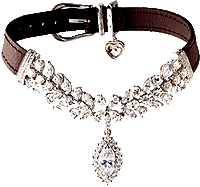 Also
for sale will be the much more affordable "La Jeune Tulipe".
Its intricate arrangement of marquise, pear, and brilliant-shaped
diamonds, as well as the 1.52-carat marquise-cut diamond that blooms
as the focal point of the extraordinary collar, makes the 15.6-carat
La Jeune Tulipe one of the crown jewels of the canine kingdom. Only
$150,000.
Also
for sale will be the much more affordable "La Jeune Tulipe".
Its intricate arrangement of marquise, pear, and brilliant-shaped
diamonds, as well as the 1.52-carat marquise-cut diamond that blooms
as the focal point of the extraordinary collar, makes the 15.6-carat
La Jeune Tulipe one of the crown jewels of the canine kingdom. Only
$150,000.
i Love Dogs will be showing their exclusive diamond dog collars at
the Pre-Westminster Fashion Show & Golden Paw Awards. "In
appreciation of the work of North Shore Animal League of America,
we will be thrilled to donate a portion of the proceeds from any sale
of La Jeune Tulipe and from the sale of Amour, Amour arising from
the Event, Print, & TV appearances to this very special organization."
said Martha Smith, General Manager of i Love Dogs
For
more bling from i
Love Dogs

√pet
 Gigi and Mushu√
Gigi and Mushu√


Westminster
Dog's day job
By LEONARD GREENE
February
8, 2010
He may be the hardest-working dog in show business. Of all the canines
competing at next week's 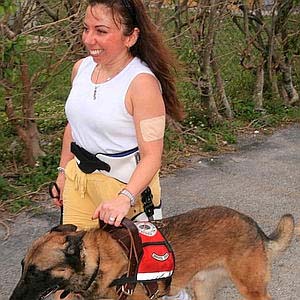 Westminster
Kennel Club show at Madison Square Garden, there is one that is definitely
not a pampered pooch. When Zorro, a 6-year-old Belgian Malinois, is
not on display, parading before a row of judges, he is at the side
of his disabled handler, faithfully filling in where her own body
fails her.
Westminster
Kennel Club show at Madison Square Garden, there is one that is definitely
not a pampered pooch. When Zorro, a 6-year-old Belgian Malinois, is
not on display, parading before a row of judges, he is at the side
of his disabled handler, faithfully filling in where her own body
fails her.
Sara Donadei-Blood, a Florida dog trainer, was born with a rare hip
deformity that leaves her unable to bend beyond a 90-degree angle.
By literally providing balance and giving his handler an extra set
of "hands," Zorro makes Donadei-Blood's life seem almost
routine.
"I live a pretty normal life for the most part," said Donadei-Blood,
38. "I have good days and bad days. Some days, I actually can't
function without him. On some evenings, after a long day, I can direct
him to get the remote control or my purse or my medicine," she
said. Sometimes, when he's bored, he even brings her things she doesn't
need.
Zorro is one of dozens of therapy and service dogs competing at this
year's Westminster show. Although it's not unheard of for disabled
handlers to show their dogs, the practice has not been common in the
show's 134-year history, organizers said.
The Westminster show, on Feb. 15 and 16, will be Zorro's second. He
has won dozens of ribbons in local competitions and placed second
in the 2007 American Kennel Club/Eukanuba National Championship in
California.
When the lights go on, Zorro knows it's showtime. "He wears a
different collar and leash," Donadei-Blood said. "He absolutely
knows the difference between working and showing. He really is a jack
of all trades."
Photo:
Bobby Martinez/ Zorro, with owner/handler Sara Donadei-Blood


A walk in the park
Hundreds of dogs think Point Pleasant is pure heaven
By JAN NAPIER
Sun. Feb 7
Hundreds
of Dogs cavort through Halifax’s Point Pleasant Park on a regular
basis and you can see 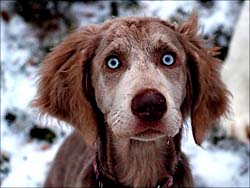 their
antics on the web. Visit Trent Boswick’s blog, Dogs 4 Point
Pleasant Park .
their
antics on the web. Visit Trent Boswick’s blog, Dogs 4 Point
Pleasant Park .
Boswick has combined his interests in dogs, the park and photography
into a great forum, especially for dog owners who visit the park.
They see their sidekicks in a new way — as stars of their very
own website.
Boswick, a 38-year-old financial adviser with Banco Management Inc.,
was raised to appreciate the joys of canine companionship, growing
up in a Halifax household that almost always included a golden retriever.
Armed with a camera, a great sense of humour and tech savvy, Boswick,
on his daily park outings, captures the best moments as the dogs romp
and show the incredible off-leash joy they get from chasing balls,
sticks, Frisbees and, of course, their playmates.
"I love dogs, technology, and have always had a strong passion
for photography. . . . This gives me the opportunity to express this
side of who I am in a fun way that others can enjoy as well,"
he said in an interview at the park.
He’s always on the lookout for new subjects, and although he’s
photographed hundreds of dogs (over 800 at last count), this dog whisperer
runs into new dogs regularly. It would be hard to imagine anyone who
knows as many dogs by name as he does.
Weekend mornings before 10 a.m. are popular times for dogs and owners
to congregate on one of the harbour waterfront sections of the park
and usually Boswick is there.
"Now people are looking for me," he says, noting that people
love having their dogs photographed. His site has grown in popularity,
with daily traffic averaging over 400 hits and totalling over 43,000
since its inception about a year and a half ago.
And the subjects are varied: petite cairn terriers like Duffy, giant
Bouviers like Salvatore, Maggie, the weeks-old puppy and older animals
like park matriarch Dinah, a gentle, 14-year-old mixed breed.
With an eye for the comedic, Boswick enjoys adding cartoon-style captions
to his pictures and gets great feedback from dog owners who enjoy
their daily dose of doggie humour and the photography.
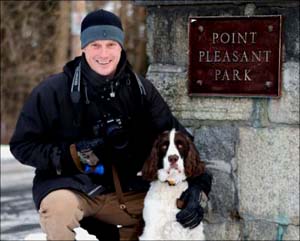
Boswick would be the first to admit that he is biased — his
best four-legged companion Dexter (right, with Boswick), a springer
spaniel, is featured regularly. Then there’s Daisy, Dexter’s
preferred young lady friend, who can’t resist luring Dexter
into the heather for a playful tumble.
Boswick
jokes that when it comes to his handsome brown and white spaniel,
"I’m the director of recreation and Bobi (his wife) is
director of health and beauty." She also enjoys outings in the
park. "It wasn’t until I started going to the park with
Dexter that I gained a true appreciation for all the wonderful blessings
and moments that (Point Pleasant Park) has to offer.
"Where else can you expose your dog to acres of freedom, squirrel
chasing, berry eating, ball catching, butterfly flushing, swimming,
and freshly fallen snow (just to name a few)?"
Dexter loves to compete for his brother Bronson’s ball. Owner
Don White says, "I don’t know what we’d do without
the park. . . . It has been such a big part of our lives for so long."

Park regulars understand the importance of following the rules concerning
canines and Boswick makes it a point through his blog to help educate
and advocate, so the park continues to be enjoyable for everyone.
Recently he posted information on his Upcoming Events page about a
half marathon, including the route, so dog walkers could avoid disrupting
the event. His site also includes pages on health and wellness, product
reviews, some fun and useful links. And dog owners can join in with
comments and thoughts.
Amalfi (left), a fast Italian greyhound, is often featured because
he’s just so doggone fashionable! Search his name on the site
and you’ll see why he turns heads in his swanky wardrobe collection
and provides Boswick with irresistible photo opportunities. With a
turned-up collar and high-stepping gait, he’s quite the gorgeous
guy and he knows it. Owner Laurie Richardson comments, "Thanks
to Amalfi, the park and the wonderful people in it, I leave Point
Pleasant refreshed and happy as a clam, ready to start the day!"
And
like so many others, is grateful to Boswick for the memories and laughs
that the dog blog provides.
Photos:
Longhaired Weimaraner Asha/Trent Boswick; Amalfi/Trent Boswick;
Trent Boswick with Dexter/Jan Napier


Gear Test | Dog Boots
By ANDREW ADAM NEWMAN
February 4, 2010
 WHILE
dog boots might look like the sort of fashion indignity that Paris
Hilton would inflict on Tinkerbell, it turns out that in winter they
serve a practical purpose.
WHILE
dog boots might look like the sort of fashion indignity that Paris
Hilton would inflict on Tinkerbell, it turns out that in winter they
serve a practical purpose.
“Dog boots might sound silly, but salt can really irritate the
pads on the bottom of their feet,” said Sara Lippincott, manager
of shelter outreach for petfinder.com , a database of adoptable pets.
While some cold-climate breeds like huskies are more impervious to
snow and salt, short-haired breeds like whippets, pit bulls and Chihuahuas
have less fur on the bottom of their paws, which can become chapped
and may require protection. Since many dogs dislike having their paws
handled, some need to be finessed into being shod. Ms. Lippincott
suggests a treat after each boot.
Photo:
Evan Sung for The New York Times


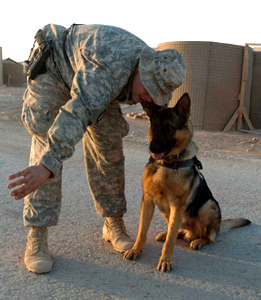 Dogs
Instead of Devices for Iraq Bomb Detection
Dogs
Instead of Devices for Iraq Bomb Detection
Iraq
February
4, 2010
The United
States is speeding up the delivery of dozens of bomb-detection dogs
to Iraq after accusations that widely used mechanical devices were
ineffective in detecting explosives, American and Iraqi officials
said. The first shipment of dogs — 25 were expected Friday —
comes amid pressure on Prime Minister Nuri Kamal al-Maliki over security
lapses.


Anti-Wolf
Bill Approved by Utah State Senate
February
3, 2010
Utah state
senate yesterday approved State Senator Allen Christensen's anti-wolf
bill that aims to 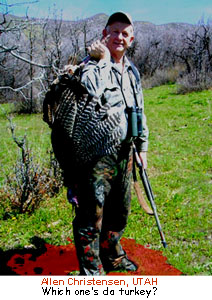 eliminate
life- saving protections for any wolf that enters the state. The goal
of this bill is to prevent wolves from returning to their historic
habitat in Utah. No state has a right to ban native wildlife from
its borders.
eliminate
life- saving protections for any wolf that enters the state. The goal
of this bill is to prevent wolves from returning to their historic
habitat in Utah. No state has a right to ban native wildlife from
its borders.
The bill now moves to the state house of representatives and then
-- if passed -- to the governor. Defenders will keep fighting to stop
Senator Christensen's outrageous bill, working with our allies on
the ground and launching a new, national grassroots mobilization later
this week. But we need your support to succeed.
PLEASE
help stop this bill before it becomes law.
Make an
emergency donation right now to save imperiled wolves.
http://action.defenders.org/site/R?i=8hRw3JSRChXipE-KJGhaJA


B'way
actress' boyfriend charged with beating her dog
By LARRY CELONA
February
2, 2010
The boyfriend
of a Big Apple stage actress has been charged with savagely beating
and blinding her 6-
 pound
dog with a belt after she had left the pup with him to go out of town
for an acting gig, authorities said.
pound
dog with a belt after she had left the pup with him to go out of town
for an acting gig, authorities said.
Joseph Graves, of Hells Kitchen, was charged with a felony count of
cruelty to animals and criminal mischief for the Jan. 16 incident
in which he admitted losing his temper and whipping Ashley Yeater's
(above) tiny dog with a belt and kicking it several times, sources
said.
After leaving the dog to suffer for two days, Graves, 30, finally
brought it to a vet where the pooch — a 4-year-old Yorkshire
terrier named Emmet (left) — was treated for six broken ribs
and had its left eye removed.
"The dog suffered traumatic injuries and could have easily died
from those injuries if he waited much longer," said Joseph Pentangelo,
a spokesman for the ASPCA.
Doctors immediately contacted authorities and ASPCA Special Agent
Omar Negrillo placed Graves under arrest. The dog is expected to live
and is recovering at a relative of Yeater’s.
Yeater, who has had small parts in "The Producers" on Broadway,
and touring productions of "Cats" and "Footloose,"
had left the dog with Graves while she traveled to Florida for a job.
Graves is due back in court on April 27. Graves' lawyer had no immediate
comment.


Stephen
Huneck, Artist of Dogs, Dies at 61
By MARGALIT FOX
February
1, 2010
Stephen
Huneck,
an internationally known artist, woodcarver and furniture maker 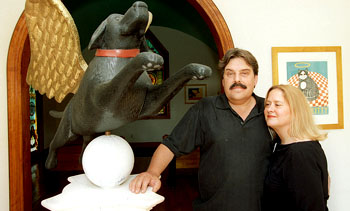 whose
most famous work was the Dog Chapel , a hand-built church in Vermont
to which dogs and their owners can go for quiet reflection and spiritual
renewal, died on Jan. 7 in Littleton, N.H. He was 61 and lived in
St. Johnsbury, Vt.
whose
most famous work was the Dog Chapel , a hand-built church in Vermont
to which dogs and their owners can go for quiet reflection and spiritual
renewal, died on Jan. 7 in Littleton, N.H. He was 61 and lived in
St. Johnsbury, Vt.
Mr. Huneck shot himself, his wife, Gwen, said. She said he had been
despondent over having had to lay off most of the employees of his
art business that week.
A largely self-taught carver, Mr. Huneck achieved a level of success
that comes to few outsider artists. His work was sought after by collectors,
exhibited 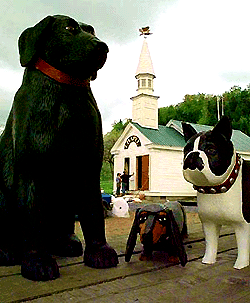 widely
and featured often in the news media. The Dog Chapel has been a popular
tourist attraction since it opened in 2000.
widely
and featured often in the news media. The Dog Chapel has been a popular
tourist attraction since it opened in 2000.
Much of Mr. Huneck’s artwork centered on dogs, from life-size
sculptures and woodcut prints to inexpensive items like clothing and
mouse pads. (His remaining work continues to be sold through his Web
site, dogmt.com .)
At its height about a decade ago, Mr. Huneck’s business was
a multimillion-dollar concern. He was then a partner in a half-dozen
Stephen Huneck galleries around the country. He also wrote and illustrated
a series of children’s books starring Sally, a Labrador retriever.
Among them is “Sally Goes to the Beach” (Abrams, 2000),
which appeared briefly on the New York Times children’s best-seller
list.
He was the subject of a book, “ The Art of Stephen Huneck ”
(Abrams, 2004), by Laura Beach.
Mr. Huneck’s masterwork was the Dog Chapel, which he began building
in 1997. It sits on Dog Mountain, a vast park-like space he and his
wife owned near St. Johnsbury. Dog Mountain, which is open to the
public at no charge, includes a gallery, hiking trails and an agility
course for dogs. Small, modest and white, the chapel resembles a 19th-century
New England church from the outside, apart from the steeple topped
by a winged Labrador. A sign proclaims: “Welcome: All Creeds,
All Breeds. No Dogmas Allowed.” Inside, the four pews, handmade
by Mr. Huneck, are supported by carved wooden dogs. Stained-glass
windows depict dogs in various poses. The walls are almost entirely
covered with handwritten notes to departed pets, placed there by grieving
visitors.
“I’ve learned so much more about love from my dogs than
I ever did from my parents or the church,” Mr. Huneck told The
Chicago Tribune in 1997. “They’re really great teachers.
They love you with their whole heart.”
Stephen Huneck was born on Oct. 8, 1948, in Columbus, Ohio, and reared
in Sudbury, Mass. (The family name is pronounced HYOO-neck.) Severely
dyslexic and unhappy in a home he described afterward as turbulent,
he left at 17 “with 33 cents in his pocket,” his wife
said.
Mr. Huneck later studied at the Massachusetts College of Art , before
becoming an antiques dealer. Through repairing wooden pieces, he taught
himself how to carve. In 1984, one of his original carvings caught
the eye of a New York dealer, and he was soon making art full time.
In addition to his wife, the former Gwendolyn Ide, Mr. Huneck is survived
by his parents, five sisters and a brother.
Two books written and illustrated by Mr. Huneck, “ Sally’s
Great Balloon Adventure ” and “Even Bad Dogs Go to Heaven,”
are scheduled to be published by Abrams this year.
Of Mr. Huneck’s network of galleries, only the one on Dog Mountain
remains. The fate of Dog Mountain, the chapel and the gallery is uncertain,
Ms. Huneck said. But with the renewed demand for her husband’s
work that his death has engendered, she said, she was able to hire
back most of the employees let go last month.

Photo
of Stephen Huneck and his wife, Gwen, in 2001, next to one of his
works.
by Paul O. Boisvert Amanda McDermott


Savage beagles terrorize East End
By TAYLOR K. VECSEY
January
31, 2010
A plague
of vicious wild beagles has struck Long Island! These floppy-eared
terrors are no lovable 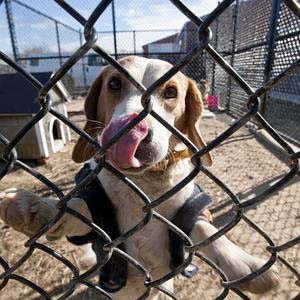 Snoopys
-- they're abandoned hunting dogs that live in packs and have gone
from humble pets to hounds from hell.
Snoopys
-- they're abandoned hunting dogs that live in packs and have gone
from humble pets to hounds from hell.
Mattituck resident Dot Faszczewski came face to face with the canine
menace two weeks ago, when she was set upon by a group of crazed,
hungry beagles as she walked her pet dogs near her parents' Orient
Point home. She said it was like a scene from a werewolf movie.
"They were barking so ferociously that I thought they were going
to attack my dogs," she said of the Jan. 16 scare.
Her dogs -- who are much bigger than be agles -- were too scared to
even bark back. "I grabbed the two dogs and ran inside,"
she said. "I just closed the door when they jumped at the door,
and they broke that aluminum portion underneath."
The attack happened in a flash. It was only when the 61-year-old dog
lover was safely inside that she made the shocking realization her
howling attackers weren't coyotes or Rottweilers, but were three frothing,
short-legged, brown-and-white beagles.
"I thought 'Why would they be so ferocious?' The bark that they
were barking, like they really wanted to eat me up!" she told
The Post. They "were probably cold, hungry and desperate,"
she said.
The angry beagles that attacked Faszczewski are part of a huge community
of feral beagles that roams the woods and fields of eastern Long Island
after being abandoned by hunters who used them to track down rabbits.
According to local activists, some hunters act like small-time Donald
Trumps, firing the dogs that don't do well during the November-to-February
hunting season. One told a shelter worker, "If you don't take
the dog, I'll shoot it in the head."
"If they don't perform, they don't have a use for them,"
said Pam Green, who runs Kent Animal Shelter in Calverton.
Despite the beagles' small size and normally playful dispositions,
they normally group up in vicious packs to hunt for food once they
are on their own. One year, as many as 30 or 40 beagles were abandoned,
and two were found dead. Green said five dogs have been picked up
on the North Fork so far this hunting season. She expects to see more
when the season ends in a month. But animal activists are trying to
help by publicizing the plight of the wild beagles and trying to find
homes for them.
It's a challenge. While purebred beagles can sell for hundreds or
thousands of dollars, most dumped hounds are young, poorly trained
and not housebroken. "They're certainly not treated as a pet,"
Green said. "They've lived in crates."
Most are also not spayed or neutered because hunters believe "fixed"
dogs lose their hunger for prey.
Two shelters now have five former feral beagles up for adoption between
them. And they said that with love and care these abandoned hounds
can become loving pets once again.
Photo:
Gordon M. Grant

 COMPLAINT BOX
COMPLAINT BOX
January
31, 2010
This
week’s Complaint Box features two views on dogs in public,
from Barbara Rosenblatt and Erica Manfred.
Is
That a Dog in the Dressing Room?
BARBARA
ROSENBLATT
It started
the day I tripped on a dog’s tail while leaving the dressing
room at the Banana Republic at 86th  and
Broadway. The tail, an ordinary brown one, was sticking out of the
dressing room next door. I never did see the dog’s body or the
master of the animal, who was, presumably, deciding whether to buy
just the black T-shirt, or the red one as well.
and
Broadway. The tail, an ordinary brown one, was sticking out of the
dressing room next door. I never did see the dog’s body or the
master of the animal, who was, presumably, deciding whether to buy
just the black T-shirt, or the red one as well.
Animals are joining the ranks of small, bored children who must accompany
their grown-ups just about everyplace. Can’t tie up my kid on
a leash outside, so why should I do it to my dog?
In the two years since I tripped on the tail, dogs seem to be appearing
all over the place. The managers of the Gap informed me at every store
where I inquired that “the corporate policy is to allow dogs
in our stores.” This was confirmed recently by a customer relations
representative, who added that dogs were allowed into Gap stores as
long as the leasing agent of the store permitted it and no other customer
objected to the dog.
Barnes & Noble has a similar policy of taking into consideration
the health, safety and comfort of their customers when allowing nonservice
pets into the store. (Service dogs are always given access.) Banana
Republic did not respond to my questions about its dog policy, but
I spotted a furry creature in one of its stores in December, so I
assume it hasn’t changed.
I have seen a dog trotting with muddy paws around a furniture store
while its humans (I cannot bring myself 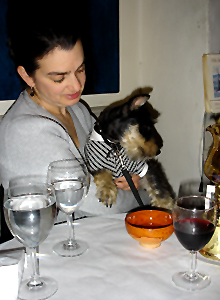 to
say “master” anymore — there seems to be so little
mastery of impulses here) scrutinized a white couch. Recently a huge
dog in a small grocery store in the West Village swept a shelf of
cans to the floor with its tail. The owner smiled grimly as he picked
the stuff up.
to
say “master” anymore — there seems to be so little
mastery of impulses here) scrutinized a white couch. Recently a huge
dog in a small grocery store in the West Village swept a shelf of
cans to the floor with its tail. The owner smiled grimly as he picked
the stuff up.
Not one dog that I have seen in a store was muzzled, though all have
been on leashes.
Although
dogs are not allowed in stores that serve food, I was  told
by a dog’s human that I was “very rude” when I pointed
out that she was breaking the law by having her dog at her side while
she ordered food. The workers said nothing, copping out with the excuse
that the boss was absent.
told
by a dog’s human that I was “very rude” when I pointed
out that she was breaking the law by having her dog at her side while
she ordered food. The workers said nothing, copping out with the excuse
that the boss was absent.
Surely, we are not kidding ourselves that rights for animals mean
that we should take a dog into a store with blasting music, a confined
space and nothing that would interest it. No, I believe that it is
now somehow considered stylish to allow humans the freedom to shop
with their animals.
The
store owners are too wimpy, in most cases, to post a sign reading
“No pets, please.” My goodness, aren’t they afraid
of being sued by a customer who has an allergic reaction, or claims
to have been threatened or bitten by an unmuzzled animal on their
premises? Perhaps what it will take to keep animals out of stores
is a few too many paw prints on the merchandise, or a deposit by a
dog that mistook a rug for a sidewalk.
Barbara
Rosenblatt, an educator and freelance writer, lived in Manhattan,
and then Brooklyn, from 1987 to 2007 and visits the city often.
PHOTOS
Top right:Damon Winter/New York Times
Left (Rodin) and (Sophie) bottom right, at Café Loup: R. Coane/Scoop
& Howl
No,
I Won’t Leave Him at Home
ERICA
MANFRED
I was very
touched when I saw Mickey Rourke talk to a television interviewer
about his role in “The  Wrestler”
while holding his Chihuahua, Loki. And a few weeks later, when he
won best actor at the 2009 Golden Globes and thanked Loki and his
other dogs for getting him through the years when he had no one, I
teared up. I feel the same about my dog, Shadow, even though Shadow
and I don’t get the same welcome reception wherever we go.
Wrestler”
while holding his Chihuahua, Loki. And a few weeks later, when he
won best actor at the 2009 Golden Globes and thanked Loki and his
other dogs for getting him through the years when he had no one, I
teared up. I feel the same about my dog, Shadow, even though Shadow
and I don’t get the same welcome reception wherever we go.
Shadow is a black 11-pound cross between a Chihuahua and a Jack Russell
terrier. He’s got floppy ears, a winsome way of cocking his
head to listen when you talk to him and an ability to effortlessly
jump three feet in the air on command. Not only is he the size of
a baby, but he also acts like one, following me around the house and
insisting on all my attention all the time.
I used to think my friend Wendy, who fussed constantly over her Maltese,
Bam Bam, was nuts. That was before I adopted Shadow, who had been
rescued from an abusive home. I have since become so besotted that
I bought him a bright yellow service dog vest and finagled a therapy
dog prescription for him from my doctor so I could take him everywhere.
And I do — except to the movies (although I did take him to
see “Beverly Hills Chihuahua”).
I have friends who love Shadow and don’t mind when I schlep
him along. I also have friends who don’t like dogs and want
me to leave him home. On the surface, this would seem like a reasonable
request, but it’s not reasonable to me. I’ve spent my
life accommodating other people’s wishes, and 18 years of it
tiptoeing around an explosive husband. Since my divorce, Shadow has
been my security blanket. If you care about me and want to be my friend,
you’ll understand that.
Despite our sentimentality about dogs, and the growth in dog products
and dog ownership, this country is basically anti-dog. While dogs
are welcome even in restaurants in France, here, people go nuts if
you bring your dog to a hardware store.
In some places, of course, exceptions are made — for eccentric,
over-the-hill ex-movie stars, big bruisers who look sweet with a tiny
Chihuahua. Eccentric, albeit also lonely, over-the-hill divorcées
like me, however, aren’t cut any slack. We’re just considered
pitiful neurotics.
Well, I’m into my second adolescence and I’ve become a
rebellious old lady. I take Shadow wherever I go because he makes
my life bearable, and I don’t care what anyone thinks. It’s
only fair that what’s O.K. for Mickey should be O.K. for me.
Loneliness is an equal-opportunity affliction.
Erica
Manfred, a city resident for 30 years, now lives near Woodstock, N.Y.
She is the author of “ He’s History, You’re Not:
Surviving Divorce After Forty .”
(Globe Pequot Press Life, 2009).


The Dog Who Hates Me
By JOHN MOE
Published: January 27, 2010
It was the
movie “Hotel for Dogs” that sealed the deal. My kids had
been asking for a dog for years,  promising
to take care of it, arguing how our family wouldn’t be complete
until we had one. But after we rented that movie, in which humans
can’t really find happiness without a canine pal, our kids became
inconsolable in their dogless sorrow. Moaning, wailing — you’d
have thought they severed an artery.
promising
to take care of it, arguing how our family wouldn’t be complete
until we had one. But after we rented that movie, in which humans
can’t really find happiness without a canine pal, our kids became
inconsolable in their dogless sorrow. Moaning, wailing — you’d
have thought they severed an artery.
Fine,
we’ll get a dog. Yay, Dad!
Truth be told, I was almost as excited as they were. Dogs are a lot
of work, but they can be delightful little balls of joy and fun as
well, and who wouldn’t want more of that in the house? After
some not very careful screening, we came across a dog online that
needed a home: a little Yorkshire terrier that had bounced around
a bit. We met with the latest owners at a Petco in the Minneapolis
suburbs. Officially, we were there just to meet the dog and see if
he was a good fit, but once the kids saw the thing, there was little
doubt he was getting in our minivan.
As we drove, I successfully lobbied to name the dog Dave, since I’ve
gotten along really well with every human I’ve known by that
name. We brought him home, and the kids were over the moon with joy.
Dave put up with all the handling, even the ham-fisted affections
of the 1-year-old. He slept on my 8-year-old-son’s bed, just
the way my boy had always dreamed. All was right.
Until the next day, when I came home from work, at which point the
dog started barking his head off. He cowered; he growled. Same thing
happened when I wrestled with the kids or chased them or even danced
with them. (He may have had a point with my dancing.) I tried yelling
at him to hush. I tried slipping him some bacon as I came in, and
he barely accepted it, even though it’s bacon , and he’s
a dog. He ate it, and then he barked at me some more.
On the one hand, it was kind of funny. But the dog’s hate/fear
actually did kind of hurt my feelings. The one thing you expect from
your dog is unconditional love and tail wags at the end of the day.
There’s something kind of heartbreaking about coming home from
work, from providing the income to make the house function, and being
hated and feared when you walk in the door.
So I thought maybe he was beaten up by a man at some point, right?
But male friends would come over, friends who look like me, and Dave
would be fine. It was just me. My dog hated me. Fortunately, I had
one last card to play.
There
were health and safety reasons, concerns about the dog population,
and I didn’t want to have to do it. And yet, there was one move
that I could use on him that I didn’t think he could use on
me: removal of testicles. Dave was not neutered when we adopted him,
and I was confident that if this behavior was an alpha-male thing,
well, a little scalpel work ought to take care of that nicely. The
procedure took place on a Friday morning, and he was already home
by the time I returned from work that afternoon. I parked out front
and warily approached the front door. Holding my breath a bit, I turned
the key.
I expected a certain amount of calmness to have set in after Dave’s
procedure. I thought he’d be docile, a sort of cat-dog. Once
inside the door, I paused to allow the realization of my arrival to
spread through the house. Then the barking started. Loud, shrill,
frightened, it came in the same familiar staccato bursts, even though
Dave was still somewhat sedated and disoriented. It was like being
verbally assaulted by some sort of sleepy incoherent hippie eunuch.
It has been a few weeks now since that procedure, and Dave has become
a tad nicer to me in moments of calm, even seeking me out for belly
rubs. But my dream of having a dog happy to see me at the end of the
day — which is perhaps the single biggest responsibility in
a dog’s job description — is destined to be unfulfilled.
 I
think dog ownership, or cohabitation, really, teaches you a lesson
no matter what. For most people that lesson is about the way love
and simplicity and togetherness can provide respite from the slings
and arrows of our human days. For me, it’s about accepting Dave
for who he is. I’m sure he’d rather not fly into a dizzying
rage whenever he sees me. Can’t be any fun for him. But he is
who he is, just like all of us. I picked Dave’s name because
it sounded human. I had no idea how prescient I was.
I
think dog ownership, or cohabitation, really, teaches you a lesson
no matter what. For most people that lesson is about the way love
and simplicity and togetherness can provide respite from the slings
and arrows of our human days. For me, it’s about accepting Dave
for who he is. I’m sure he’d rather not fly into a dizzying
rage whenever he sees me. Can’t be any fun for him. But he is
who he is, just like all of us. I picked Dave’s name because
it sounded human. I had no idea how prescient I was.
It’s a loving relationship, Dave’s and mine, but one in
which one partner, without testicles, will always scream at the other,
who has them, for no apparent reason.
Bowl:
Holly Wales


Weird
BUT
true
Lukas L. Alpert,
Wire Services
We
 Fido
Fido
20% of adults in a worldwide Reuters
survey said they'd rather spend Valentine's Day with their
pets than with their human partners.
The
biggest pet lovers, apparently, live in Turkey, where 49%
said they'd choose their cats or Dogs over their overs.
On
the other end of the spectrum were the French. A mere 10%
said they'd rather spend the day with their four-legged friends.
In
the United States, 27% chose pets.
Maybe
she was a double agent for PETA.
A Dog shot her owner while he was duck hunting in Los Baños,
California.
The
53-year-old man was wounded after he put his loaded shotgun
on the ground and his black Lab stepped on it. The red-faced
hunter was released after treatment for a minor wound.
German
cops chasing a scared Dog that had gotten loose on the autoban
ended their pursuit by running the poor pooch over rather
than close down the highway. They then sent the Dog's owner
a bill for $4,000 for damages to the police car.
A
Slovenian doctor who saved three Dogs from bring put to sleep
for attacking humans was killed when the Dogs mauled him.
The
Bull Mastiffs had been ordered put down after attacking several
people. After their owner died, the doctor had intervened
to keep them alive . They attacked him in his garden.
|







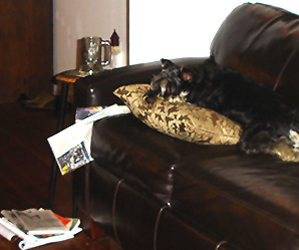

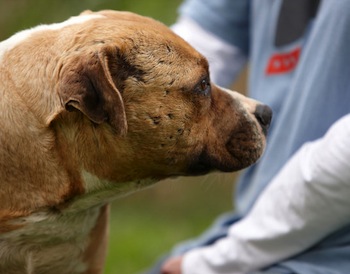 system
has long done for human crime victims. They have created the country’s
first dog-fighting DNA database, which they say will help criminal
investigators piece together an abused animal’s history by establishing
ties among breeders, owners, pit operators and the animals themselves.
system
has long done for human crime victims. They have created the country’s
first dog-fighting DNA database, which they say will help criminal
investigators piece together an abused animal’s history by establishing
ties among breeders, owners, pit operators and the animals themselves.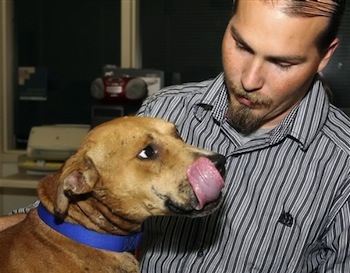 Prevention
of Cruelty to Animals (ASPCA),
The Humane Society of Missouri (HSMO) and the Louisiana SPCA (LA/SPCA),
and will be maintained at the University of California, Davis (UC
Davis) Veterinary Genetics Laboratory. Known as the Canine CODIS (Combined
DNA Index System), the database is designed to help the criminal justice
system investigate and prosecute dog fighting cases and address the
growing problem of dog fighting using 21st century technology.
Prevention
of Cruelty to Animals (ASPCA),
The Humane Society of Missouri (HSMO) and the Louisiana SPCA (LA/SPCA),
and will be maintained at the University of California, Davis (UC
Davis) Veterinary Genetics Laboratory. Known as the Canine CODIS (Combined
DNA Index System), the database is designed to help the criminal justice
system investigate and prosecute dog fighting cases and address the
growing problem of dog fighting using 21st century technology.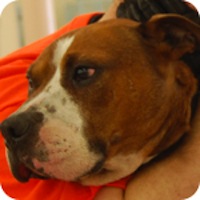 When an agency submits a sample to the Veterinary Genetics Laboratory,
the DNA is analyzed and the Canine CODIS database is then searched
for corresponding DNA profiles. In the event the database search locates
a match for the submitted DNA, the lab will notify both the agency
that submitted the new sample and the agency that submitted the existing
sample. The Canine CODIS database is only available to law enforcement
agencies; analysis is part of the cost of testing.
When an agency submits a sample to the Veterinary Genetics Laboratory,
the DNA is analyzed and the Canine CODIS database is then searched
for corresponding DNA profiles. In the event the database search locates
a match for the submitted DNA, the lab will notify both the agency
that submitted the new sample and the agency that submitted the existing
sample. The Canine CODIS database is only available to law enforcement
agencies; analysis is part of the cost of testing.

 birthday
bash and angrily flinging cake in his face, witnesses told The Post
yesterday.
birthday
bash and angrily flinging cake in his face, witnesses told The Post
yesterday.

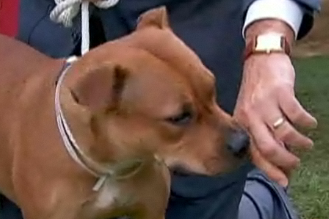 1)
First get the "OK" from the owner!
1)
First get the "OK" from the owner! 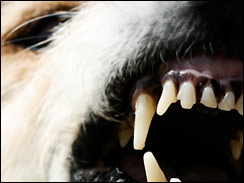

 now.
now. and
overpriced contractors. In short, they could have been any family
in any suburb in America.
and
overpriced contractors. In short, they could have been any family
in any suburb in America.
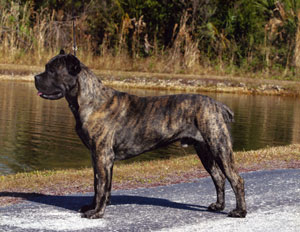
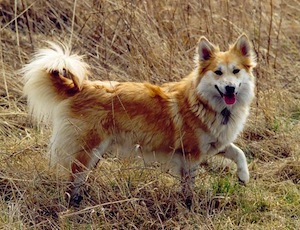



 June 30, 2010
June 30, 2010
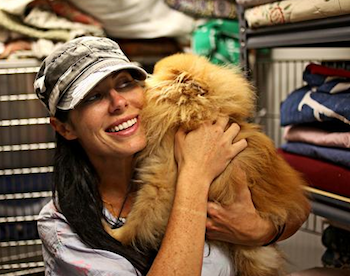 He's
guaranteed to live at In Dog We Trust, a no-kill animal shelter that
opened this month on the former property of the Folke Peterson Wildlife
Center, a wildlife sanctuary that shut its doors last year.
He's
guaranteed to live at In Dog We Trust, a no-kill animal shelter that
opened this month on the former property of the Folke Peterson Wildlife
Center, a wildlife sanctuary that shut its doors last year.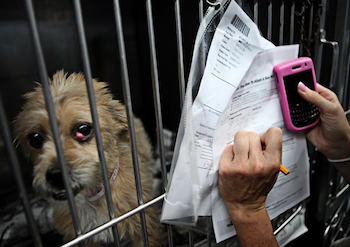 stray
golden Labrador retriever puppy that volunteer Gabriel Diaz found
along Okeechobee Boulevard that morning. She was wearing a leash that
was nearly choking her, and had a microchip - but it wasn't registered
to anyone.
stray
golden Labrador retriever puppy that volunteer Gabriel Diaz found
along Okeechobee Boulevard that morning. She was wearing a leash that
was nearly choking her, and had a microchip - but it wasn't registered
to anyone.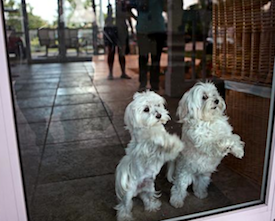 see
a dog they would like to adopt. "If someone can tell me they
want a dog, we'll give it a shot," Brown said, adding that she
hadn't yet talked with any of the county shelters about her idea.
see
a dog they would like to adopt. "If someone can tell me they
want a dog, we'll give it a shot," Brown said, adding that she
hadn't yet talked with any of the county shelters about her idea.


 her
apartment.
her
apartment.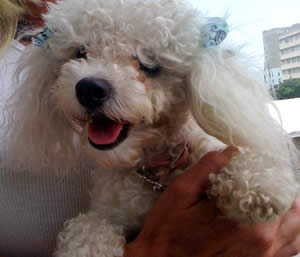 ARNO,
an animal rescue, no-kill shelter said it is experiencing a huge amount
of surrenders right now because of the oil disaster in the Gulf of
Mexico.
ARNO,
an animal rescue, no-kill shelter said it is experiencing a huge amount
of surrenders right now because of the oil disaster in the Gulf of
Mexico.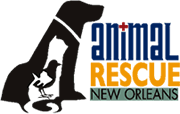
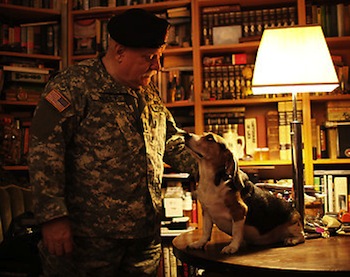
 Maizie.
(That’s short for Miss Mazeppa, one of the three strippers in
the Broadway musical “Gypsy.”)
Maizie.
(That’s short for Miss Mazeppa, one of the three strippers in
the Broadway musical “Gypsy.”)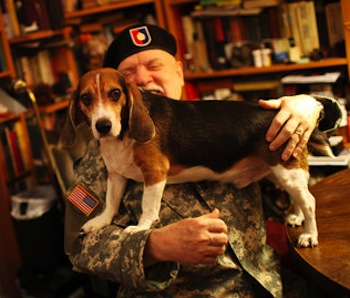 get
another dog after P. T., so long as it isn’t one of a long list
of large dogs.
get
another dog after P. T., so long as it isn’t one of a long list
of large dogs.
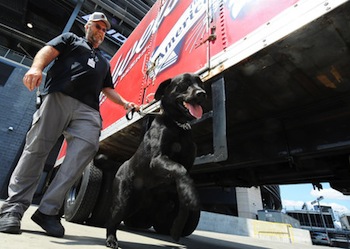 They
are Rufus(below, foreground)and Anja (left), black Labrador retrievers
who moved quietly in May into kennels just feet from the playing field
and are believed to be the only bomb-sniffing dogs in the country
who live in a stadium or an arena.
They
are Rufus(below, foreground)and Anja (left), black Labrador retrievers
who moved quietly in May into kennels just feet from the playing field
and are believed to be the only bomb-sniffing dogs in the country
who live in a stadium or an arena.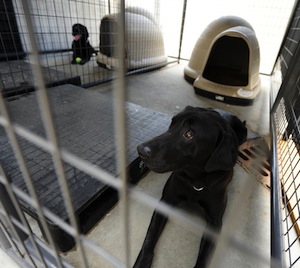 Employees
stop to pet the dogs as long as they are not in the middle of inspecting
a delivery.
Employees
stop to pet the dogs as long as they are not in the middle of inspecting
a delivery. your
dog is feeling the burn as well. So why not splash around together?
your
dog is feeling the burn as well. So why not splash around together? friends
in the front yard of her suburban New York City home.
friends
in the front yard of her suburban New York City home.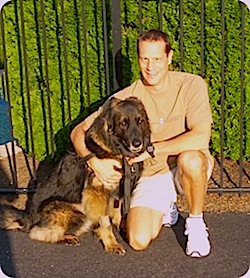 eight-year-old
German Shepherd to join her husband in the backyard. It was a regular
Saturday night three weeks ago; Beau had been fine all day, but was
now retching and acting distressed.
eight-year-old
German Shepherd to join her husband in the backyard. It was a regular
Saturday night three weeks ago; Beau had been fine all day, but was
now retching and acting distressed. organs,
can cause difficulty breathing, and eventually may decrease blood
supply to a dog’s vital organs.
organs,
can cause difficulty breathing, and eventually may decrease blood
supply to a dog’s vital organs.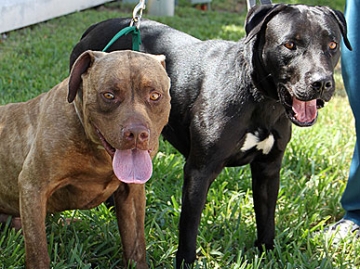 tale
of an extraordinary dog named Brains, and her pal Brawn reported by
PeoplePets.com.
tale
of an extraordinary dog named Brains, and her pal Brawn reported by
PeoplePets.com.



 go.
It's great those dogs all have a home, many even live the life of
luxury.
go.
It's great those dogs all have a home, many even live the life of
luxury.
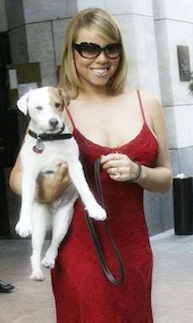
 the
"extraordinary services" she performed for her three pampered
pooches.
the
"extraordinary services" she performed for her three pampered
pooches.
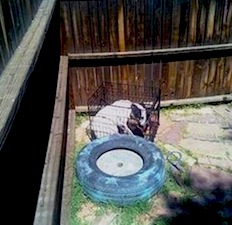 dog
dies of apparent heat exposure.
dog
dies of apparent heat exposure. is
enough cage space available. “We still have limited space at
the shelter and we still have to euthanize animals. With the summer
and the spring season being very busy, it’s kind of a common
occurrence,” Gecic said.
is
enough cage space available. “We still have limited space at
the shelter and we still have to euthanize animals. With the summer
and the spring season being very busy, it’s kind of a common
occurrence,” Gecic said.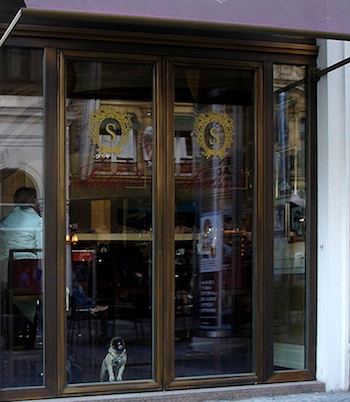 a
proposed ordinance allowing dogs in restaurants’ outside dining
areas.
a
proposed ordinance allowing dogs in restaurants’ outside dining
areas. Johns
River Water Management District. The city, as well as some others
in the district, did not pass an ordinance adopting those rules and
St. Johns hired a private firm to enforce its own rules.
Johns
River Water Management District. The city, as well as some others
in the district, did not pass an ordinance adopting those rules and
St. Johns hired a private firm to enforce its own rules. No
soup -- or cocaine -- for you!
No
soup -- or cocaine -- for you!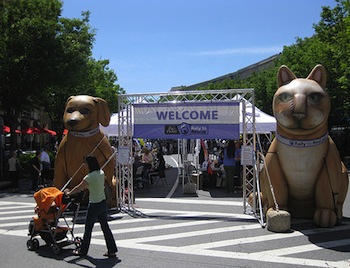 most
remarkable tale of pet survival and rescue.
most
remarkable tale of pet survival and rescue.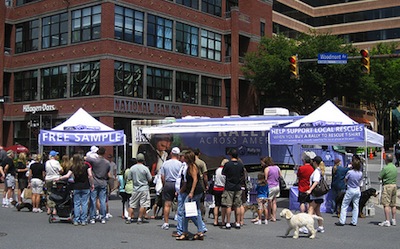 this
year, building on the current total of more than 320,000 adoptions
since the program inception in 2005.
this
year, building on the current total of more than 320,000 adoptions
since the program inception in 2005. 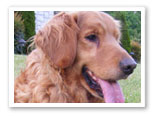


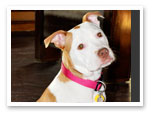
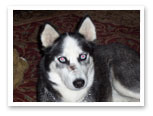
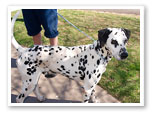
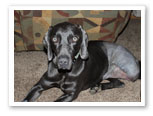


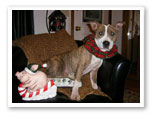

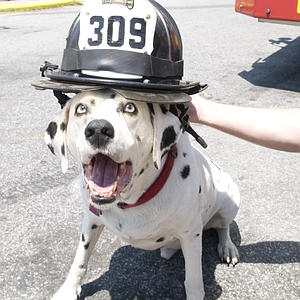 dog
after a week of intense voting in The Post's online competition to
become a calendar canine.
dog
after a week of intense voting in The Post's online competition to
become a calendar canine.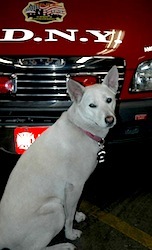
 Laid-back
Lucy (right) claimed second place with 6,328 votes, 24 percent. This
former street dog lives in the Bronx FDNY Dispatch Center and loves
to play catch-me-if-you-can, the doggie version of tag. She'll come
when called and then teasingly veer away at the last minute, hoping
someone will chase her around the building. She has a favorite soda
machine she likes to sleep beside.
Laid-back
Lucy (right) claimed second place with 6,328 votes, 24 percent. This
former street dog lives in the Bronx FDNY Dispatch Center and loves
to play catch-me-if-you-can, the doggie version of tag. She'll come
when called and then teasingly veer away at the last minute, hoping
someone will chase her around the building. She has a favorite soda
machine she likes to sleep beside.
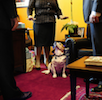
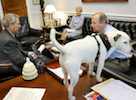


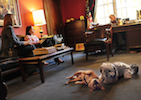

 Laurie
Anderson above was upstaged by her blind rat terrier, Lola Belle,
at the release party for her first album in nine years, "Homeland."
The talented pooch accompanied Anderson on keyboard in the penthouse
at the Cooper Square Hotel for the likes of her co-owner, Lou Reed,
performance artist Marina Abramovic, Antony Hegarty of Antony and
the Johnsons, author A.M Homes, poet Anne Carson and photographers
Timothy Greenfield-Sanders and Ralph Gibson.
Laurie
Anderson above was upstaged by her blind rat terrier, Lola Belle,
at the release party for her first album in nine years, "Homeland."
The talented pooch accompanied Anderson on keyboard in the penthouse
at the Cooper Square Hotel for the likes of her co-owner, Lou Reed,
performance artist Marina Abramovic, Antony Hegarty of Antony and
the Johnsons, author A.M Homes, poet Anne Carson and photographers
Timothy Greenfield-Sanders and Ralph Gibson. If
you called this guy crazy like a fox, the foxes probably wouldn't
appreciate the comparison.
If
you called this guy crazy like a fox, the foxes probably wouldn't
appreciate the comparison.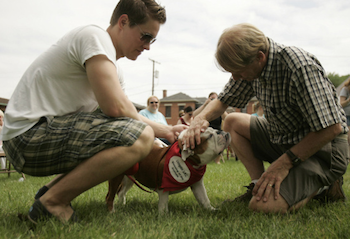 you,"
the Rev. Jim Donnan said. And with that, Sammy the cat was blessed
Sunday outside Livingston United Methodist Church in German Village,
along with about a dozen dogs. The pets of members and neighbors received
a blessing, while animals that are hunted or suffering were the subject
of prayers. "We therefore ask for God's blessing on all these
animals," Donnan said, "and thank God for setting us as
stewards over all the animals of the Earth."
you,"
the Rev. Jim Donnan said. And with that, Sammy the cat was blessed
Sunday outside Livingston United Methodist Church in German Village,
along with about a dozen dogs. The pets of members and neighbors received
a blessing, while animals that are hunted or suffering were the subject
of prayers. "We therefore ask for God's blessing on all these
animals," Donnan said, "and thank God for setting us as
stewards over all the animals of the Earth."

 A professional dog-poop scooper found $58 in doggie doo, and
returned it -- the cash, not the poo -- to the owners.
A professional dog-poop scooper found $58 in doggie doo, and
returned it -- the cash, not the poo -- to the owners.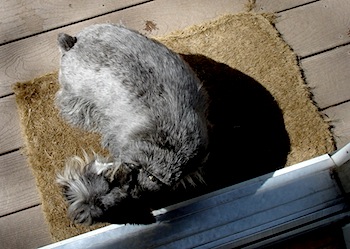 vertebrae
along with muscles and nerves which allow the tail to move and control
sensation in this area. The nerves at the base of the tail are particularly
important as they help your dog to control bowel movements.
vertebrae
along with muscles and nerves which allow the tail to move and control
sensation in this area. The nerves at the base of the tail are particularly
important as they help your dog to control bowel movements. Red
Lion Hotels in the Paws to Click movement! In recognition that an
estimated 30,000 car accidents are caused annually by unrestrained
pets, this movement increases awareness of the importance of keeping
your pet crated or buckled up in the car to help keep the whole family
safe.
Red
Lion Hotels in the Paws to Click movement! In recognition that an
estimated 30,000 car accidents are caused annually by unrestrained
pets, this movement increases awareness of the importance of keeping
your pet crated or buckled up in the car to help keep the whole family
safe.

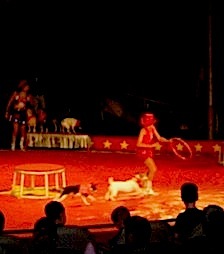
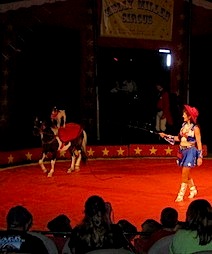
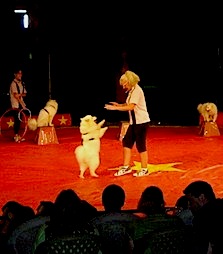
 Bartlesville
Police Department Animal Control Officer Rita Harvey.
Bartlesville
Police Department Animal Control Officer Rita Harvey.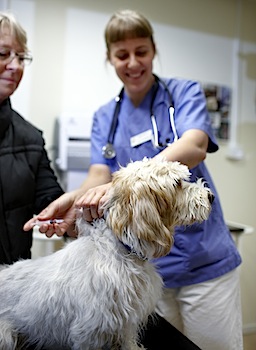 USDA
now has granted full license to the first vaccine against canine influenza
virus.
USDA
now has granted full license to the first vaccine against canine influenza
virus.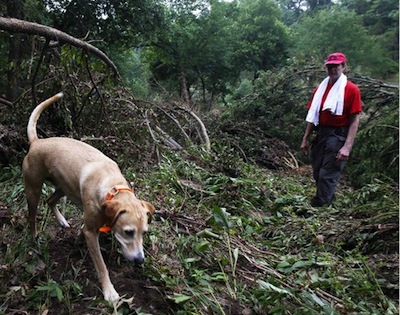
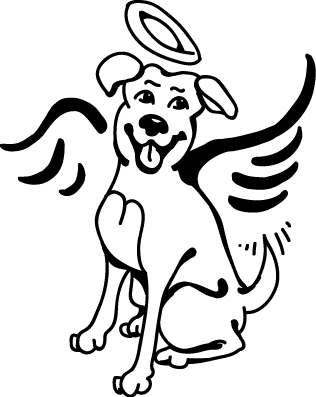 or
laugh at the absurdity of life with you. They certainly couldn’t
make you forget war.
or
laugh at the absurdity of life with you. They certainly couldn’t
make you forget war.

 greening
every aspect of its operation. And the clients are lapping it up.
greening
every aspect of its operation. And the clients are lapping it up. Steven
Gaines, the author, who comes with his dog Shepsil. “I’m
here every single day of the year, even if there’s a snowstorm,”
he said.
Steven
Gaines, the author, who comes with his dog Shepsil. “I’m
here every single day of the year, even if there’s a snowstorm,”
he said.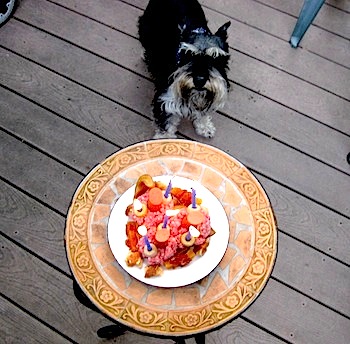
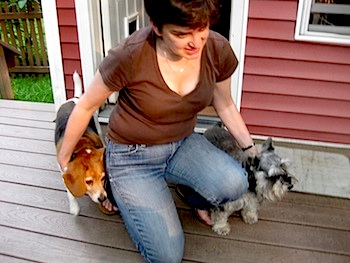
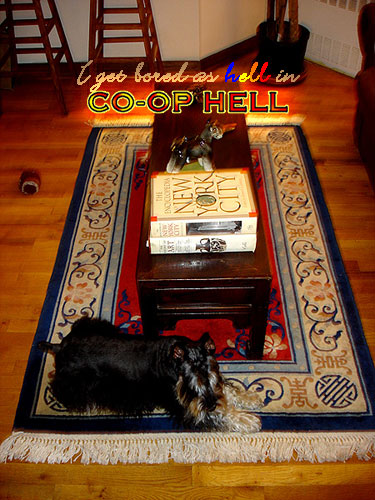
 New
York City Marathon with Team ASPCA,
our new marathon training and fundraising program!
New
York City Marathon with Team ASPCA,
our new marathon training and fundraising program!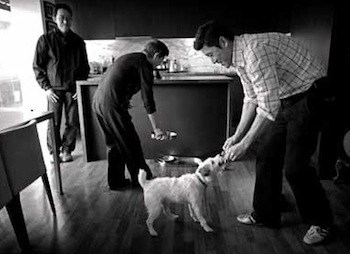 tall.
She may be a wire-haired Jack Russell bitch. But she does not see
the sense in it. It is not, as far as she can see, for her.
tall.
She may be a wire-haired Jack Russell bitch. But she does not see
the sense in it. It is not, as far as she can see, for her.
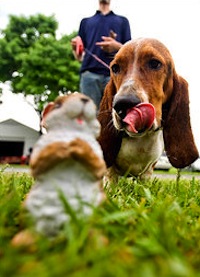 plastic
hutches, cottontails munching clover, and barely detectable silhouettes
under shady sumacs. But my basset hound, Elvis, seemed far more interested
in the baked ziti smell wafting from the clubhouse nearby.
plastic
hutches, cottontails munching clover, and barely detectable silhouettes
under shady sumacs. But my basset hound, Elvis, seemed far more interested
in the baked ziti smell wafting from the clubhouse nearby.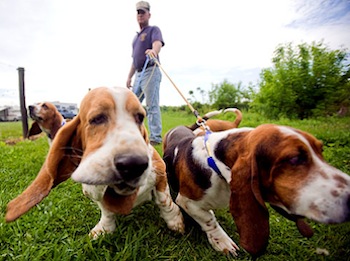 Engle,
drew numbers from a bingo machine. Out of 15 braces of dogs (one experienced,
one newcomer), Elvis would go 14th, with a basset named Quest. That
meant I would spend the morning walking the grounds in search of rabbits
for the other dogs. Every few minutes, someone would sight one and
excitedly cry, “Tally ho!” The whole group would hustle
to that spot, and two dogs would be unleashed. Normally the trained
dog would sniff feverishly and then race after the rabbit, its nose
skimming the soil. The only question was: Would the inexperienced
dog join in?
Engle,
drew numbers from a bingo machine. Out of 15 braces of dogs (one experienced,
one newcomer), Elvis would go 14th, with a basset named Quest. That
meant I would spend the morning walking the grounds in search of rabbits
for the other dogs. Every few minutes, someone would sight one and
excitedly cry, “Tally ho!” The whole group would hustle
to that spot, and two dogs would be unleashed. Normally the trained
dog would sniff feverishly and then race after the rabbit, its nose
skimming the soil. The only question was: Would the inexperienced
dog join in?

 In
so far as no one was bitten and nearly everyone stayed where he or
she was supposed to, the debut of Laurie Anderson’s “Music
for Dogs” was deemed a howling success by its audience and their
owners, The Associated Press reported.
In
so far as no one was bitten and nearly everyone stayed where he or
she was supposed to, the debut of Laurie Anderson’s “Music
for Dogs” was deemed a howling success by its audience and their
owners, The Associated Press reported. part
of the Vivid LIVE arts festival that Ms. Anderson is curating with
her husband, Lou Reed. The 20-minute work consists of thumping beats,
whistles and high-pitched electronic sounds that cannot be heard by
human ears, The A.P. said, as well as whale sounds that worked some
four-legged concertgoers “into a frenzy.” (Others, The
A.P. said, simply “stared at the stage with glazed eyes,”
which in our experience is not necessarily an indication of a bad
show.)
part
of the Vivid LIVE arts festival that Ms. Anderson is curating with
her husband, Lou Reed. The 20-minute work consists of thumping beats,
whistles and high-pitched electronic sounds that cannot be heard by
human ears, The A.P. said, as well as whale sounds that worked some
four-legged concertgoers “into a frenzy.” (Others, The
A.P. said, simply “stared at the stage with glazed eyes,”
which in our experience is not necessarily an indication of a bad
show.) the
Williamsburg two-bedroom that she shares with a roommate and plops
down on the couch. That is, if there’s room for her.
the
Williamsburg two-bedroom that she shares with a roommate and plops
down on the couch. That is, if there’s room for her. room
at Stephens College, she will be looking for a comforter for herself
— and a matching doggie bed for her roommate. That is because
Ms. Frisch will be sharing her room with Taffy, her 10-year-old Shetland
sheepdog. And Stephens, a women’s college founded here in 1833,
says it is glad to have them both.
room
at Stephens College, she will be looking for a comforter for herself
— and a matching doggie bed for her roommate. That is because
Ms. Frisch will be sharing her room with Taffy, her 10-year-old Shetland
sheepdog. And Stephens, a women’s college founded here in 1833,
says it is glad to have them both.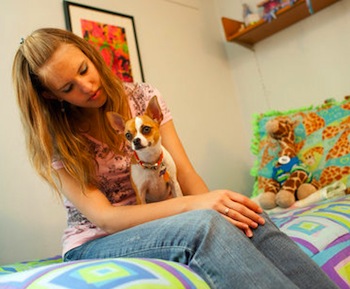 month-old
Chihuahua in her dorm room had only served to enhance her social and
academic experience at Stephens. “She really keeps me calm,”
Ms. Christian, 20, said as the dog, Annabelle, who weighs less than
seven pounds, tugged on a red leash on the grass outside her dorm
on a recent morning. “Sometimes during finals week, I get stressed
out. She always does something that makes me laugh.”
month-old
Chihuahua in her dorm room had only served to enhance her social and
academic experience at Stephens. “She really keeps me calm,”
Ms. Christian, 20, said as the dog, Annabelle, who weighs less than
seven pounds, tugged on a red leash on the grass outside her dorm
on a recent morning. “Sometimes during finals week, I get stressed
out. She always does something that makes me laugh.”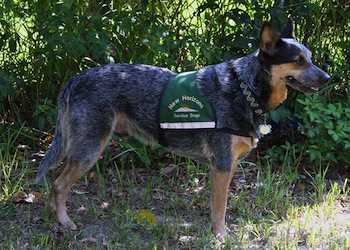 Whether
playing fetch or taking a walk by the lake, the two are constant companions.
But Middy is no ordinary pet.
Whether
playing fetch or taking a walk by the lake, the two are constant companions.
But Middy is no ordinary pet.

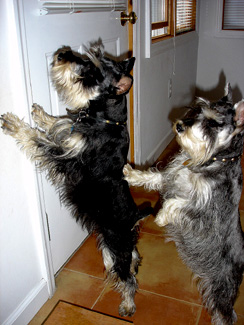 it
is for him. No one likes to see a beloved pet upset—plus, any
time away from home might be spent worrying what kind of mess awaits
your return. Will your pooch tear up the sofa? Chew the walls? Pee
on the carpet? Shake, drool and bark for hours?
it
is for him. No one likes to see a beloved pet upset—plus, any
time away from home might be spent worrying what kind of mess awaits
your return. Will your pooch tear up the sofa? Chew the walls? Pee
on the carpet? Shake, drool and bark for hours? ago.
ago. connection
with a reported “puppy mill” discovered in May.
connection
with a reported “puppy mill” discovered in May.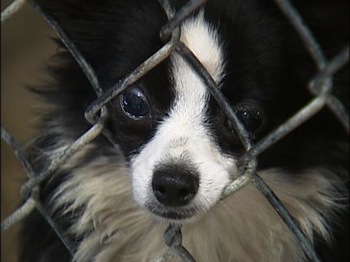 Authorities
contend that the dogs had food but the living conditions were “terrible.”
Long announced the day after the raid that a veterinarian that accompanied
deputies on the raid took several dogs immediately because of the
conditions.
Authorities
contend that the dogs had food but the living conditions were “terrible.”
Long announced the day after the raid that a veterinarian that accompanied
deputies on the raid took several dogs immediately because of the
conditions.

 include
water content, nutrition, dental health, and cost.
include
water content, nutrition, dental health, and cost.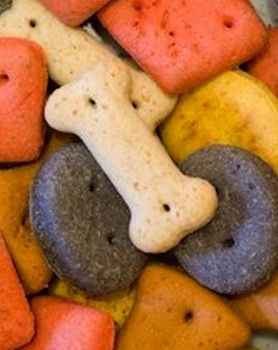 turtles
and the many exotic animals people keep as pets), there is a product
ready to meet it: vegetarian, organic, holistic, natural, raw, kosher,
all-meat, gluten-free, high-fiber, high-protein, grain-free, low-fat,
“lite” and anti-allergy. There are products for young
and old pets and those with sensitive skin, sensitive stomachs and
sensitive skin and stomachs, as well as foods enriched with supplements
like antioxidants, omega-3 fatty acids, glucosamine and chondroitin,
the value of which has yet to be established for people, let alone
pets.
turtles
and the many exotic animals people keep as pets), there is a product
ready to meet it: vegetarian, organic, holistic, natural, raw, kosher,
all-meat, gluten-free, high-fiber, high-protein, grain-free, low-fat,
“lite” and anti-allergy. There are products for young
and old pets and those with sensitive skin, sensitive stomachs and
sensitive skin and stomachs, as well as foods enriched with supplements
like antioxidants, omega-3 fatty acids, glucosamine and chondroitin,
the value of which has yet to be established for people, let alone
pets. home
were rescued by firefighters with the use of new pet resuscitation
masks donated to the Chicago Fire Department.
home
were rescued by firefighters with the use of new pet resuscitation
masks donated to the Chicago Fire Department. opportunity
to use the masks, Langford said.
opportunity
to use the masks, Langford said.
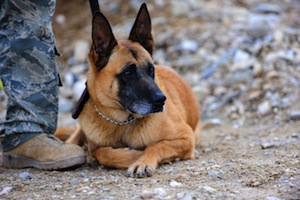
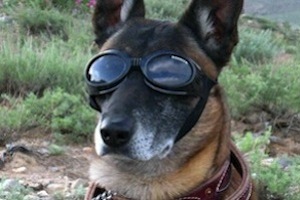
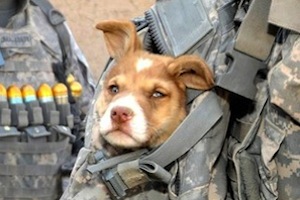

 There's
no question who's top dog in the Obama administration.
There's
no question who's top dog in the Obama administration. some
made from two (or three or four) combined spaces, are bordered by
Central Park on the west, and to the north by the Guggenheim Museum.
some
made from two (or three or four) combined spaces, are bordered by
Central Park on the west, and to the north by the Guggenheim Museum.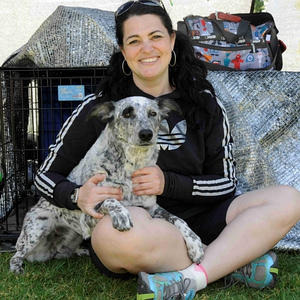 the
agile pup. “Until now, she wasn’t able to participate
in her own kennel club’s agility trial.”
But on April 1, the country’s most prestigious dog organization,
the American Kennel Club, introduced the Canine Partners program,
allowing mixed-breed dogs to compete alongside their purebred cousins
for the first time ever. (And, no, it wasn’t an April Fools’
Day prank.)
the
agile pup. “Until now, she wasn’t able to participate
in her own kennel club’s agility trial.”
But on April 1, the country’s most prestigious dog organization,
the American Kennel Club, introduced the Canine Partners program,
allowing mixed-breed dogs to compete alongside their purebred cousins
for the first time ever. (And, no, it wasn’t an April Fools’
Day prank.) celebrate
the long, lazy "dog days" of the season. But even though
animals are eager to play outside in warmer climates, the sunny weather
can bring perils for both cats and dogs.
celebrate
the long, lazy "dog days" of the season. But even though
animals are eager to play outside in warmer climates, the sunny weather
can bring perils for both cats and dogs.
 The
Westchester County district attorney's office says 21-year-old Jonathan
King of Yorktown was sentenced Tuesday to a year in prison and a year
of probation.
The
Westchester County district attorney's office says 21-year-old Jonathan
King of Yorktown was sentenced Tuesday to a year in prison and a year
of probation.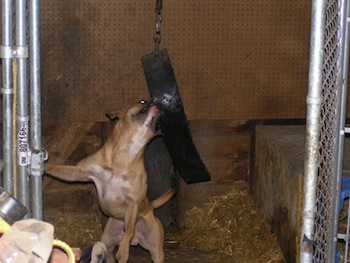 grab
onto a toy and play a tug of war of sorts with the spring mechanism
providing the resistance. This does not make them fight trainers,
just average people with average homes using equipment the way it's
intended. Wilson said those with two-story houses may be able to look
down into a backyard and see spring poles hanging from trees but she
cautions people to not judge on this alone.
grab
onto a toy and play a tug of war of sorts with the spring mechanism
providing the resistance. This does not make them fight trainers,
just average people with average homes using equipment the way it's
intended. Wilson said those with two-story houses may be able to look
down into a backyard and see spring poles hanging from trees but she
cautions people to not judge on this alone. suitcases
at the Edmonton International Airport. Officers then took the suitcases
aside and found the tortoises along with other prohibited food and
plant material.
suitcases
at the Edmonton International Airport. Officers then took the suitcases
aside and found the tortoises along with other prohibited food and
plant material.
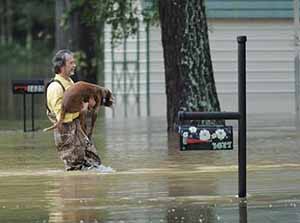
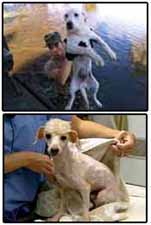 worst
flooding in the history of the region, but that's what happened in
Tennessee earlier this month.
worst
flooding in the history of the region, but that's what happened in
Tennessee earlier this month. 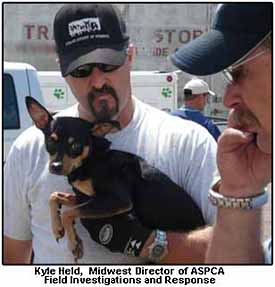 repeated
washings in Dawn liquid dish detergent as the flood waters turned
toxic.
repeated
washings in Dawn liquid dish detergent as the flood waters turned
toxic. 
 things
dog clubs, owners and breeders can do to make a difference. In this
second installment, we provide ways to find out candidates’
views on canine legislation.
things
dog clubs, owners and breeders can do to make a difference. In this
second installment, we provide ways to find out candidates’
views on canine legislation. 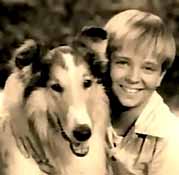
 Now
playing in Baltimore: "CSI Meets Lassie."
Now
playing in Baltimore: "CSI Meets Lassie."  the
extra mile to make sure that every stray she comes across along the
highway or in her neighborhood gets a good shot at finding its way
home.
the
extra mile to make sure that every stray she comes across along the
highway or in her neighborhood gets a good shot at finding its way
home. 
 while
most of these pooches are warm and neighborly, it is important to
know how to protect yourself and those around you in case a risky
situation arises.
while
most of these pooches are warm and neighborly, it is important to
know how to protect yourself and those around you in case a risky
situation arises. 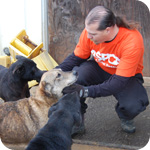 illustrate,
disasters come in all shapes and sizes. Even with the aid of disaster
response teams, homes and families were devastated by these destructive
events—and many evacuees lost their companion animals.
illustrate,
disasters come in all shapes and sizes. Even with the aid of disaster
response teams, homes and families were devastated by these destructive
events—and many evacuees lost their companion animals.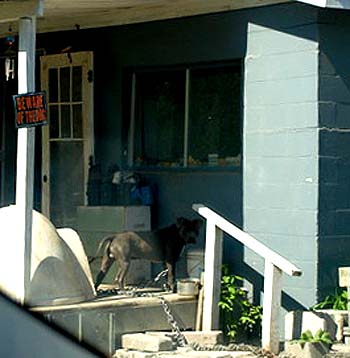 methamphetamine
last month, they ran into an all-too common obstacle: a large, snarling
dog on the front porch.
methamphetamine
last month, they ran into an all-too common obstacle: a large, snarling
dog on the front porch. 
 Nationally
recognized as one of the country premier vacation destinations, the
YMCA of the Rockies has two pet-friendly vacation locations in the
Colorado Rockies. The Estes Park Center offers beautiful trails for
canine-friendly hiking and every Friday during July, a Yappy Hour
is hosted for canine guests. Yappetizers and doggy drinks will be
served and special guests will give presentations on subjects such
as canine nutrition, obedience and agility, and veterinarian advice.
Nationally
recognized as one of the country premier vacation destinations, the
YMCA of the Rockies has two pet-friendly vacation locations in the
Colorado Rockies. The Estes Park Center offers beautiful trails for
canine-friendly hiking and every Friday during July, a Yappy Hour
is hosted for canine guests. Yappetizers and doggy drinks will be
served and special guests will give presentations on subjects such
as canine nutrition, obedience and agility, and veterinarian advice.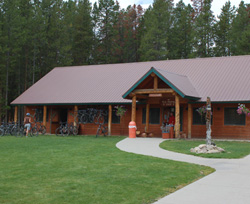 At
the second location, near Winter Park, dog owners seem to love the
serenity of Snow Mountain Ranch and the wide variety of trails available
for them and their pets. Both locations offer a wide variety of activities
exclusively for humans, including mini golf, disc golf, swimming,
fly fishing, rafting, horseback riding, guided hikes in Rocky Mountain
National Park, arts and crafts centers, day camp programs, and family
nature programs.
At
the second location, near Winter Park, dog owners seem to love the
serenity of Snow Mountain Ranch and the wide variety of trails available
for them and their pets. Both locations offer a wide variety of activities
exclusively for humans, including mini golf, disc golf, swimming,
fly fishing, rafting, horseback riding, guided hikes in Rocky Mountain
National Park, arts and crafts centers, day camp programs, and family
nature programs.
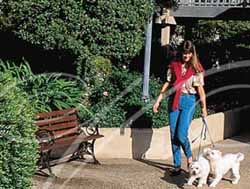 The
historic inn offers a pooch-friendly package that comes with two treats:
"Love Me, Love My Dog" includes cozy, specially designed
accommodations for two humans and one hound, souvenir water bowls,
tail wagging doggie snacks, a beach toy; and for the pet owners, continental
breakfast buffet and an evening wine and cheese reception. Each room
has a fireplace — the perfect place for pooches to curl up and
nap.
The
historic inn offers a pooch-friendly package that comes with two treats:
"Love Me, Love My Dog" includes cozy, specially designed
accommodations for two humans and one hound, souvenir water bowls,
tail wagging doggie snacks, a beach toy; and for the pet owners, continental
breakfast buffet and an evening wine and cheese reception. Each room
has a fireplace — the perfect place for pooches to curl up and
nap. 
 Described as the "Club Med for Dogs," Canine Club Getaway
only happens in 2010 from June 2 to June 6 at Lake George, NY. The
all-inclusive, resort-style 4-day getaway holds dozens of activities
daily, such as swimming — where dogs are allowed in the pool
— agility classes, hiking, Frisbee, lure coursing, flyball,
doggie skateboarding, canine CPR, as well as "barks and crafts."
Described as the "Club Med for Dogs," Canine Club Getaway
only happens in 2010 from June 2 to June 6 at Lake George, NY. The
all-inclusive, resort-style 4-day getaway holds dozens of activities
daily, such as swimming — where dogs are allowed in the pool
— agility classes, hiking, Frisbee, lure coursing, flyball,
doggie skateboarding, canine CPR, as well as "barks and crafts."
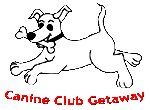
 In Cali, the surf's up and for dogs, that means the Fifth Annual Dog
Surfing
In Cali, the surf's up and for dogs, that means the Fifth Annual Dog
Surfing  Competition!
As part of Loews Hotels' award-winning Loews Loves Pets program, the
May 22nd surf event is raising money this year for the San Diego Police
Department Unit. Through the course of the "surf dog" weekend,
a special room rate applies — plus, all surf dogs receive a
pet placemat, food and water bowls, dog tags, treats and scoop bags.
For entering the competition, doggie contestants get surf shorts or
a bandana.
Competition!
As part of Loews Hotels' award-winning Loews Loves Pets program, the
May 22nd surf event is raising money this year for the San Diego Police
Department Unit. Through the course of the "surf dog" weekend,
a special room rate applies — plus, all surf dogs receive a
pet placemat, food and water bowls, dog tags, treats and scoop bags.
For entering the competition, doggie contestants get surf shorts or
a bandana. 
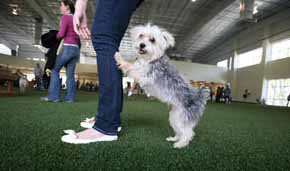 If someone said "doggie park" and "summer vacay"
in the same sentence you may be less than enthused, but Unleashed
Dog Park isn't your ordinary doggie playdate locale. Located in Dallas,
Texas, it's a giant (at 50,000-square feet of special K-9 turf) indoor
dog amusement park. As the nation's first indoor, off-leash play park,
it also offers shopping, dining and dog services, such as "paw-cures"
and blueberry facials for both owners and pets. With day care services
also provided, the family can get out and enjoy the nearby lakes and
water parks, as well as other tourist attractions in Dallas.
If someone said "doggie park" and "summer vacay"
in the same sentence you may be less than enthused, but Unleashed
Dog Park isn't your ordinary doggie playdate locale. Located in Dallas,
Texas, it's a giant (at 50,000-square feet of special K-9 turf) indoor
dog amusement park. As the nation's first indoor, off-leash play park,
it also offers shopping, dining and dog services, such as "paw-cures"
and blueberry facials for both owners and pets. With day care services
also provided, the family can get out and enjoy the nearby lakes and
water parks, as well as other tourist attractions in Dallas.
 Known
as the largest passenger vessel currently sailing the seas, the Queen
Mary 2 is also reported to be the only cruise which allows pets to
join their owners on deck. Operated by Cunard Line, the "Pets
on Deck" program offers Queen Mary 2 canine passengers fresh-baked
biscuits at turn-down, a choice of beds and blankets, and even a QM2-logo
coat. The kennel program is overseen by a full-time kennel master,
while the kennels and adjacent indoor and outdoor walking areas are
open throughout the day, so guests can spend time with their pets.
But the program is not just for dogs. Cats are invited too, and either
sort of pet will get a portrait with their owners, a crossing certificate
and personalized cruise card.
Known
as the largest passenger vessel currently sailing the seas, the Queen
Mary 2 is also reported to be the only cruise which allows pets to
join their owners on deck. Operated by Cunard Line, the "Pets
on Deck" program offers Queen Mary 2 canine passengers fresh-baked
biscuits at turn-down, a choice of beds and blankets, and even a QM2-logo
coat. The kennel program is overseen by a full-time kennel master,
while the kennels and adjacent indoor and outdoor walking areas are
open throughout the day, so guests can spend time with their pets.
But the program is not just for dogs. Cats are invited too, and either
sort of pet will get a portrait with their owners, a crossing certificate
and personalized cruise card. Fees
here and there add up when travel plans include the family pet, yet,
in downtown Miami, Kimpton's EPIC Hotel doesn't see the four-legged
family member as an extra cost: Pets stay free! Various pet-friendly
services and amenities are available including restful accommodations
in a luxury guestroom; VIP (Very Important Pet) amenity; pet bowl
and pet bed; leash and plastic bags for dog walks; as well as pet
sitting, grooming, walking and massages.
Fees
here and there add up when travel plans include the family pet, yet,
in downtown Miami, Kimpton's EPIC Hotel doesn't see the four-legged
family member as an extra cost: Pets stay free! Various pet-friendly
services and amenities are available including restful accommodations
in a luxury guestroom; VIP (Very Important Pet) amenity; pet bowl
and pet bed; leash and plastic bags for dog walks; as well as pet
sitting, grooming, walking and massages. 
 Yes,
the Colorado city and the surrounding Pikes Peak region has been named
one of the nations pet-friendliest by Men's Health and Forbes.com.
Boasting of mountain scenery chalked full of trails and open spaces,
the destinations screams adventure and is home to seven dog parks.
Pet-friendly accommodations exist for both dogs and cats, while attractions
and activities run the gamut, including Buckskin Joe Frontier Town
& Railway where pets go where you go, on a horse-drawn trolley
into town or on the train ride; Cripple Creek District Museum, Garden
of the Gods Trading Post, Historic Manitou Springs and Manitou Cliff
Dwelling are all sites, among others, open to leashed pets; and, Wilderness
Aware Rafting and Royal Gorge Bridge & Park offer free kennel
services while the family enjoys the rides. With most shops and restaurants
being pet-friendly, even offering treats and water, the Colorado Springs
region is a pet owner's paradise.
Yes,
the Colorado city and the surrounding Pikes Peak region has been named
one of the nations pet-friendliest by Men's Health and Forbes.com.
Boasting of mountain scenery chalked full of trails and open spaces,
the destinations screams adventure and is home to seven dog parks.
Pet-friendly accommodations exist for both dogs and cats, while attractions
and activities run the gamut, including Buckskin Joe Frontier Town
& Railway where pets go where you go, on a horse-drawn trolley
into town or on the train ride; Cripple Creek District Museum, Garden
of the Gods Trading Post, Historic Manitou Springs and Manitou Cliff
Dwelling are all sites, among others, open to leashed pets; and, Wilderness
Aware Rafting and Royal Gorge Bridge & Park offer free kennel
services while the family enjoys the rides. With most shops and restaurants
being pet-friendly, even offering treats and water, the Colorado Springs
region is a pet owner's paradise. 
 For the history buffs, this town is complete with trivia-rich sites
that also happen to be pet-friendly. With 15 pet friendly hotels in
price ranges to suit most travel budgets, the city offers many seasonal
outdoor dining areas for families with pooches, while various tours
are completely open to leashed canines, including Arlington Cemetery,
George Washington's Mount Vernon Estate and the Torpedo Art Factory
Center. Going for a cruise up the Potomac River is also a canine option,
as well as a walking tour of Alexandria, a hike on the Mount Vernon
Trail and, of course, several dog parks.
For the history buffs, this town is complete with trivia-rich sites
that also happen to be pet-friendly. With 15 pet friendly hotels in
price ranges to suit most travel budgets, the city offers many seasonal
outdoor dining areas for families with pooches, while various tours
are completely open to leashed canines, including Arlington Cemetery,
George Washington's Mount Vernon Estate and the Torpedo Art Factory
Center. Going for a cruise up the Potomac River is also a canine option,
as well as a walking tour of Alexandria, a hike on the Mount Vernon
Trail and, of course, several dog parks.
 pet
store bungled her best chance to make it back home.
pet
store bungled her best chance to make it back home.  shamed
Pit Bull that longs to be a princess pig – loved by all and
not feared for her impressive set of choppers.
shamed
Pit Bull that longs to be a princess pig – loved by all and
not feared for her impressive set of choppers.  Peters
says that if people take the time to consider a Pit Bull as a potential
pet, they will find pleasantly surprising conclusions of a similar
variety. “I love to change people’s perceptions about
Pit Bulls, and to show them how naturally sweet they are,” said
Peters, who holds two Tony Awards. “If you just take a dog by
itself, it will naturally be affectionate and love people. But anyone
can take a dog and mistreat it and make it nervous.”
Peters
says that if people take the time to consider a Pit Bull as a potential
pet, they will find pleasantly surprising conclusions of a similar
variety. “I love to change people’s perceptions about
Pit Bulls, and to show them how naturally sweet they are,” said
Peters, who holds two Tony Awards. “If you just take a dog by
itself, it will naturally be affectionate and love people. But anyone
can take a dog and mistreat it and make it nervous.” 

 Wire
Services
Wire
Services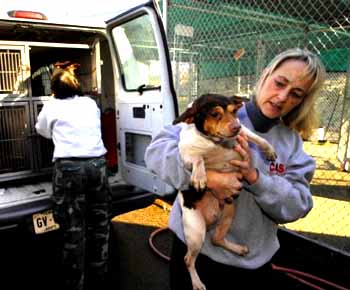 and
cats were left homeless after their owners either abandoned or lost
their pets during the evacuation.
and
cats were left homeless after their owners either abandoned or lost
their pets during the evacuation.  swimmer
Michael Phelps. “We talked to several people whose animals drowned
in the flood,” McNeely said. “Once the Shady Oaks Trailer
Park started flooding, the police wouldn’t let residents go
back into their trailers. One man had a puppy in a crate because it
was rambunctious, and they wouldn’t let him in to get his puppy.”
swimmer
Michael Phelps. “We talked to several people whose animals drowned
in the flood,” McNeely said. “Once the Shady Oaks Trailer
Park started flooding, the police wouldn’t let residents go
back into their trailers. One man had a puppy in a crate because it
was rambunctious, and they wouldn’t let him in to get his puppy.”


 ago.
ago. Cancer
Panel Report exhorted consumers to minimize their cancer risk by choosing
food grown without pesticides, chemical fertilizers, antibiotics,
and growth hormones.
Cancer
Panel Report exhorted consumers to minimize their cancer risk by choosing
food grown without pesticides, chemical fertilizers, antibiotics,
and growth hormones.  stretch
their legs and explore the new, green territory.
stretch
their legs and explore the new, green territory. protesters
have a mascot. A mystery mutt has turned up at every major
demonstration in Athens for the past two years and earned
iconic status. He's shadowed by photographers, inspires bloggers,
has earned fame in YouTube videos, and boasts his own Facebook
page (as "Riot-dog").
protesters
have a mascot. A mystery mutt has turned up at every major
demonstration in Athens for the past two years and earned
iconic status. He's shadowed by photographers, inspires bloggers,
has earned fame in YouTube videos, and boasts his own Facebook
page (as "Riot-dog"). 

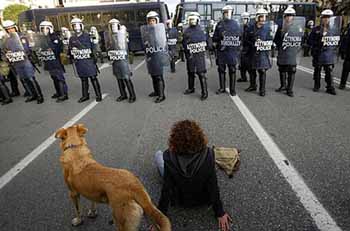



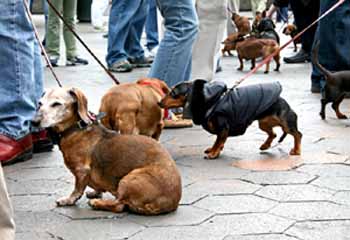 minted
New York University students test-drive their bikinis alongside grizzled
old-timers in faded protest shirts, while pit bulls – their
tongues lolling – pace the fountain. Labrador retrievers chase
pigeons. Street performers emote. Chess players deliberate. A motley
assortment of humans and canines shares space in the sun.
minted
New York University students test-drive their bikinis alongside grizzled
old-timers in faded protest shirts, while pit bulls – their
tongues lolling – pace the fountain. Labrador retrievers chase
pigeons. Street performers emote. Chess players deliberate. A motley
assortment of humans and canines shares space in the sun.  puppy
mill in Georgia, and arrived in the city malnourished, sickly, and
afraid. On this day, however, he appeared to be coming out of his
shell. “It’s the first time I’ve seen him like this,”
his owner remarked, as Lomax stood on his hind legs and attempted
to scramble up the side of the fountain in order to get a better view
of the drum circle taking place inside. “He’s usually
very timid, but he seems to be doing better now.”
puppy
mill in Georgia, and arrived in the city malnourished, sickly, and
afraid. On this day, however, he appeared to be coming out of his
shell. “It’s the first time I’ve seen him like this,”
his owner remarked, as Lomax stood on his hind legs and attempted
to scramble up the side of the fountain in order to get a better view
of the drum circle taking place inside. “He’s usually
very timid, but he seems to be doing better now.” 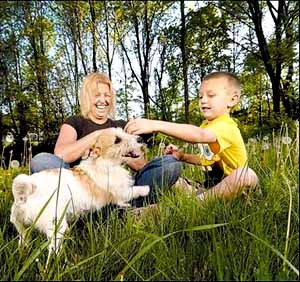 in
court to keep him.
in
court to keep him. 
 your
arrival right at the front door. As excited as you are to see your
pet, there is no doubt that your pup is just as excited to see you.
This initial excitement is very easy for humans to pick up on, but
during many other times throughout the day, you are on the same wavelength
as your dog and may not even know it.
your
arrival right at the front door. As excited as you are to see your
pet, there is no doubt that your pup is just as excited to see you.
This initial excitement is very easy for humans to pick up on, but
during many other times throughout the day, you are on the same wavelength
as your dog and may not even know it. 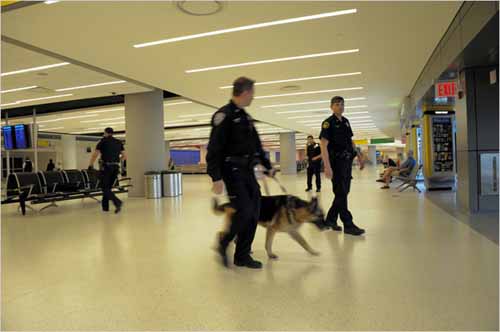

 Murphy,
started walking across the country for canine cancer awareness, so
it’s understandable that the 39-year-old is ready for their
journey to culminate in mid-June. Robinson and “the boys,”
as he calls them, spoke to Zootoo Pet News just outside of Mystic,
Ct., with only 110 miles to go until their final destination of Boston,
where hundreds of people from 16 states will meet them to walk the
last, much-anticipated lap.
Murphy,
started walking across the country for canine cancer awareness, so
it’s understandable that the 39-year-old is ready for their
journey to culminate in mid-June. Robinson and “the boys,”
as he calls them, spoke to Zootoo Pet News just outside of Mystic,
Ct., with only 110 miles to go until their final destination of Boston,
where hundreds of people from 16 states will meet them to walk the
last, much-anticipated lap. 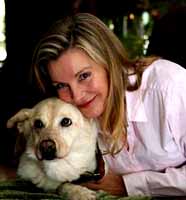 the
many to join Robinson on his journey. She and her two-year-old mutt,
Super Smiley, accompanied him, Hudson, and Murphy for one week in
mid-April on the East Coast. Blake described the experience as “completely
energizing,” in part because of the constant support that onlookers
and followers from afar provided.
the
many to join Robinson on his journey. She and her two-year-old mutt,
Super Smiley, accompanied him, Hudson, and Murphy for one week in
mid-April on the East Coast. Blake described the experience as “completely
energizing,” in part because of the constant support that onlookers
and followers from afar provided. 


 DAY
15: Two weeks into his training, and Baxter is improved. He's
not perfect — heck, the Stooges started a face-slapping free-for-all
at their coming-out party — but he's on the right track.
DAY
15: Two weeks into his training, and Baxter is improved. He's
not perfect — heck, the Stooges started a face-slapping free-for-all
at their coming-out party — but he's on the right track.


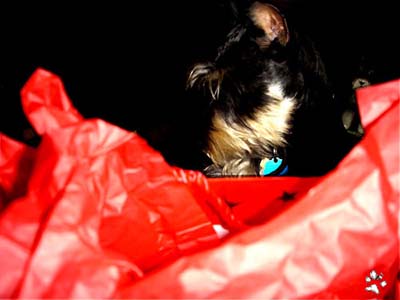




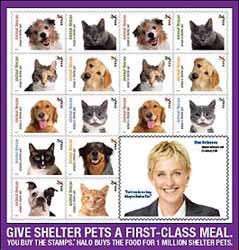 The
post office is holding out a friendly paw to dogs, and cats too.
The
post office is holding out a friendly paw to dogs, and cats too. honored
with a “Making a Difference” Award from Kings County (Brooklyn)
District Attorney Charles J. Hynes. Each April during Prevention of
Cruelty to Animals Month, the Kings County D.A. presents these distinguished
awards as a tribute to those who have made outstanding contributions
to the prevention of animal abuse.
honored
with a “Making a Difference” Award from Kings County (Brooklyn)
District Attorney Charles J. Hynes. Each April during Prevention of
Cruelty to Animals Month, the Kings County D.A. presents these distinguished
awards as a tribute to those who have made outstanding contributions
to the prevention of animal abuse.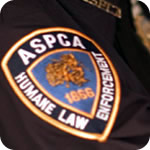
 Greyhound
Protection Act (House Bill 630) to permanently ban the racing of Greyhounds
in the Granite State. The bill had already passed the state’s
House of Representatives in March, so it now goes to Governor John
Lynch, who is expected to sign it into state law.
Greyhound
Protection Act (House Bill 630) to permanently ban the racing of Greyhounds
in the Granite State. The bill had already passed the state’s
House of Representatives in March, so it now goes to Governor John
Lynch, who is expected to sign it into state law. confined
for 20 hours or more a day in small cages, often wearing muzzles;
they are bred excessively in the quest for good runners, with the
“excess” puppies killed or otherwise discarded; they suffer
from inhumane transportation as they’re shuttled from state
to state for racing purposes; and they regularly endure serious and
fatal injuries.
confined
for 20 hours or more a day in small cages, often wearing muzzles;
they are bred excessively in the quest for good runners, with the
“excess” puppies killed or otherwise discarded; they suffer
from inhumane transportation as they’re shuttled from state
to state for racing purposes; and they regularly endure serious and
fatal injuries.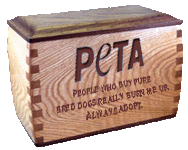
 American
Holistic Veterinary Medical Association, but cooking for the cat or
dog requires precision.
American
Holistic Veterinary Medical Association, but cooking for the cat or
dog requires precision.  Tuesday
while taking out the garbage.
Tuesday
while taking out the garbage.  could
help detect one of the leading canine killers would seem like good
news, but some veterinarians are not completely sold.
could
help detect one of the leading canine killers would seem like good
news, but some veterinarians are not completely sold.  dog.
dog.
 "I
knew there were a lot of predators out there. You'll hear a pack of
coyotes. People are losing small cats and dogs all the time out there
in that community," Perry said. "They're very wily creatures."
"I
knew there were a lot of predators out there. You'll hear a pack of
coyotes. People are losing small cats and dogs all the time out there
in that community," Perry said. "They're very wily creatures."
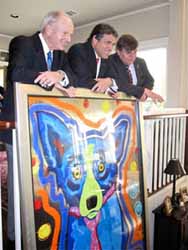 Perry
said the laser-pointer helped make a quick, clean kill. "It was
not in a lot of pain," he said. "It pretty much went down
at that particular juncture."
Perry
said the laser-pointer helped make a quick, clean kill. "It was
not in a lot of pain," he said. "It pretty much went down
at that particular juncture." 
 suspected
dognappers who demanded ransom for the puppy's safe return.
suspected
dognappers who demanded ransom for the puppy's safe return. stopped
the car after it left the parking lot. They arrested Adonison
Gunther, 31, of Oakland and Marisa Jackson, 21 (right), of Elk Grove.
Both were booked into the Sacramento County Jail on charges of extortion,
conspiracy and possession of stolen property and were later released
on bail.
stopped
the car after it left the parking lot. They arrested Adonison
Gunther, 31, of Oakland and Marisa Jackson, 21 (right), of Elk Grove.
Both were booked into the Sacramento County Jail on charges of extortion,
conspiracy and possession of stolen property and were later released
on bail. she
said, when Jolly the dog came to thank the Pollard School kindergarten.
The children helped pay for surgery that saved his front leg. Chassity
and the other students, then in teacher Toniann Hamilton’s kindergarten,
lined up around the flagpole “where all the flowers were sprouting,”
and met the dog whose cause they had adopted.
she
said, when Jolly the dog came to thank the Pollard School kindergarten.
The children helped pay for surgery that saved his front leg. Chassity
and the other students, then in teacher Toniann Hamilton’s kindergarten,
lined up around the flagpole “where all the flowers were sprouting,”
and met the dog whose cause they had adopted. 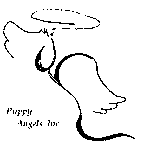

 weekend
at the box office. And for homeless and handicapped pets, the movie
is more than just a fun flick.
weekend
at the box office. And for homeless and handicapped pets, the movie
is more than just a fun flick. 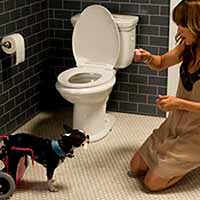 Expected to be the studio's first major success, since "CBS Films
has only been around for a couple years," "The Back-Up Plan"
could help raise awareness on the issues surrounding homeless and
handicapped pets.
Expected to be the studio's first major success, since "CBS Films
has only been around for a couple years," "The Back-Up Plan"
could help raise awareness on the issues surrounding homeless and
handicapped pets. 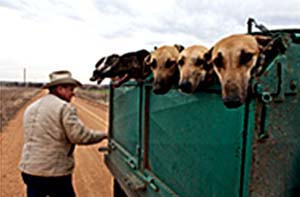 sprang
from a cluster of trees. Two greyhounds were fighting a pack of coyotes
. One greyhound was bitten on a front paw and a back leg. The other
was bitten in the jaw, and blood soaked its muzzle. But two of the
seven coyotes died. The greyhounds, wild-eyed and wet with slobber,
trotted to their owner, John Hardzog, a cattle rancher who was waiting
nearby.
sprang
from a cluster of trees. Two greyhounds were fighting a pack of coyotes
. One greyhound was bitten on a front paw and a back leg. The other
was bitten in the jaw, and blood soaked its muzzle. But two of the
seven coyotes died. The greyhounds, wild-eyed and wet with slobber,
trotted to their owner, John Hardzog, a cattle rancher who was waiting
nearby. 
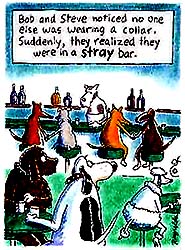 Weird
BUT
true
Weird
BUT
true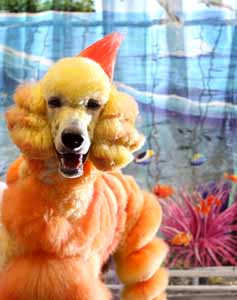
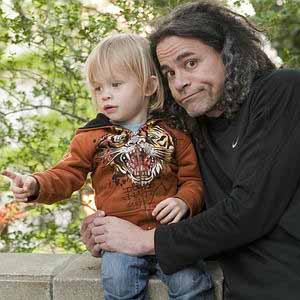 Heights,
they expected an escape from constant taxi horns
and room for their 3-year-old son to play. They
didn’t foresee having to sidestep dog poop
everywhere they walked.
Heights,
they expected an escape from constant taxi horns
and room for their 3-year-old son to play. They
didn’t foresee having to sidestep dog poop
everywhere they walked. 
 owner
when she shielded her pet.
owner
when she shielded her pet.  many
switched to a raw diet for their dogs or cats. But
did those pet owners jump out of the frying pan
and into the fire? Raw diets include the whole animal,
including organs and ground bone. They can be served
in carcass form or ground up and formed into patties.
many
switched to a raw diet for their dogs or cats. But
did those pet owners jump out of the frying pan
and into the fire? Raw diets include the whole animal,
including organs and ground bone. They can be served
in carcass form or ground up and formed into patties.
 winding
back roads to a fire at his owners' workshop.
winding
back roads to a fire at his owners' workshop.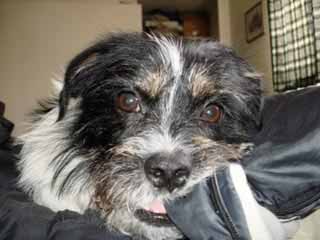 suffering
from HIV and AIDS to care for their pets. For Sutton,
the goal was personal. She had recently watched
as a close friend suffering from AIDS was forced
to give up his two cats. He quickly became depressed,
saying that losing his cats was like losing a main
reason to live. Sutton knew she had to help him
keep his pets and, in doing so, she watched him
gain a reason to fight.
suffering
from HIV and AIDS to care for their pets. For Sutton,
the goal was personal. She had recently watched
as a close friend suffering from AIDS was forced
to give up his two cats. He quickly became depressed,
saying that losing his cats was like losing a main
reason to live. Sutton knew she had to help him
keep his pets and, in doing so, she watched him
gain a reason to fight.  had
won the “creative challenge” event the
past two years at Intergroom , one of the more prestigious
competitions on the calendar. First, she clipped
and colored a standard poodle into an ode to Elvis
Presley — Elvis on one side, a guitar on the
other. Last year, she turned a dog into a peacock.
She is one of the best at canine topiary.
had
won the “creative challenge” event the
past two years at Intergroom , one of the more prestigious
competitions on the calendar. First, she clipped
and colored a standard poodle into an ode to Elvis
Presley — Elvis on one side, a guitar on the
other. Last year, she turned a dog into a peacock.
She is one of the best at canine topiary. 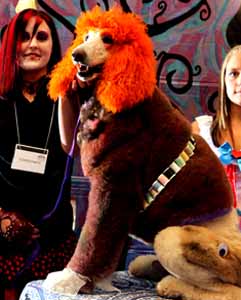 Diane
Betelak was the judge. A frequent winner of these
increasingly popular contests, Betelak said she
looked for whether the clipping was concise and
the color vibrant, and whether the design was original,
among other things. “Some ideas have been
used over and over, like a carousel horse,”
Betelak said. “So if you bring me a carousel
horse, it better be spectacular.” She awarded
third place to the Mad Hatter, accompanied by three
people fully decked in other Alice in Wonderland
costumes. The dog “wore” a fur-coat-colored
brown, had the March Hare on its left rear leg and
tea cups on its right. Brynn Haynes of Whitehall,
Pa., the groomer and the Red Queen, said she spent
25 hours creating it.
Diane
Betelak was the judge. A frequent winner of these
increasingly popular contests, Betelak said she
looked for whether the clipping was concise and
the color vibrant, and whether the design was original,
among other things. “Some ideas have been
used over and over, like a carousel horse,”
Betelak said. “So if you bring me a carousel
horse, it better be spectacular.” She awarded
third place to the Mad Hatter, accompanied by three
people fully decked in other Alice in Wonderland
costumes. The dog “wore” a fur-coat-colored
brown, had the March Hare on its left rear leg and
tea cups on its right. Brynn Haynes of Whitehall,
Pa., the groomer and the Red Queen, said she spent
25 hours creating it. 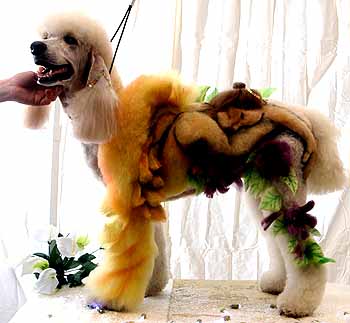 The
winner came as little surprise. After scrapping
plans to bring her buffalo-themed poodle —
a buffoodle? — Kumpe started from scratch
a week ago with a friend’s standard poodle
that had not been clipped in nearly a year. A woman’s
body was sculptured onto one side of the dog, head
turned away and hair tied in a bun. “It’s
a grieving angel for my mom,” Kumpe said.
Her mother, Linda Smead, was 66. Kumpe was dressed
in white and wore white wings. Down the dog’s
rear leg, and on most of its opposite side, were
fragile-looking purple flowers and green leaves,
part of the dog’s manicured coat and marked
with exacting detail. They matched artificial flowers
and greenery at the dog’s table.
The
winner came as little surprise. After scrapping
plans to bring her buffalo-themed poodle —
a buffoodle? — Kumpe started from scratch
a week ago with a friend’s standard poodle
that had not been clipped in nearly a year. A woman’s
body was sculptured onto one side of the dog, head
turned away and hair tied in a bun. “It’s
a grieving angel for my mom,” Kumpe said.
Her mother, Linda Smead, was 66. Kumpe was dressed
in white and wore white wings. Down the dog’s
rear leg, and on most of its opposite side, were
fragile-looking purple flowers and green leaves,
part of the dog’s manicured coat and marked
with exacting detail. They matched artificial flowers
and greenery at the dog’s table. 
 year,
a stray dog was nabbed running the bases while stadium construction
was still under way. But next Saturday will be the first
day pets are officially welcomed to Citi Field in the stadium’s
first “Bark in the Park” dog day.
year,
a stray dog was nabbed running the bases while stadium construction
was still under way. But next Saturday will be the first
day pets are officially welcomed to Citi Field in the stadium’s
first “Bark in the Park” dog day.  A
former cocaine smuggler in Washington state was nabbed for
running a bestiality farm for tourists.
A
former cocaine smuggler in Washington state was nabbed for
running a bestiality farm for tourists.  ASPCA
to support the Mayor's Alliance for NYC's Animals—a
coalition of more than 160 animal rescue groups and shelters
that work with Animal Care & Control of New York City
(AC&C) to end the euthanasia of healthy and treatable
cats and dogs in city shelters.
ASPCA
to support the Mayor's Alliance for NYC's Animals—a
coalition of more than 160 animal rescue groups and shelters
that work with Animal Care & Control of New York City
(AC&C) to end the euthanasia of healthy and treatable
cats and dogs in city shelters. the
nickname “Puppy
Mill Capital of America.” Puppy mills
are large-scale commercial dog breeding operations where
profit is given priority over the well-being of the dogs.
The overcrowding and lack of basic hygiene, veterinary care
and exercise that are the hallmark of puppy mills create
puppies with numerous health and social issues—but
it is the breeding dogs, the ones who never get to leave,
who suffer the most.
the
nickname “Puppy
Mill Capital of America.” Puppy mills
are large-scale commercial dog breeding operations where
profit is given priority over the well-being of the dogs.
The overcrowding and lack of basic hygiene, veterinary care
and exercise that are the hallmark of puppy mills create
puppies with numerous health and social issues—but
it is the breeding dogs, the ones who never get to leave,
who suffer the most.
 While
the ASPCA
is disappointed with the Court's decision, we are moving forward! Representative
Elton Gallegly of California (left) has acted quickly and introduced
a bill to amend the law. H.R. 5092 will make the Crush Act's language
more specific and resolve the over-breadth concerns raised by the Supreme
Court.
While
the ASPCA
is disappointed with the Court's decision, we are moving forward! Representative
Elton Gallegly of California (left) has acted quickly and introduced
a bill to amend the law. H.R. 5092 will make the Crush Act's language
more specific and resolve the over-breadth concerns raised by the Supreme
Court. The
Supreme Court struck down a U.S. law Tuesday aimed at banning videos
that show graphic violence against animals, saying it violates the U.S.
constitutional right to free speech. The justices, voting 8-1, threw
out the criminal conviction of Robert Stevens (right), who was sentenced
to three years in prison for videos he made about Pit Bull fights.
The
Supreme Court struck down a U.S. law Tuesday aimed at banning videos
that show graphic violence against animals, saying it violates the U.S.
constitutional right to free speech. The justices, voting 8-1, threw
out the criminal conviction of Robert Stevens (right), who was sentenced
to three years in prison for videos he made about Pit Bull fights. 
 limited
to crush videos might be valid. Animal cruelty and dog fighting already
are illegal throughout the U.S.
limited
to crush videos might be valid. Animal cruelty and dog fighting already
are illegal throughout the U.S. 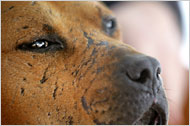

 zebra
fan until I drove my rented car into a traffic jam of zebras
here. My heart fluttered.
zebra
fan until I drove my rented car into a traffic jam of zebras
here. My heart fluttered. 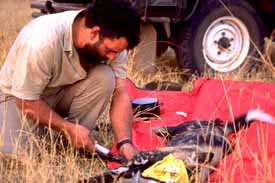 bounced
around the world for years as a sailor, zookeeper and kennel
owner, surviving a charging elephant, a venomous 12-foot black
mamba, a possibly rabid mongoose and a coma from cerebral
malaria.
bounced
around the world for years as a sailor, zookeeper and kennel
owner, surviving a charging elephant, a venomous 12-foot black
mamba, a possibly rabid mongoose and a coma from cerebral
malaria. 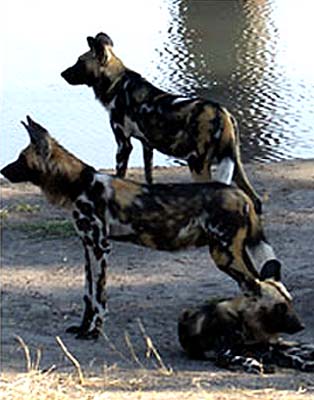 struggle
to rename them, so that they sound exotic rather than feral.
struggle
to rename them, so that they sound exotic rather than feral.
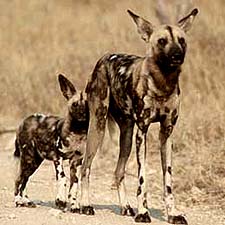
 come,
they can differentiate between hyenas and painted dogs. Because
when livestock are taken, it is primarily by hyenas, not Painted
Dogs.”
come,
they can differentiate between hyenas and painted dogs. Because
when livestock are taken, it is primarily by hyenas, not Painted
Dogs.” 


 drawing
attention to the plight of more than 50 dogs who were transported
on a Lufthansa cargo plane from the U.S. to a notorious Charles
River Laboratories animal testing facility in Scotland, Lufthansa
has announced a new policy prohibiting the transport of dogs
and cats to laboratories. To everyone who responded to our
call to action, thank you!
drawing
attention to the plight of more than 50 dogs who were transported
on a Lufthansa cargo plane from the U.S. to a notorious Charles
River Laboratories animal testing facility in Scotland, Lufthansa
has announced a new policy prohibiting the transport of dogs
and cats to laboratories. To everyone who responded to our
call to action, thank you! 
 disabilities
or special needs.
disabilities
or special needs.
 sits
high above the road. We called it that because the man who
lived there kept, it is said, about 40 large dogs in his small,
two-level garden. The area was surrounded with chicken wire
and a corrugated metal roof provided some shelter for the
animals.
sits
high above the road. We called it that because the man who
lived there kept, it is said, about 40 large dogs in his small,
two-level garden. The area was surrounded with chicken wire
and a corrugated metal roof provided some shelter for the
animals.  And
Katherine Heigl will be its top dog. We all not only love
and adore Katherine Heigl. She's beautiful, she's talented
-- but, also, she's a major dog lover. Four of her own. Romeo
(left), her Miniature Schnauzer, actually inspired a line
of handbags. Her foundation saved the lives of 25 Chihuahuas.
And
so addicted to rescuing others is she that her husband put
out a moratorium. Before their house turns into a kennel --
that's it. No more.
And
Katherine Heigl will be its top dog. We all not only love
and adore Katherine Heigl. She's beautiful, she's talented
-- but, also, she's a major dog lover. Four of her own. Romeo
(left), her Miniature Schnauzer, actually inspired a line
of handbags. Her foundation saved the lives of 25 Chihuahuas.
And
so addicted to rescuing others is she that her husband put
out a moratorium. Before their house turns into a kennel --
that's it. No more.  looked
like a lawnmower from stage left all across to stage right.
Not only did we applaud maniacally each time he did it, whereupon
his tail wagged hard enough to cause a breeze, but he was
awarded a turkey hot dog. Listen, I understood how Jackson
felt. For any kind of hot dog in Madison Square Garden, I'd
have pushed that stupid lawnmower right out into the street.
looked
like a lawnmower from stage left all across to stage right.
Not only did we applaud maniacally each time he did it, whereupon
his tail wagged hard enough to cause a breeze, but he was
awarded a turkey hot dog. Listen, I understood how Jackson
felt. For any kind of hot dog in Madison Square Garden, I'd
have pushed that stupid lawnmower right out into the street.
 low-concept
pantomime, she brings nothing fresh to the table. Taking her
cue from the 1996 live-action feature and its sequel, Ms.
Gettelfinger capably channels Glenn Close , who slathered
a hammy dollop of Norma Desmond onto the imperious snarl of
Betty Lou Gerson, voice of the original Cruella. But hers
is a watered-down facsimile of a classic villainess.
low-concept
pantomime, she brings nothing fresh to the table. Taking her
cue from the 1996 live-action feature and its sequel, Ms.
Gettelfinger capably channels Glenn Close , who slathered
a hammy dollop of Norma Desmond onto the imperious snarl of
Betty Lou Gerson, voice of the original Cruella. But hers
is a watered-down facsimile of a classic villainess. 

 Upper
East Sider Lynne Correia, the motivation was her 7-year-old
Brussels griffon, Gidget.
Upper
East Sider Lynne Correia, the motivation was her 7-year-old
Brussels griffon, Gidget. 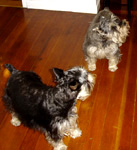 out
after breakfast and watch foxes come by and snatch them in
their jaws. Creatures of modernity, we do occasionally hear
a jet overhead or a distant car. A neighbor's children play
in their backyard. This is all good.
out
after breakfast and watch foxes come by and snatch them in
their jaws. Creatures of modernity, we do occasionally hear
a jet overhead or a distant car. A neighbor's children play
in their backyard. This is all good. 
 Johnny Claude, a Standard Poodle, curled up beside a pint-sized
rocking chair and waited for a youngster to come. The six-year-old
dog started working with the Hampstead children about a year
ago but medical problems have kept him away for the past several
months, according to Janet Eagleson, spokeswoman for the library.
Johnny Claude, a Standard Poodle, curled up beside a pint-sized
rocking chair and waited for a youngster to come. The six-year-old
dog started working with the Hampstead children about a year
ago but medical problems have kept him away for the past several
months, according to Janet Eagleson, spokeswoman for the library.


 The
little guy certainly deserves a good life now.
The
little guy certainly deserves a good life now.  according
to a new book on canine obesity.
according
to a new book on canine obesity.




 writer/director
sister, Nora. Their play “Love, Loss, and What I Wore”
is running Off Broadway with a fresh cast each month, and their screenwriting
credits include the comedy “You’ve Got Mail.” Delia
Ephron’s latest novel for young adults is “The Girl With
the Mermaid Hair,” which explores a dysfunctional family and
its dysfunctional relationship with cosmetic surgery. She lives in
Greenwich Village with her husband, Jerome Kass, also a writer, and
their multinamed Havanese, Honey Pansy Cornflower Bernice Mambo Kass.
writer/director
sister, Nora. Their play “Love, Loss, and What I Wore”
is running Off Broadway with a fresh cast each month, and their screenwriting
credits include the comedy “You’ve Got Mail.” Delia
Ephron’s latest novel for young adults is “The Girl With
the Mermaid Hair,” which explores a dysfunctional family and
its dysfunctional relationship with cosmetic surgery. She lives in
Greenwich Village with her husband, Jerome Kass, also a writer, and
their multinamed Havanese, Honey Pansy Cornflower Bernice Mambo Kass.

 special-occasion
snack: two J.G. Melon cheeseburgers served medium rare, hold
the onion and pickle.) So I gathered my courage and bit the
bullet.
special-occasion
snack: two J.G. Melon cheeseburgers served medium rare, hold
the onion and pickle.) So I gathered my courage and bit the
bullet.  Wisconsin
police said a dog caused a fender-bender in a parking lot when it
knocked a parked car's gear shift into neutral. Middleton police said
the car's owner had stopped for lunch Thursday and left his dog in
the car.
Wisconsin
police said a dog caused a fender-bender in a parking lot when it
knocked a parked car's gear shift into neutral. Middleton police said
the car's owner had stopped for lunch Thursday and left his dog in
the car. 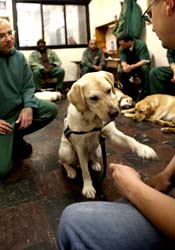 Aaron
Ellis (left, in training), 29, another Iraq veteran with the stress
disorder, scrapped his medications entirely soon after getting a dog
— and set foot in a grocery store for the first time in three
years.
Aaron
Ellis (left, in training), 29, another Iraq veteran with the stress
disorder, scrapped his medications entirely soon after getting a dog
— and set foot in a grocery store for the first time in three
years. 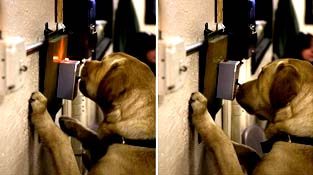 Veterans
rely on their dogs to gauge the safety of their surroundings, allowing
them to venture into public places without constantly scanning for
snipers, hidden bombs and other dangers lurking in the minds of those
with the disorder.
Veterans
rely on their dogs to gauge the safety of their surroundings, allowing
them to venture into public places without constantly scanning for
snipers, hidden bombs and other dangers lurking in the minds of those
with the disorder. 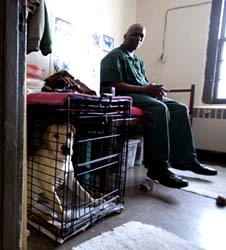 Puppies
Behind Bars, a program based in New York State that uses prisoners
to raise and train dogs for lives of service. At the Mid-Orange Correctional
Facility in Warwick, N.Y., service dogs share a room with the prisoners
who help train them (right).
Puppies
Behind Bars, a program based in New York State that uses prisoners
to raise and train dogs for lives of service. At the Mid-Orange Correctional
Facility in Warwick, N.Y., service dogs share a room with the prisoners
who help train them (right). 
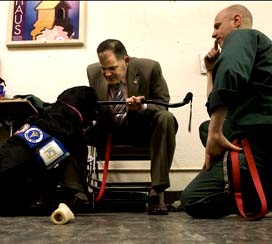 James
Becker (right, with Annie), she decided, with support from his doctors,
to take a chance on a veteran who had just left inpatient care. Major
Becker, 45, suffered two severe brain injuries in separate explosions,
earning two Purple Hearts in his three tours in Iraq and Afghanistan.
When he came home last winter, his 24-year-old daughter, also an Iraq
veteran, was being treated for leukemia.
James
Becker (right, with Annie), she decided, with support from his doctors,
to take a chance on a veteran who had just left inpatient care. Major
Becker, 45, suffered two severe brain injuries in separate explosions,
earning two Purple Hearts in his three tours in Iraq and Afghanistan.
When he came home last winter, his 24-year-old daughter, also an Iraq
veteran, was being treated for leukemia. 
 tethered
in the back yard. The nighttime attack is yet another sign of the
region's booming coyote population -- which has seen the wild animals
roam as far so0uth as lower Manhattan.
tethered
in the back yard. The nighttime attack is yet another sign of the
region's booming coyote population -- which has seen the wild animals
roam as far so0uth as lower Manhattan. 
 seizure
law. This means that animal shelters are no longer required to turn
over animals for use in cruel experiments.
seizure
law. This means that animal shelters are no longer required to turn
over animals for use in cruel experiments.




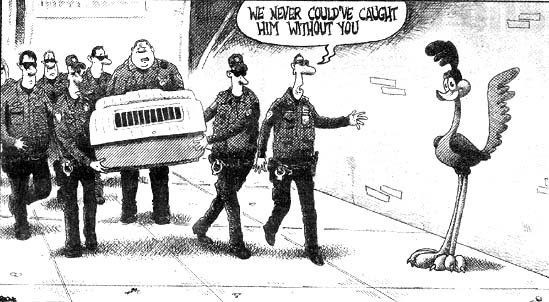
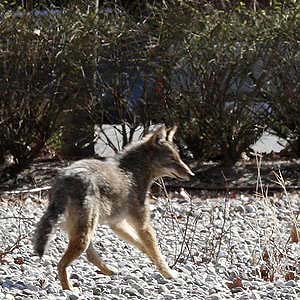
 municipal
shelter and placed her in the life-saving Help Every Little Pet
(HELP) Program. Alice and her unborn puppies would have probably
been euthanized if the Animal League hadn’t come in time.
Most small shelters are not equipped to deal with the large quantities
of homeless animals and Alice was pregnant, which would require
care, time and space – three things most municipal shelters
just don’t have.
municipal
shelter and placed her in the life-saving Help Every Little Pet
(HELP) Program. Alice and her unborn puppies would have probably
been euthanized if the Animal League hadn’t come in time.
Most small shelters are not equipped to deal with the large quantities
of homeless animals and Alice was pregnant, which would require
care, time and space – three things most municipal shelters
just don’t have.  as
criminals seek to take advantage of unsuspecting pet parents. According
to the Internet Crime Complaint Center, hundreds of complaints are
filed each year by victims who were conned when attempting to buy
a dog online.
as
criminals seek to take advantage of unsuspecting pet parents. According
to the Internet Crime Complaint Center, hundreds of complaints are
filed each year by victims who were conned when attempting to buy
a dog online.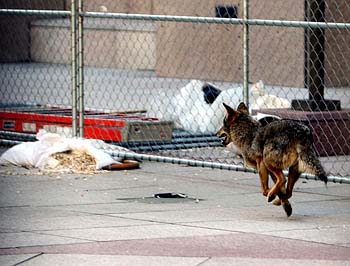
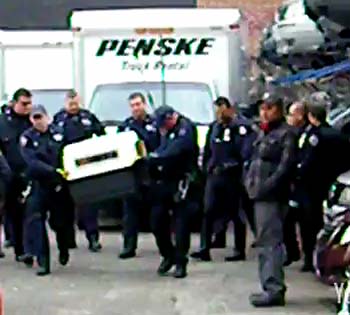
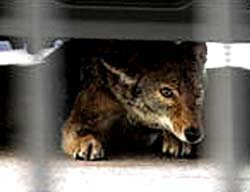

 This
was always one of his favorite things to do, even before the days
when my 11-year-old Labrador retriever couldn’t get out of
a car by himself. It was Saturday, earlier this month, and we’d
driven over to the little cottage I bought recently. As I led him
through the gate — I don’t know if Otto could see much
of anything on his own anymore — I realized the little front
yard looked like a fairyland with grape hyacinths everywhere, and
daffodils, and pink flowers creeping along the rocks.
This
was always one of his favorite things to do, even before the days
when my 11-year-old Labrador retriever couldn’t get out of
a car by himself. It was Saturday, earlier this month, and we’d
driven over to the little cottage I bought recently. As I led him
through the gate — I don’t know if Otto could see much
of anything on his own anymore — I realized the little front
yard looked like a fairyland with grape hyacinths everywhere, and
daffodils, and pink flowers creeping along the rocks. 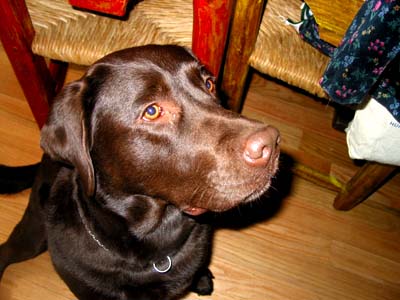
 yesterday
to hawk next month's return of King Tut artifacts to the city.
yesterday
to hawk next month's return of King Tut artifacts to the city. 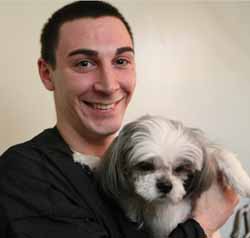 recently
minted dog groomer. Inspired by his mother, who died of lung cancer
in the summer of 2008, Mr. Lipariti pursued his dream of working
with animals by enrolling in the American Academy of Pet Grooming
last summer. He opened a grooming shop, Paws On!, in Gravesend,
Brooklyn, but the sputtering economy forced a quick closing. Now
he makes house calls, has a loyal client base and works at Puppy
City in Gravesend.
recently
minted dog groomer. Inspired by his mother, who died of lung cancer
in the summer of 2008, Mr. Lipariti pursued his dream of working
with animals by enrolling in the American Academy of Pet Grooming
last summer. He opened a grooming shop, Paws On!, in Gravesend,
Brooklyn, but the sputtering economy forced a quick closing. Now
he makes house calls, has a loyal client base and works at Puppy
City in Gravesend. 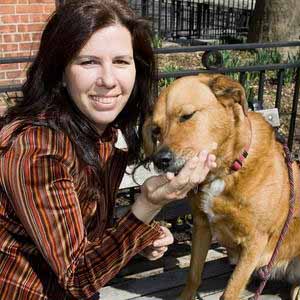 The
biz started out small, but immediately caught the attention of uber-chic
vegan bakery BabyCakes, purveyors of gluten-free, dairy-free sweet
treats for humans. At just $1.50 a piece, the doggie biscuits always
sold out fast. In fact, demand grew so quickly that Frey no longer
trades in small batches. She sells packaged K9 cookies online, at
biscuitsbylambchop.com, and at Bark Place on East 72nd Street.
The
biz started out small, but immediately caught the attention of uber-chic
vegan bakery BabyCakes, purveyors of gluten-free, dairy-free sweet
treats for humans. At just $1.50 a piece, the doggie biscuits always
sold out fast. In fact, demand grew so quickly that Frey no longer
trades in small batches. She sells packaged K9 cookies online, at
biscuitsbylambchop.com, and at Bark Place on East 72nd Street. 
 a
police-seized Escalade seconds before the SUV was engulfed by flames.
She was really just returning the favor.
a
police-seized Escalade seconds before the SUV was engulfed by flames.
She was really just returning the favor.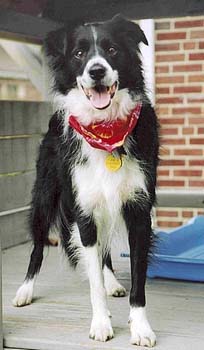 Clancy
(left) sit patiently in between takes for a Ralph Lauren children’s
clothing ad, which requires the dog to stay perfectly still while
being hugged by two unfamiliar kids.
Clancy
(left) sit patiently in between takes for a Ralph Lauren children’s
clothing ad, which requires the dog to stay perfectly still while
being hugged by two unfamiliar kids. 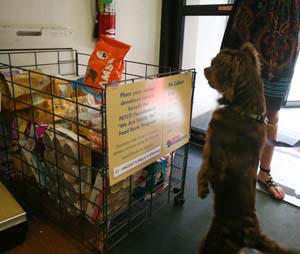 who
can no longer afford to feed their animals, according to the Humane
Society of the United States .
who
can no longer afford to feed their animals, according to the Humane
Society of the United States .
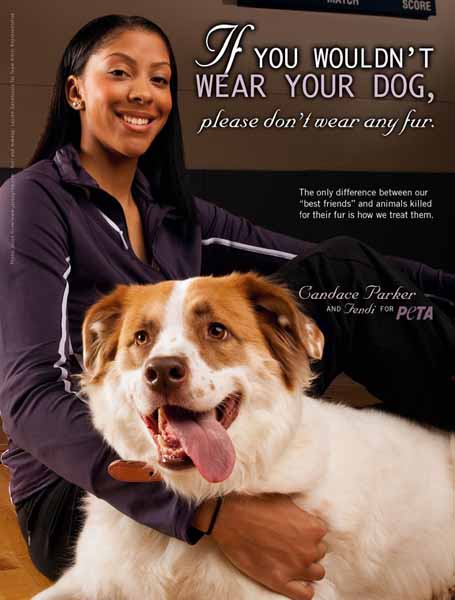
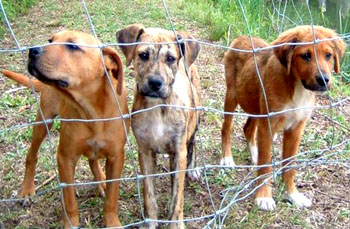 shelter
by passing a plan that shifts the focus from euthanizing stray and
abandoned animals to finding homes for them.
shelter
by passing a plan that shifts the focus from euthanizing stray and
abandoned animals to finding homes for them. 
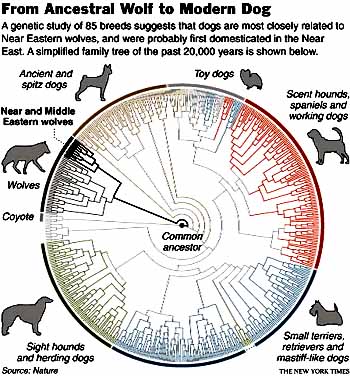 that
dogs were probably first domesticated from wolves somewhere
in the Middle East, in contrast to an earlier survey suggesting
dogs originated in East Asia.
that
dogs were probably first domesticated from wolves somewhere
in the Middle East, in contrast to an earlier survey suggesting
dogs originated in East Asia. 


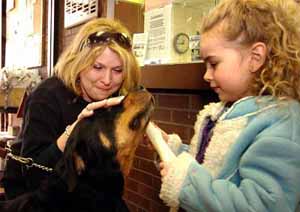 Riverside
backyard of the Simmons family. The pup had a microchip embedded
in him, but he never turned up despite a search that included
repeated calls to local vets and police departments.
Riverside
backyard of the Simmons family. The pup had a microchip embedded
in him, but he never turned up despite a search that included
repeated calls to local vets and police departments. 


 embarrassing.
But what's worse, he says, is for passers-by to have to walk by
the smelly stuff scattered across his neighborhood's sidewalks.
embarrassing.
But what's worse, he says, is for passers-by to have to walk by
the smelly stuff scattered across his neighborhood's sidewalks.
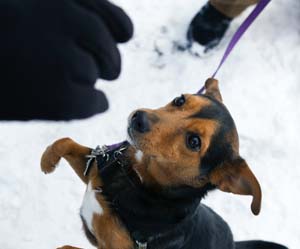 walking
a small terrier.
walking
a small terrier. 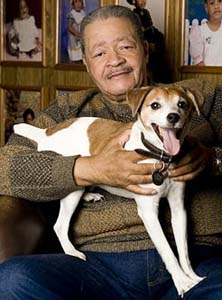 Bob
Kirkley of Brooklyn discovered when his terrier Buddy packed on
the pounds.
Bob
Kirkley of Brooklyn discovered when his terrier Buddy packed on
the pounds. 




 bring
prison time, some thugs use dogs to menace their victims. Now the
British government is proposing that dog owners be forced to get
microchips and take out insurance for their pets.
bring
prison time, some thugs use dogs to menace their victims. Now the
British government is proposing that dog owners be forced to get
microchips and take out insurance for their pets.  2006
is now being blamed by the Navy for neglecting dozens of bomb dogs,
three of which have died.
2006
is now being blamed by the Navy for neglecting dozens of bomb dogs,
three of which have died. 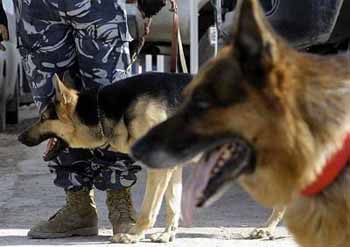 handlers
went to pick up the dogs from a Securitas facility near Chicago.
Two of the 49 dogs were dead and the rest were in poor health. Another
dog later died, the Navy spokesman said.
handlers
went to pick up the dogs from a Securitas facility near Chicago.
Two of the 49 dogs were dead and the rest were in poor health. Another
dog later died, the Navy spokesman said. 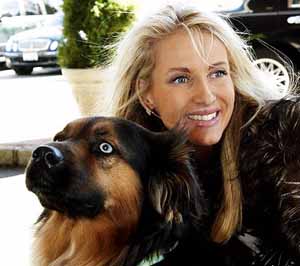 before
torching their New Jersey home and then killing herself. Carina Schlesinger
(left), a 36-year-old former model shot 29-year-old Daniel Cresci
and then set the Holmdel home ablaze before turning the gun on herself
Wednesday, First Assistant Monmouth County Prosecutor Peter Warshaw
Jr. said Friday.
before
torching their New Jersey home and then killing herself. Carina Schlesinger
(left), a 36-year-old former model shot 29-year-old Daniel Cresci
and then set the Holmdel home ablaze before turning the gun on herself
Wednesday, First Assistant Monmouth County Prosecutor Peter Warshaw
Jr. said Friday.  bulldog
puppy she bought from a Naperville pet store in December. Her 10-year-old
triplets agreed to forgo their Christmas presents to get the dog,
which cost more than $2,000.
bulldog
puppy she bought from a Naperville pet store in December. Her 10-year-old
triplets agreed to forgo their Christmas presents to get the dog,
which cost more than $2,000. 
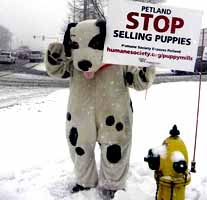
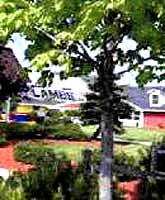
 Naperville
Petland store came from a local breeder. Later, Cantoral said, she
discovered the dog, Ralphy, came from a USDA-licensed facility in
Loogootee, Ind. A veterinarian who contracts with Petland deemed the
dog healthy during an exam within the first week, according to the
store's co-owner, Mike Isaac.
Naperville
Petland store came from a local breeder. Later, Cantoral said, she
discovered the dog, Ralphy, came from a USDA-licensed facility in
Loogootee, Ind. A veterinarian who contracts with Petland deemed the
dog healthy during an exam within the first week, according to the
store's co-owner, Mike Isaac. 
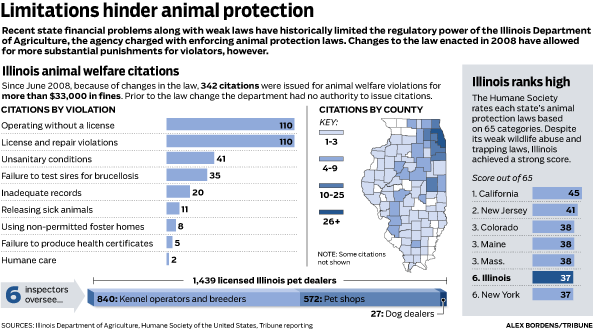
 pet
food was distributed until 7 p.m. Friday. Adoptable dogs and cats
from the North Shore Animal League America were also available to
meet and greet.
pet
food was distributed until 7 p.m. Friday. Adoptable dogs and cats
from the North Shore Animal League America were also available to
meet and greet.  performed
at ASPCA
Bergh Memorial
Animal Hospital confirmed that Patches’ cause of death
was indeed starvation.
performed
at ASPCA
Bergh Memorial
Animal Hospital confirmed that Patches’ cause of death
was indeed starvation.
 pets
inside.
pets
inside. 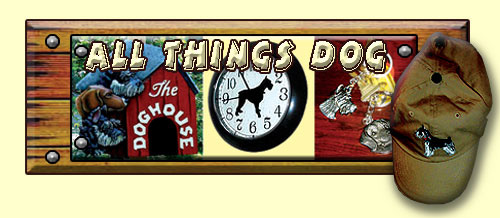



 powder
puff of a dog, for show time. He combs, spritzes and combs
some more. The bichon, officially named PaRay’s Rime
Time but known to friends and fans as Sloan, will soon glow
like a frosted, 60-watt light bulb.
powder
puff of a dog, for show time. He combs, spritzes and combs
some more. The bichon, officially named PaRay’s Rime
Time but known to friends and fans as Sloan, will soon glow
like a frosted, 60-watt light bulb.  look
alike. But judges and professional handlers say that once
you know the breed, the problem is that all the dogs look
different. The hard part isn’t telling them apart. It’s
figuring out which version of excellence to favor.
look
alike. But judges and professional handlers say that once
you know the breed, the problem is that all the dogs look
different. The hard part isn’t telling them apart. It’s
figuring out which version of excellence to favor.  he
is disturbed by rare reports of people mortgaging their homes
to show their dogs. And now that so many dogs have multiple
owners, he is done trying to read all of their names during
the telecast. “People say to me, ‘Why didn’t
you read off the names of all the owners?’ ”
he says. “Well, if the dog has six different owners,
that’s the only thing I’d get to say about the
dog.”
he
is disturbed by rare reports of people mortgaging their homes
to show their dogs. And now that so many dogs have multiple
owners, he is done trying to read all of their names during
the telecast. “People say to me, ‘Why didn’t
you read off the names of all the owners?’ ”
he says. “Well, if the dog has six different owners,
that’s the only thing I’d get to say about the
dog.”  themselves
on the nearest fire hydrant and forgo the after-party at Avenue. As
Madison Square Garden prepares to evaluate the canine crème
de la crème, The Post took David Frei, the show’s host
of 21 years and a licensed judge, to Tompkins Square Park to check
out the local talent.
themselves
on the nearest fire hydrant and forgo the after-party at Avenue. As
Madison Square Garden prepares to evaluate the canine crème
de la crème, The Post took David Frei, the show’s host
of 21 years and a licensed judge, to Tompkins Square Park to check
out the local talent.  and
instead concentrate on what makes the canines at the local dog park
unique.
and
instead concentrate on what makes the canines at the local dog park
unique.  her
client “has a Chihuahua sister — they have matching outfits.”
her
client “has a Chihuahua sister — they have matching outfits.”

 Pyrenean
Shepherd
Pyrenean
Shepherd Irish
Red and White Setter
Irish
Red and White Setter Norwegian
Buhund
Norwegian
Buhund
 other
cultures. Unfortunately, he takes the wrong lesson from his multicultural
experience. Mr. Cohen’s moral revulsion at eating dog was well-founded.
What he should have learned from his moment of clarity, however, is
that it is equally immoral to consume the pigs, cows, chickens, and
other sentient creatures on whom we inflict unspeakable suffering
and death. When we refuse to consume animal products, we reject the
injustice of treating any sentient creature as a thing for us to use.
Moral consistency does not require us to endorse the consumption of
dogs.
other
cultures. Unfortunately, he takes the wrong lesson from his multicultural
experience. Mr. Cohen’s moral revulsion at eating dog was well-founded.
What he should have learned from his moment of clarity, however, is
that it is equally immoral to consume the pigs, cows, chickens, and
other sentient creatures on whom we inflict unspeakable suffering
and death. When we refuse to consume animal products, we reject the
injustice of treating any sentient creature as a thing for us to use.
Moral consistency does not require us to endorse the consumption of
dogs.  Charles.
Covering almost 650 miles, the trek required the cooperation of several
pilots, a Kansas shelter, rescue organizations and one dedicated family.
Charles.
Covering almost 650 miles, the trek required the cooperation of several
pilots, a Kansas shelter, rescue organizations and one dedicated family.
 incriminating
statements to the ASPCA.
incriminating
statements to the ASPCA.  As
it happened, many of the dogs had business cards. Ginger, a teacup
Pomeranian, had one that proclaimed her director of pet relations
at the Muse. Eli’s noted that he was “The Celebrity Chihuahua.”
“Eli was on the Milk Bone box in 2005,” said Karen Biehl
(left), whose black satin and crystal-embellished shift matched her
dog’s black satin tuxedo and “bling” necktie. “I
had to get him an agent.” She offered perhaps the best decorating
advice for would-be dog owners: adopt a Chihuahua. “Eli’s
legs are so short, he can’t jump on the furniture.”
As
it happened, many of the dogs had business cards. Ginger, a teacup
Pomeranian, had one that proclaimed her director of pet relations
at the Muse. Eli’s noted that he was “The Celebrity Chihuahua.”
“Eli was on the Milk Bone box in 2005,” said Karen Biehl
(left), whose black satin and crystal-embellished shift matched her
dog’s black satin tuxedo and “bling” necktie. “I
had to get him an agent.” She offered perhaps the best decorating
advice for would-be dog owners: adopt a Chihuahua. “Eli’s
legs are so short, he can’t jump on the furniture.”  are
replacing them might include fakes that will infect your computer
with malware.
are
replacing them might include fakes that will infect your computer
with malware.
 NEUROSCIENTIST?
NEUROSCIENTIST?
 Over
1,600 hand-set diamonds adorn Amour, Amour 's chandelier design that
features a stunning 7-carat, D-IF, brilliant-shaped centerpiece. The
luster of platinum showcases the diamonds' radiance, while 18-karat
white gold provides the strength for this precious piece to last a
lifetime. Exotic crocodile leather provides comfort and durability
for the pampered pooch with the privilege to wear this exclusive collar.
Over
1,600 hand-set diamonds adorn Amour, Amour 's chandelier design that
features a stunning 7-carat, D-IF, brilliant-shaped centerpiece. The
luster of platinum showcases the diamonds' radiance, while 18-karat
white gold provides the strength for this precious piece to last a
lifetime. Exotic crocodile leather provides comfort and durability
for the pampered pooch with the privilege to wear this exclusive collar.
 Also
for sale will be the much more affordable "La Jeune Tulipe".
Its intricate arrangement of marquise, pear, and brilliant-shaped
diamonds, as well as the 1.52-carat marquise-cut diamond that blooms
as the focal point of the extraordinary collar, makes the 15.6-carat
La Jeune Tulipe one of the crown jewels of the canine kingdom. Only
$150,000.
Also
for sale will be the much more affordable "La Jeune Tulipe".
Its intricate arrangement of marquise, pear, and brilliant-shaped
diamonds, as well as the 1.52-carat marquise-cut diamond that blooms
as the focal point of the extraordinary collar, makes the 15.6-carat
La Jeune Tulipe one of the crown jewels of the canine kingdom. Only
$150,000.
 Westminster
Kennel Club show at Madison Square Garden, there is one that is definitely
not a pampered pooch. When Zorro, a 6-year-old Belgian Malinois, is
not on display, parading before a row of judges, he is at the side
of his disabled handler, faithfully filling in where her own body
fails her.
Westminster
Kennel Club show at Madison Square Garden, there is one that is definitely
not a pampered pooch. When Zorro, a 6-year-old Belgian Malinois, is
not on display, parading before a row of judges, he is at the side
of his disabled handler, faithfully filling in where her own body
fails her.  their
antics on the web. Visit Trent Boswick’s blog, Dogs 4 Point
Pleasant Park .
their
antics on the web. Visit Trent Boswick’s blog, Dogs 4 Point
Pleasant Park .

 WHILE
dog boots might look like the sort of fashion indignity that Paris
Hilton would inflict on Tinkerbell, it turns out that in winter they
serve a practical purpose.
WHILE
dog boots might look like the sort of fashion indignity that Paris
Hilton would inflict on Tinkerbell, it turns out that in winter they
serve a practical purpose.  Dogs
Instead of Devices for Iraq Bomb Detection
Dogs
Instead of Devices for Iraq Bomb Detection
 eliminate
life- saving protections for any wolf that enters the state. The goal
of this bill is to prevent wolves from returning to their historic
habitat in Utah. No state has a right to ban native wildlife from
its borders.
eliminate
life- saving protections for any wolf that enters the state. The goal
of this bill is to prevent wolves from returning to their historic
habitat in Utah. No state has a right to ban native wildlife from
its borders.

 pound
dog with a belt after she had left the pup with him to go out of town
for an acting gig, authorities said.
pound
dog with a belt after she had left the pup with him to go out of town
for an acting gig, authorities said.  whose
most famous work was the Dog Chapel , a hand-built church in Vermont
to which dogs and their owners can go for quiet reflection and spiritual
renewal, died on Jan. 7 in Littleton, N.H. He was 61 and lived in
St. Johnsbury, Vt.
whose
most famous work was the Dog Chapel , a hand-built church in Vermont
to which dogs and their owners can go for quiet reflection and spiritual
renewal, died on Jan. 7 in Littleton, N.H. He was 61 and lived in
St. Johnsbury, Vt.  widely
and featured often in the news media. The Dog Chapel has been a popular
tourist attraction since it opened in 2000.
widely
and featured often in the news media. The Dog Chapel has been a popular
tourist attraction since it opened in 2000. 
 Snoopys
-- they're abandoned hunting dogs that live in packs and have gone
from humble pets to hounds from hell.
Snoopys
-- they're abandoned hunting dogs that live in packs and have gone
from humble pets to hounds from hell.  and
Broadway. The tail, an ordinary brown one, was sticking out of the
dressing room next door. I never did see the dog’s body or the
master of the animal, who was, presumably, deciding whether to buy
just the black T-shirt, or the red one as well.
and
Broadway. The tail, an ordinary brown one, was sticking out of the
dressing room next door. I never did see the dog’s body or the
master of the animal, who was, presumably, deciding whether to buy
just the black T-shirt, or the red one as well.  to
say “master” anymore — there seems to be so little
mastery of impulses here) scrutinized a white couch. Recently a huge
dog in a small grocery store in the West Village swept a shelf of
cans to the floor with its tail. The owner smiled grimly as he picked
the stuff up.
to
say “master” anymore — there seems to be so little
mastery of impulses here) scrutinized a white couch. Recently a huge
dog in a small grocery store in the West Village swept a shelf of
cans to the floor with its tail. The owner smiled grimly as he picked
the stuff up.  told
by a dog’s human that I was “very rude” when I pointed
out that she was breaking the law by having her dog at her side while
she ordered food. The workers said nothing, copping out with the excuse
that the boss was absent.
told
by a dog’s human that I was “very rude” when I pointed
out that she was breaking the law by having her dog at her side while
she ordered food. The workers said nothing, copping out with the excuse
that the boss was absent.  Wrestler”
while holding his Chihuahua, Loki. And a few weeks later, when he
won best actor at the 2009 Golden Globes and thanked Loki and his
other dogs for getting him through the years when he had no one, I
teared up. I feel the same about my dog, Shadow, even though Shadow
and I don’t get the same welcome reception wherever we go.
Wrestler”
while holding his Chihuahua, Loki. And a few weeks later, when he
won best actor at the 2009 Golden Globes and thanked Loki and his
other dogs for getting him through the years when he had no one, I
teared up. I feel the same about my dog, Shadow, even though Shadow
and I don’t get the same welcome reception wherever we go.  promising
to take care of it, arguing how our family wouldn’t be complete
until we had one. But after we rented that movie, in which humans
can’t really find happiness without a canine pal, our kids became
inconsolable in their dogless sorrow. Moaning, wailing — you’d
have thought they severed an artery.
promising
to take care of it, arguing how our family wouldn’t be complete
until we had one. But after we rented that movie, in which humans
can’t really find happiness without a canine pal, our kids became
inconsolable in their dogless sorrow. Moaning, wailing — you’d
have thought they severed an artery.  I
think dog ownership, or cohabitation, really, teaches you a lesson
no matter what. For most people that lesson is about the way love
and simplicity and togetherness can provide respite from the slings
and arrows of our human days. For me, it’s about accepting Dave
for who he is. I’m sure he’d rather not fly into a dizzying
rage whenever he sees me. Can’t be any fun for him. But he is
who he is, just like all of us. I picked Dave’s name because
it sounded human. I had no idea how prescient I was.
I
think dog ownership, or cohabitation, really, teaches you a lesson
no matter what. For most people that lesson is about the way love
and simplicity and togetherness can provide respite from the slings
and arrows of our human days. For me, it’s about accepting Dave
for who he is. I’m sure he’d rather not fly into a dizzying
rage whenever he sees me. Can’t be any fun for him. But he is
who he is, just like all of us. I picked Dave’s name because
it sounded human. I had no idea how prescient I was. 

 Retriever
remains the top dog -- just as it has for the past 19 years.
Retriever
remains the top dog -- just as it has for the past 19 years. 
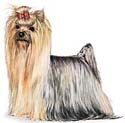








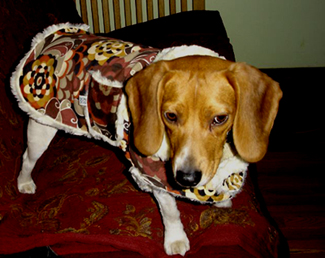 an
orange wool sweater, complete with hood. Whenever the wind picks up,
his owner, Lauren Costa, 31, pulls the knitted headgear tight over
his furry face. “I put a sweater on him for anything under 50
degrees,” explains Costa. “I make sure it’s on because
I don’t want him to get sick.”
an
orange wool sweater, complete with hood. Whenever the wind picks up,
his owner, Lauren Costa, 31, pulls the knitted headgear tight over
his furry face. “I put a sweater on him for anything under 50
degrees,” explains Costa. “I make sure it’s on because
I don’t want him to get sick.”  is
making himself at home on the Polish research ship whose crew rescued
him, the captain said Friday.
is
making himself at home on the Polish research ship whose crew rescued
him, the captain said Friday.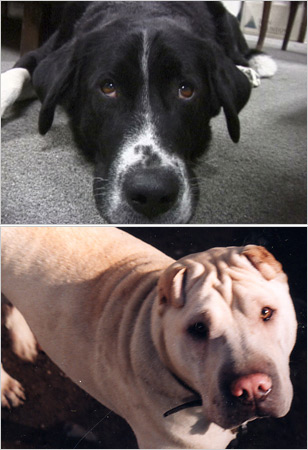 Harry
(top) on Friday evening, and his compatriot Bix (bottom) on Saturday.
They were virtual centenarians. Both were wildly popular, highly visible
and on a one-name basis with their piece of the Upper West Side: Harry
for a debonair self-assurance reminiscent of Cary Grant, Bix for his
diplomatic skills and soulful eyes.
Harry
(top) on Friday evening, and his compatriot Bix (bottom) on Saturday.
They were virtual centenarians. Both were wildly popular, highly visible
and on a one-name basis with their piece of the Upper West Side: Harry
for a debonair self-assurance reminiscent of Cary Grant, Bix for his
diplomatic skills and soulful eyes.
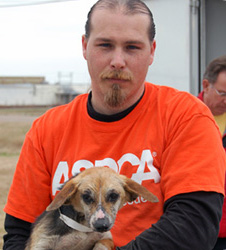 dispatched
members of our Field Investigations and Response Team to assist in
the removal of more than 400 cats and dogs from the City of Clarksdale
Animal Shelter.
dispatched
members of our Field Investigations and Response Team to assist in
the removal of more than 400 cats and dogs from the City of Clarksdale
Animal Shelter. ASPCA,
bound for New York City and several rescues based in Vermont and Delaware.
The Atlanta Humane Society is transporting at least 100 animals to
Georgia, and countless other shelters, individuals and organizations
are offering their critical support in the rescue and temporary housing
of the animals, including:
ASPCA,
bound for New York City and several rescues based in Vermont and Delaware.
The Atlanta Humane Society is transporting at least 100 animals to
Georgia, and countless other shelters, individuals and organizations
are offering their critical support in the rescue and temporary housing
of the animals, including: dogs,
cats and other small household pets, will begin construction later
this year thanks to the support of many professional and educational
organizations and individuals. The ASPCA
made an initial grant of $250,000 toward the project, and with the
long-awaited Center soon to become a reality, the ASPCA
is following up on our commitment by granting an additional $25,000.
dogs,
cats and other small household pets, will begin construction later
this year thanks to the support of many professional and educational
organizations and individuals. The ASPCA
made an initial grant of $250,000 toward the project, and with the
long-awaited Center soon to become a reality, the ASPCA
is following up on our commitment by granting an additional $25,000.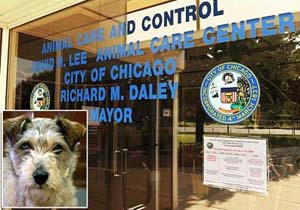 Security
numbers and undergo criminal background checks in a crackdown that,
some volunteers warn, could trigger a mass exodus of pivotal unpaid
help.
Security
numbers and undergo criminal background checks in a crackdown that,
some volunteers warn, could trigger a mass exodus of pivotal unpaid
help.  Best
Friends Animal Society has announced a donation of $25,000 toward
the coalition’s relief effort. Best Friends is one of 14 animal
welfare organizations from inside and outside of the United States
that are part of the ARCH group.
Best
Friends Animal Society has announced a donation of $25,000 toward
the coalition’s relief effort. Best Friends is one of 14 animal
welfare organizations from inside and outside of the United States
that are part of the ARCH group. 
 Los
Angeles River on Friday is not holding it against the frightened dog.
Los
Angeles River on Friday is not holding it against the frightened dog.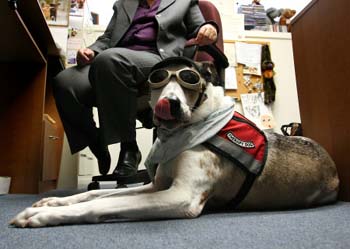 she
didn't want to live anymore. She was hysterical, weeping, shaking.
The 4 foot 9, 100-pound woman walked nearly a mile from her house
to the restaurant in Holiday. She said her son beat her and her dog
all the time. He used the dog to control her, threatening to kick
him if she didn't give him what he wanted. That morning, she said
he slapped her about the head to get her to sell her house, so he
could have the money. "I can't live like this anymore,"
she said, according to records.
she
didn't want to live anymore. She was hysterical, weeping, shaking.
The 4 foot 9, 100-pound woman walked nearly a mile from her house
to the restaurant in Holiday. She said her son beat her and her dog
all the time. He used the dog to control her, threatening to kick
him if she didn't give him what he wanted. That morning, she said
he slapped her about the head to get her to sell her house, so he
could have the money. "I can't live like this anymore,"
she said, according to records. host,
jewelry designer, businesswoman, best-selling author, red carpet fashion
roaster, reality TV star and plastic surgery zealot — that about
the only time she sits is for hair and makeup. Occasionally she puts
up her feet, but only for an eye lift or tummy tuck.
host,
jewelry designer, businesswoman, best-selling author, red carpet fashion
roaster, reality TV star and plastic surgery zealot — that about
the only time she sits is for hair and makeup. Occasionally she puts
up her feet, but only for an eye lift or tummy tuck.  friend.
friend.
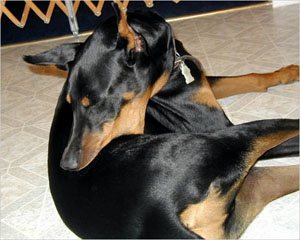 certain
breeds, including Dobermans.
certain
breeds, including Dobermans. 
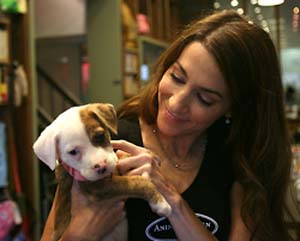 to
Wonderdog,” and for 15 years has run her own dog education/behavior
modification business from three locations in Manhattan, including
Animal Haven, a shelter on Centre Street. Separated from her husband,
she lives in Red Hook, Brooklyn, with two Dobermans, two Savannah
cats and her scruffy white terrier mix, Nora.
to
Wonderdog,” and for 15 years has run her own dog education/behavior
modification business from three locations in Manhattan, including
Animal Haven, a shelter on Centre Street. Separated from her husband,
she lives in Red Hook, Brooklyn, with two Dobermans, two Savannah
cats and her scruffy white terrier mix, Nora. Township
Department of Public Works employees were "keeping their fingers
crossed."
Township
Department of Public Works employees were "keeping their fingers
crossed."
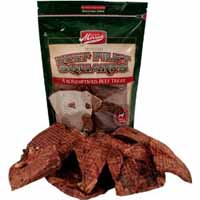 Beef
Filet Squares if the package date says “Best By 111911”
because of possible Salmonella contamination.
Beef
Filet Squares if the package date says “Best By 111911”
because of possible Salmonella contamination. 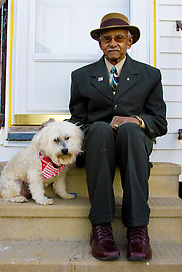 Hurricane
Katrina and the devastation wreaked both by the storm and by human
error and indifference. While many victims in the movie will look
familiar — whether waving from their New Orleans rooftops after
the levees broke in 2005 or talking about their ruined lives and homes
afterward — the majority of the victims here have usually been
seen only in the background, forlornly howling and wagging their tails.
Hurricane
Katrina and the devastation wreaked both by the storm and by human
error and indifference. While many victims in the movie will look
familiar — whether waving from their New Orleans rooftops after
the levees broke in 2005 or talking about their ruined lives and homes
afterward — the majority of the victims here have usually been
seen only in the background, forlornly howling and wagging their tails.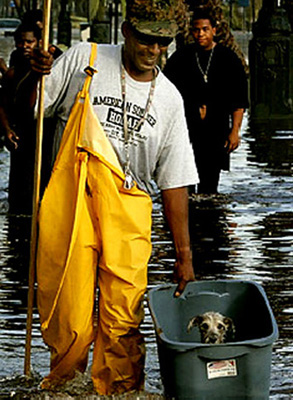 and,
at 81 minutes, far too short for the scope of its ambitions —
but it’s smart, sincere and affecting. The emotional impact
deepens as Ms. Pezanoski begins to narrow her focus, interviewing
residents like Mr. Cavalier, along with Jessie Pullins and Gloria
Richardson, two other pet owners who were separated from their animals.
Mr. Pullins named his cute mutt J. J., as in Jessie Jr., and hangs
onto memories of his dog as if the animal were hope itself. Ms. Richardson
is an elderly woman who was forcibly removed from her home, even after
she insisted on not being separated from her Labrador, Murphy Brown.
(All the separation stories are about dogs.)
and,
at 81 minutes, far too short for the scope of its ambitions —
but it’s smart, sincere and affecting. The emotional impact
deepens as Ms. Pezanoski begins to narrow her focus, interviewing
residents like Mr. Cavalier, along with Jessie Pullins and Gloria
Richardson, two other pet owners who were separated from their animals.
Mr. Pullins named his cute mutt J. J., as in Jessie Jr., and hangs
onto memories of his dog as if the animal were hope itself. Ms. Richardson
is an elderly woman who was forcibly removed from her home, even after
she insisted on not being separated from her Labrador, Murphy Brown.
(All the separation stories are about dogs.)  is
good for us. In fact, many common household goods that we take for
granted as harmless can poison our furry friends. In 2009, the ASPCA
Animal Poison Control Center in Urbana, IL, handled more than 140,000
cases of pets exposed to toxic household substances, including insecticides,
cleaning supplies and prescription medications.
is
good for us. In fact, many common household goods that we take for
granted as harmless can poison our furry friends. In 2009, the ASPCA
Animal Poison Control Center in Urbana, IL, handled more than 140,000
cases of pets exposed to toxic household substances, including insecticides,
cleaning supplies and prescription medications.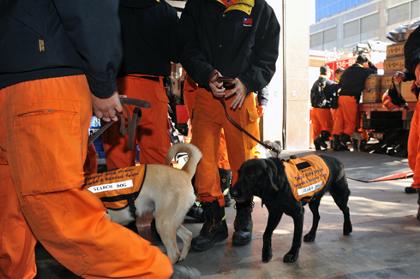


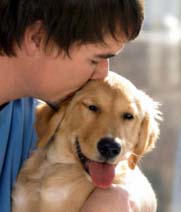 wake
of Hurricane Katrina, he followed orders from city officials and left
his 3-year-old black Labrador retriever mix, JJ, enclosed in a room
in his home with plenty of food and water. Pullins had been through
hurricanes before. He left for Baton Rouge assuming he’d be
back in a couple of days.
wake
of Hurricane Katrina, he followed orders from city officials and left
his 3-year-old black Labrador retriever mix, JJ, enclosed in a room
in his home with plenty of food and water. Pullins had been through
hurricanes before. He left for Baton Rouge assuming he’d be
back in a couple of days. 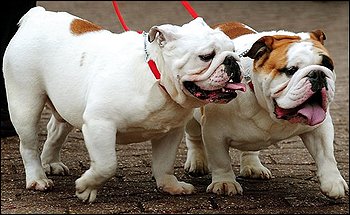 breeding
standards and better education to curb deformity and disease caused
by the quest for the best beagle or the perfect Pekingese. Thursday's
report by a leading biologist comes after sponsors shunned the country's
most famous dog show over cruelty claims.
breeding
standards and better education to curb deformity and disease caused
by the quest for the best beagle or the perfect Pekingese. Thursday's
report by a leading biologist comes after sponsors shunned the country's
most famous dog show over cruelty claims. 
 according
to the U.S. Department of Agriculture.
according
to the U.S. Department of Agriculture. relaxing,
and was given a mild sedative. A cross-country plane ride from San
Francisco to New York City will do that to you - especially if you
happen to be an eight-pound dog.
relaxing,
and was given a mild sedative. A cross-country plane ride from San
Francisco to New York City will do that to you - especially if you
happen to be an eight-pound dog. 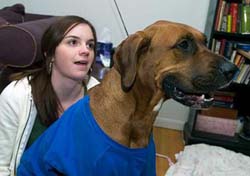 machine.
machine. has
skyrocketed after the Dec. 31 closing of Dairyland Greyhound Park
in Kenosha. Closing was attributed to declining revenues in 2009.
In late December, the park's kennels housed about 490 dogs, down from
approximately 800 dogs in August, said Bill Apgar, general manager
of the Wisconsin racetrack.
has
skyrocketed after the Dec. 31 closing of Dairyland Greyhound Park
in Kenosha. Closing was attributed to declining revenues in 2009.
In late December, the park's kennels housed about 490 dogs, down from
approximately 800 dogs in August, said Bill Apgar, general manager
of the Wisconsin racetrack. member
for Greyhounds Only, the rescue group that serves the Chicago area
and southeastern Wisconsin. Greyhounds Only (
member
for Greyhounds Only, the rescue group that serves the Chicago area
and southeastern Wisconsin. Greyhounds Only (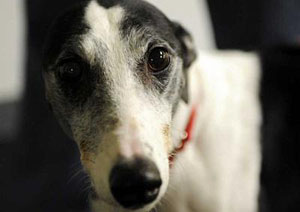 At press time Greyhounds Only had more than 40 dogs from the racetrack
up for adoption. One of the greyhounds is Zippy (left), a 4-year-old
female. Zippy's racing name was Zippo Dipper and she won eight of
the 79 races that she competed in.
At press time Greyhounds Only had more than 40 dogs from the racetrack
up for adoption. One of the greyhounds is Zippy (left), a 4-year-old
female. Zippy's racing name was Zippo Dipper and she won eight of
the 79 races that she competed in.
 2010
2010


